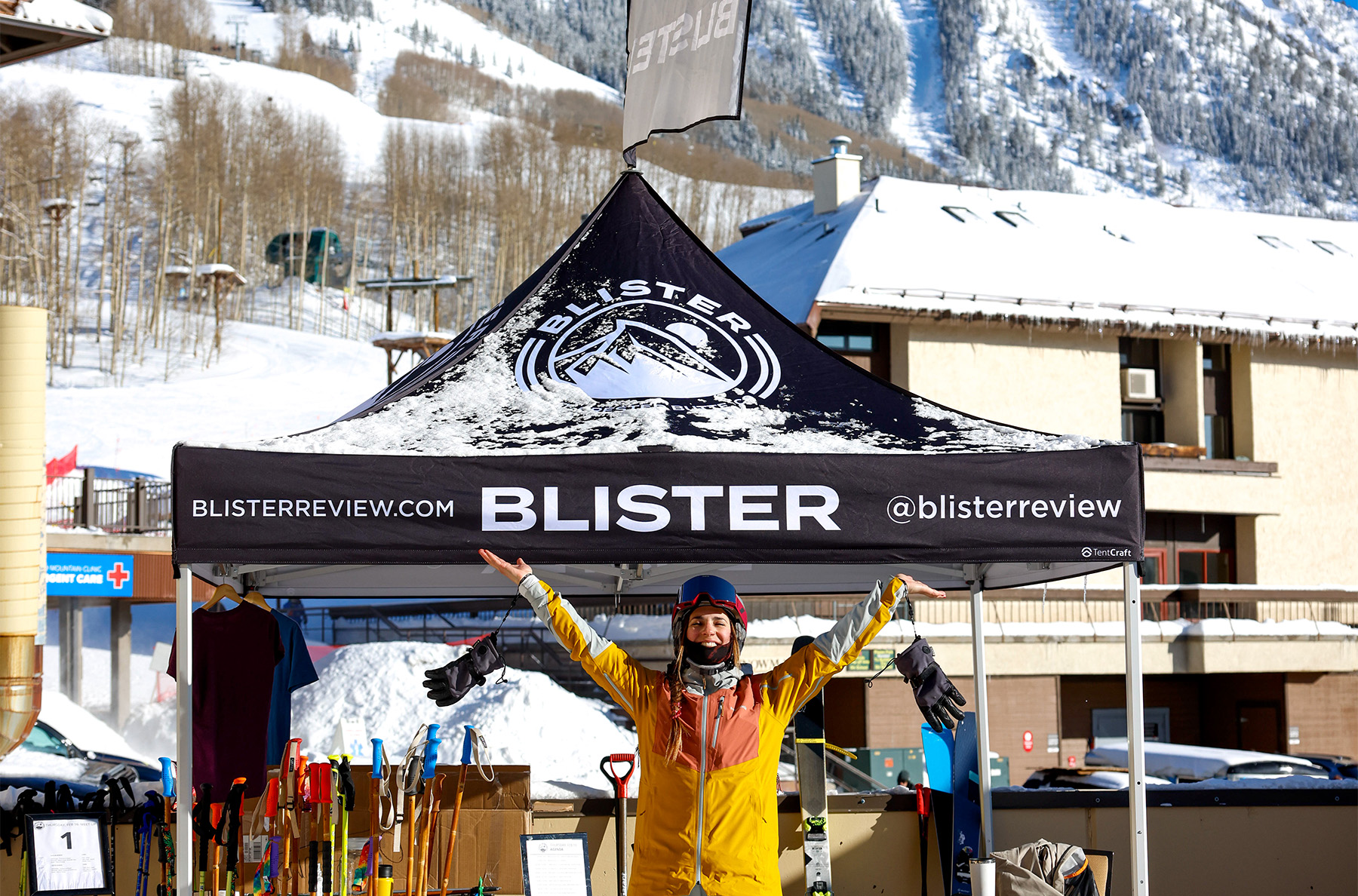
Intro
Last week at our 2023 Blister Summit we did, well, a lot of things. Attendees, athletes, vendors, and our Blister Reviewers all tested a whole bunch of ski and snowboard gear, in conditions ranging from deep pow to bluebird chalk. Each night we also got to hear from all sorts of industry leaders, with topics ranging from boot and binding design to ski manufacturing, tech in the backcountry, and a whole lot more. And of course, we had plenty of other conversations on the mountain, in the booth areas, and at apres.
We’ll be posting (on our YouTube channel) videos of the panel sessions, as well as the more than twenty Blister Summit Brand Lineup videos we also filmed at the Summit, which cover all the new products we’ll be seeing from these brands this fall (and that we were testing this past week). But in the meantime, we wanted to compile some information on all of the new 2023-2024 gear that was unveiled at the Summit. We’ll be updating this post as we get more details and photos for all the new products (there’s a lot…), but for now, let’s just dive right in:
4FRNT Skis
4FRNT had their whole lineup available for testing at the Summit, including the recently released MSP 91 that we first started testing at Blister Summit 2022, and that we now have in for a long-term review (see our Flash Review of the MSP 91).
But they also had a new ski: the prototype for the 23/24 MSP 99. The MSP 99 has been constructionally unchanged for several years now, not that we’re complaining — it’s a ski that we’ve found to be exceptionally versatile in terms of not only conditions, but also what sort of skiers can get along with it. It’s damp and stable enough to be enjoyed by very aggressive skiers, but relative to that, it’s surprisingly accessible and doesn’t need to be skied hard to be enjoyable.
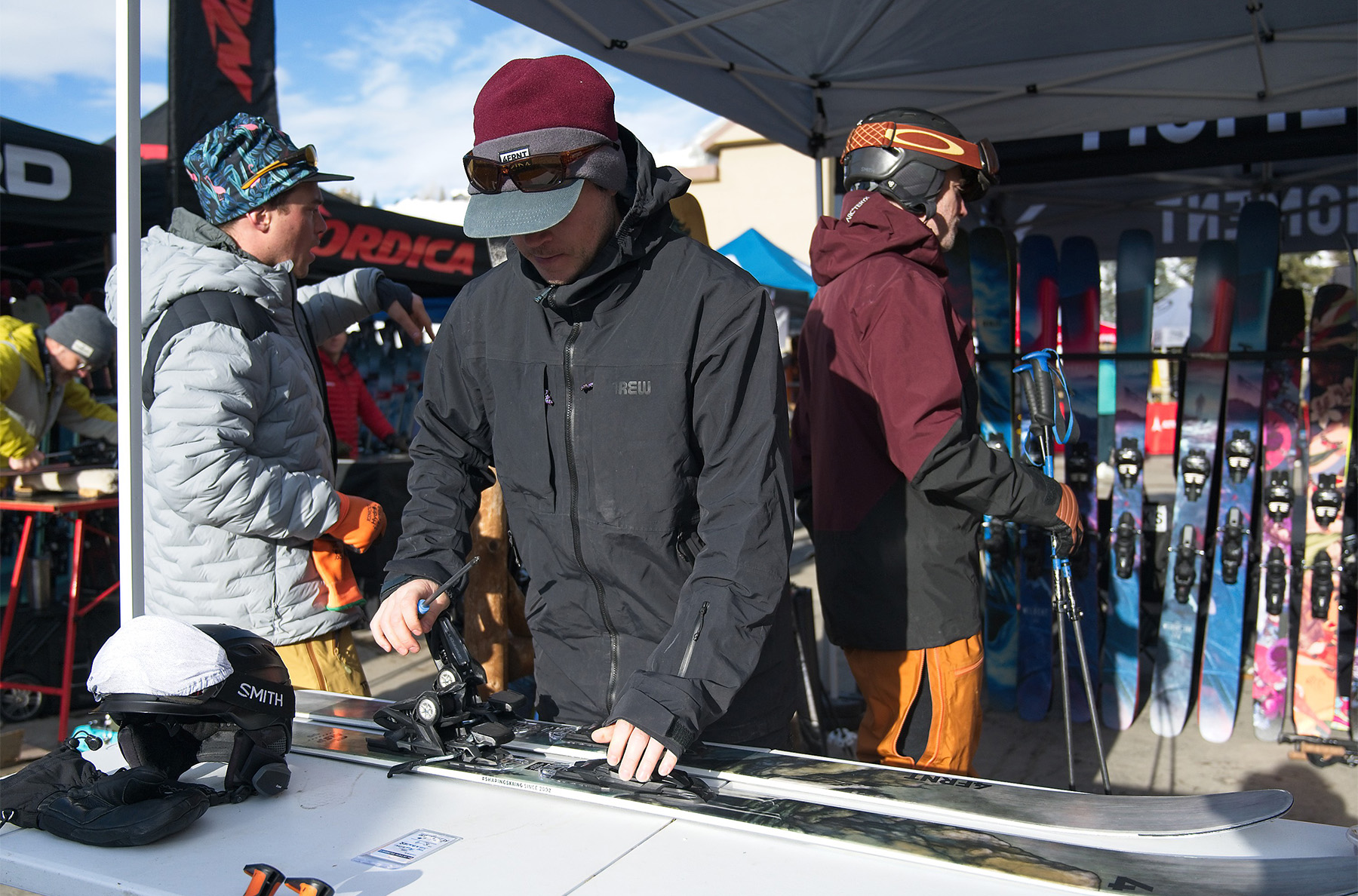
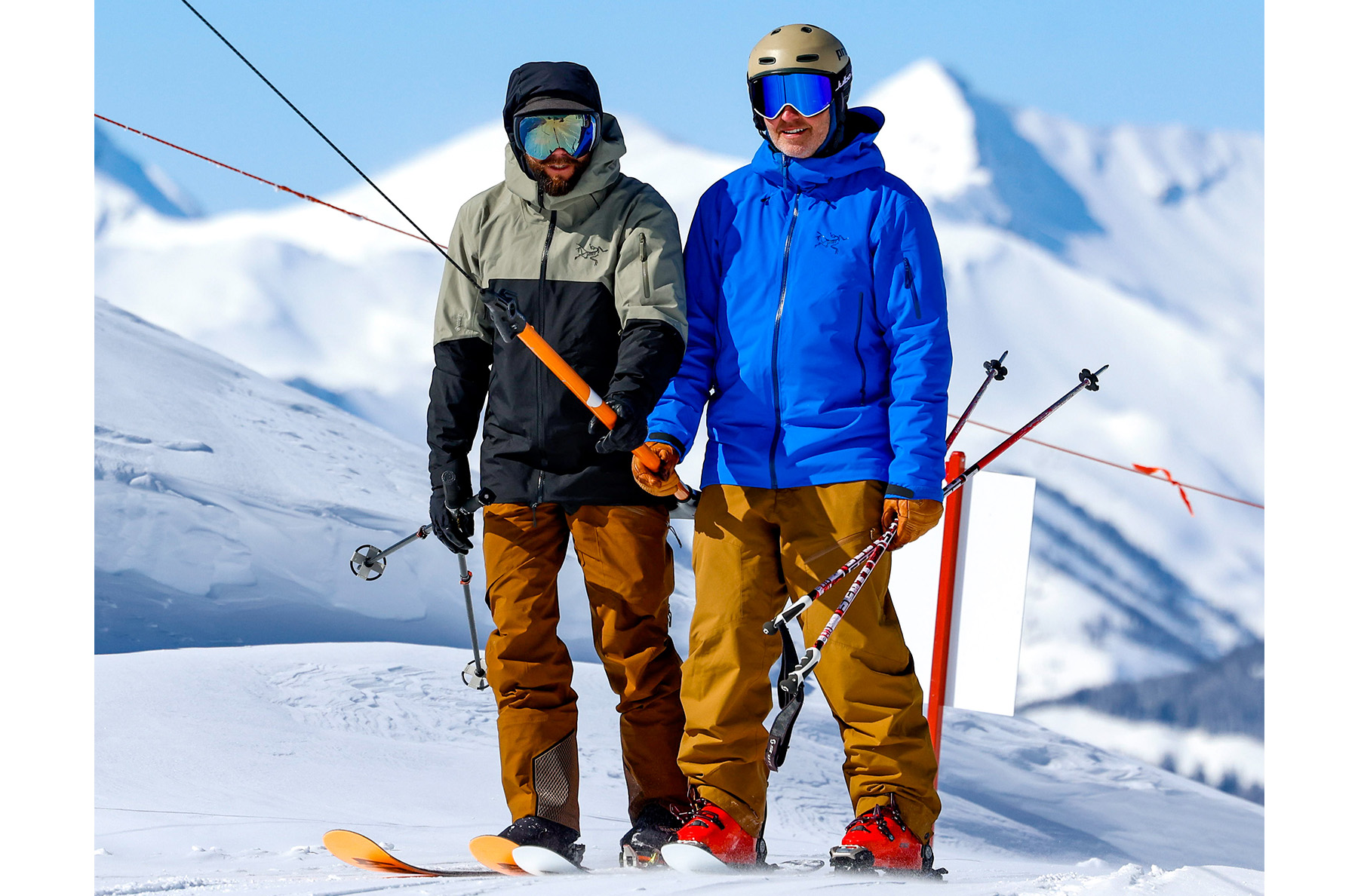
For the 23/24 prototype, the folks at 4FRNT said one of their main priorities was to make the ski a bit more energetic / lively, without compromising what makes the current version so versatile. The new ski is still a directional, metal-laminate all-mountain ski, but 4FRNT is playing around with some tweaks to the construction to make it a bit more dynamic and poppy. We’ll have more info about the new MSP 99 in the future.
Atomic Skis & Boots
We mostly see graphic updates for Atomic’s 23/24 skis. The Bent family (85, 90, 100, 110, 120) was updated last year and the 23/24 graphics look fantastic, thanks to Chris Benchetler, who recently became Atomic’s Creative Director. The all-mountain collection (Maverick & Maven) also get graphic updates, as do the backcountry / touring Backland skis.
We see more changes on the boot side. As we’ve discussed at length on our GEAR:30 podcast with Atomic’s Matt Manser, they added a new series, the Backland XTD, as well as BOA-dial-equipped versions of the Hawx Ultra XTD boots. The Backland XTD boots fill the gap between the more uphill-oriented Backland models and more downhill-oriented Hawx XTD boots, and you can read our First Looks and Flash Reviews of both the Backland XTD 120 and Hawx Ultra XTD 130 BOA for more info.
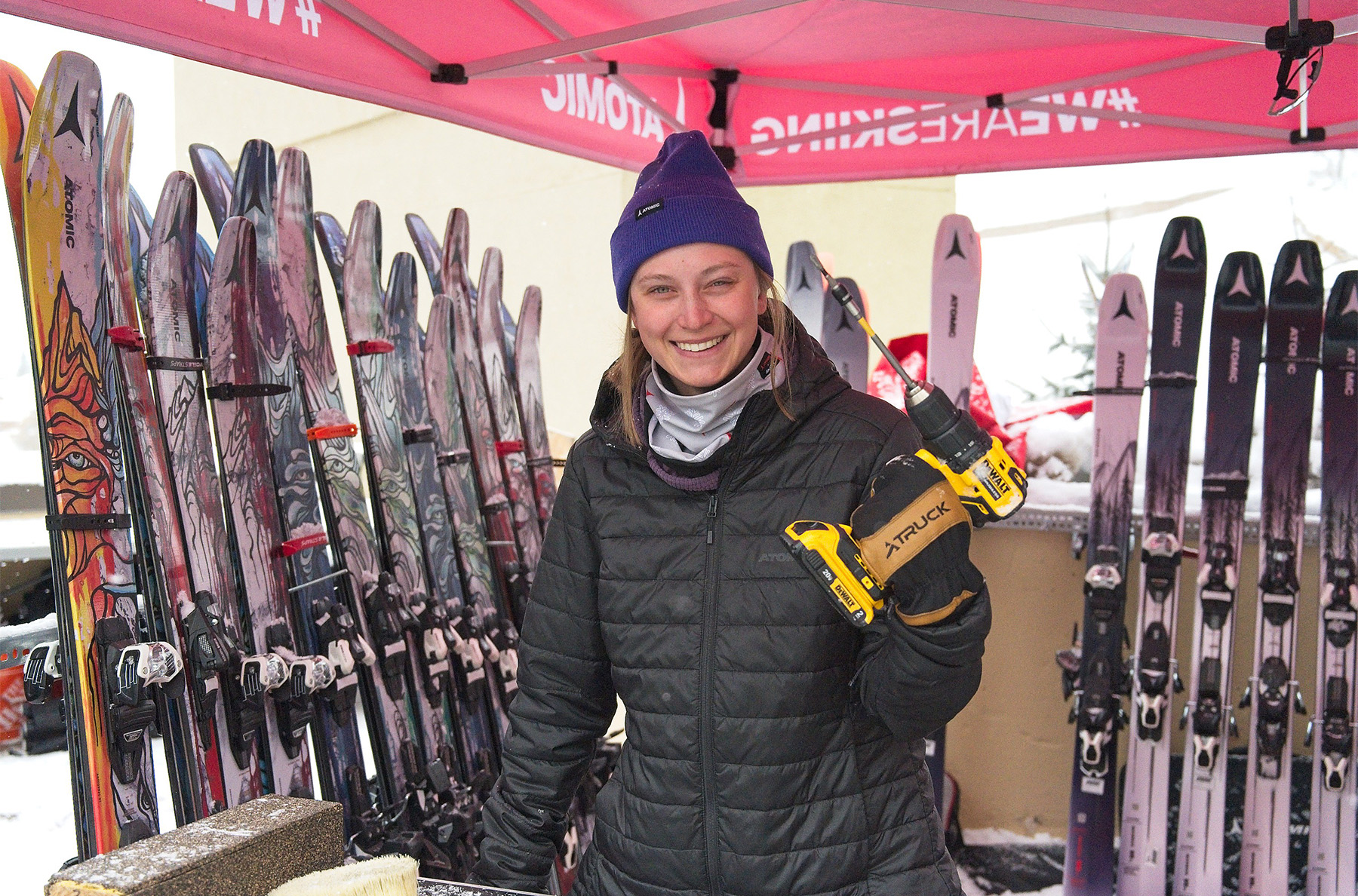
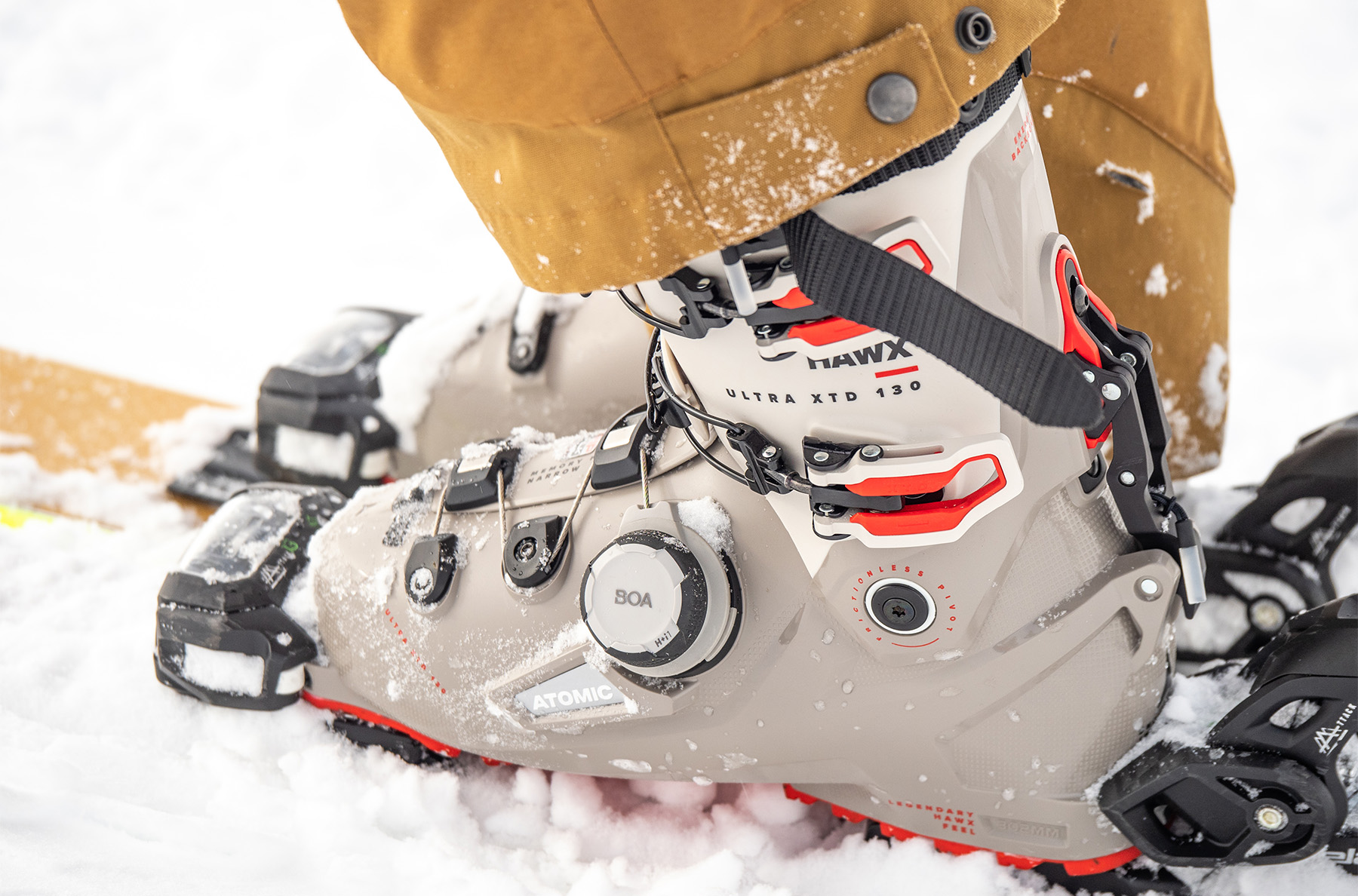
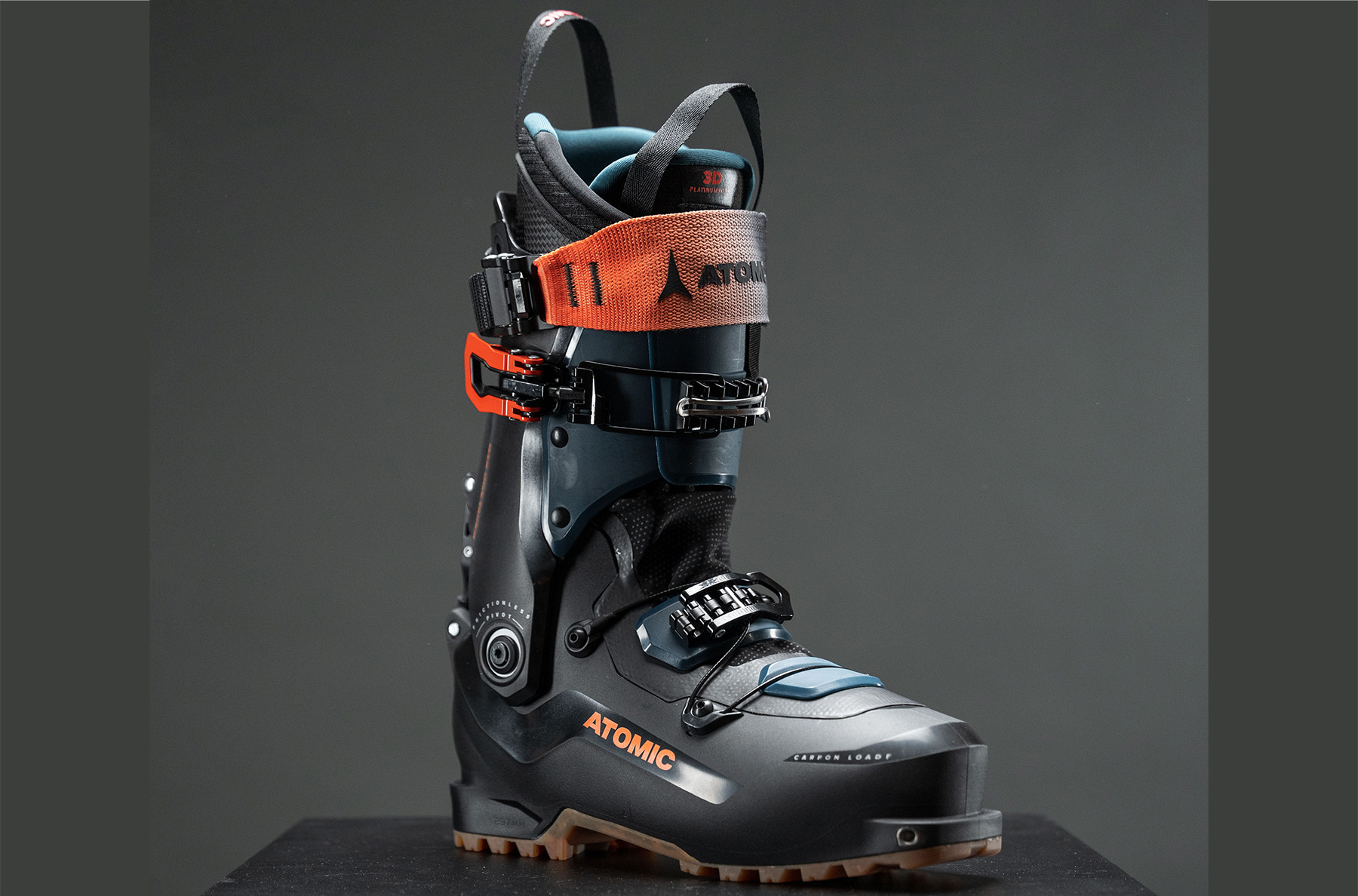
Blizzard Skis
For 23/24, Blizzard’s main focus is on their freeride-oriented Rustler and Sheeva skis. You can learn more in our writeup here, but the updates are more evolution than revolution. The narrower Rustler / Sheeva 9 and Rustler / Sheeva 10 get slightly shallower rocker lines for a reportedly more cohesive overall design and better performance on firm snow, and all the skis get a new construction. They feature Blizzard’s complex “TrueBlend” wood core, as well as “FluxForm” — essentially, that consists of pieces of titanal metal that lay over the edges of the ski but not the middle, and then another metal plate under the bindings (Rustler) or a layer of fiberglass (Sheeva). We’re spending time on all the new Rustlers and Sheevas and Blister Members can check out our Flash Reviews of the Sheeva 9 and Sheeva 10, as well as the Rustler 11.
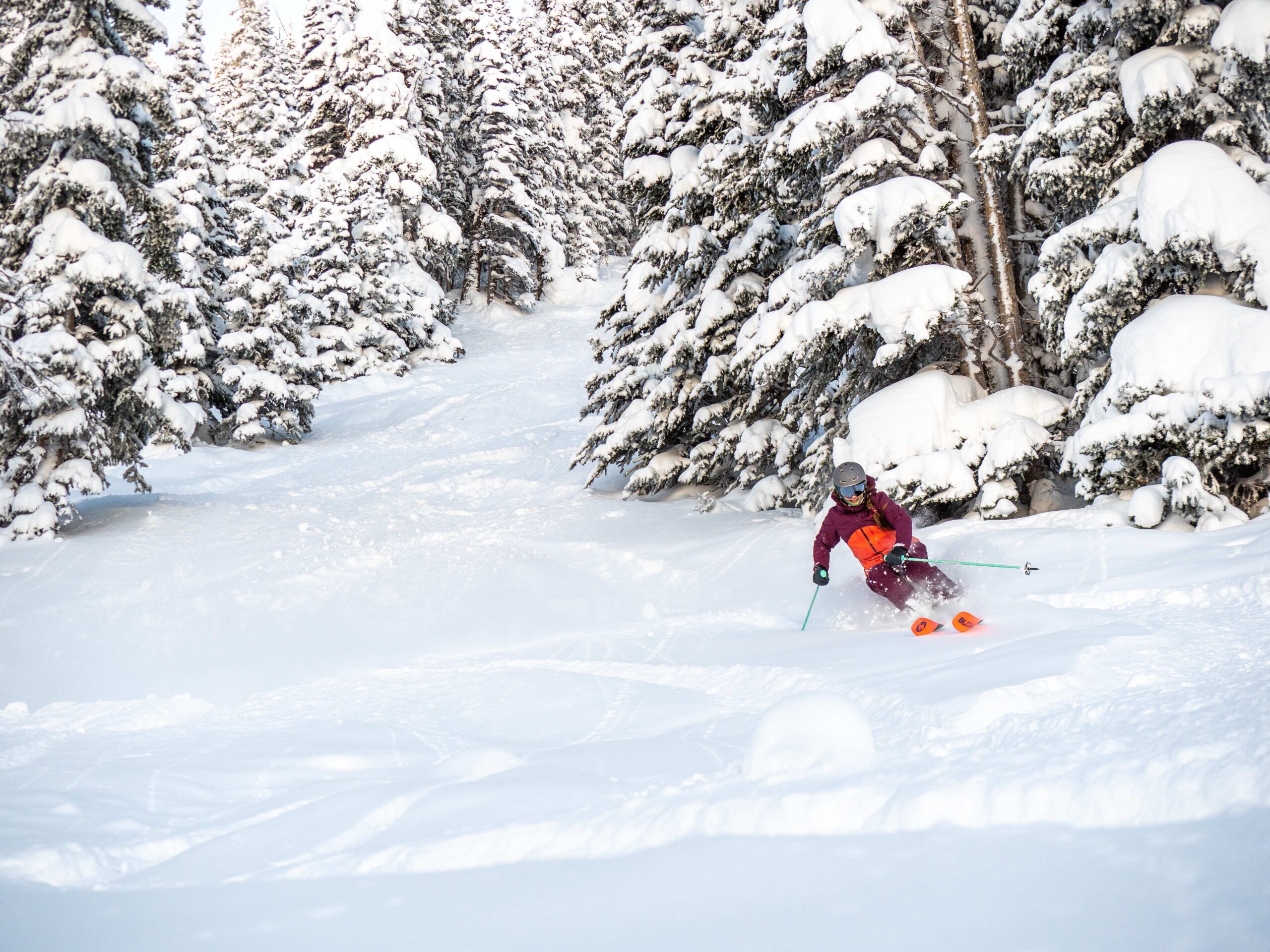
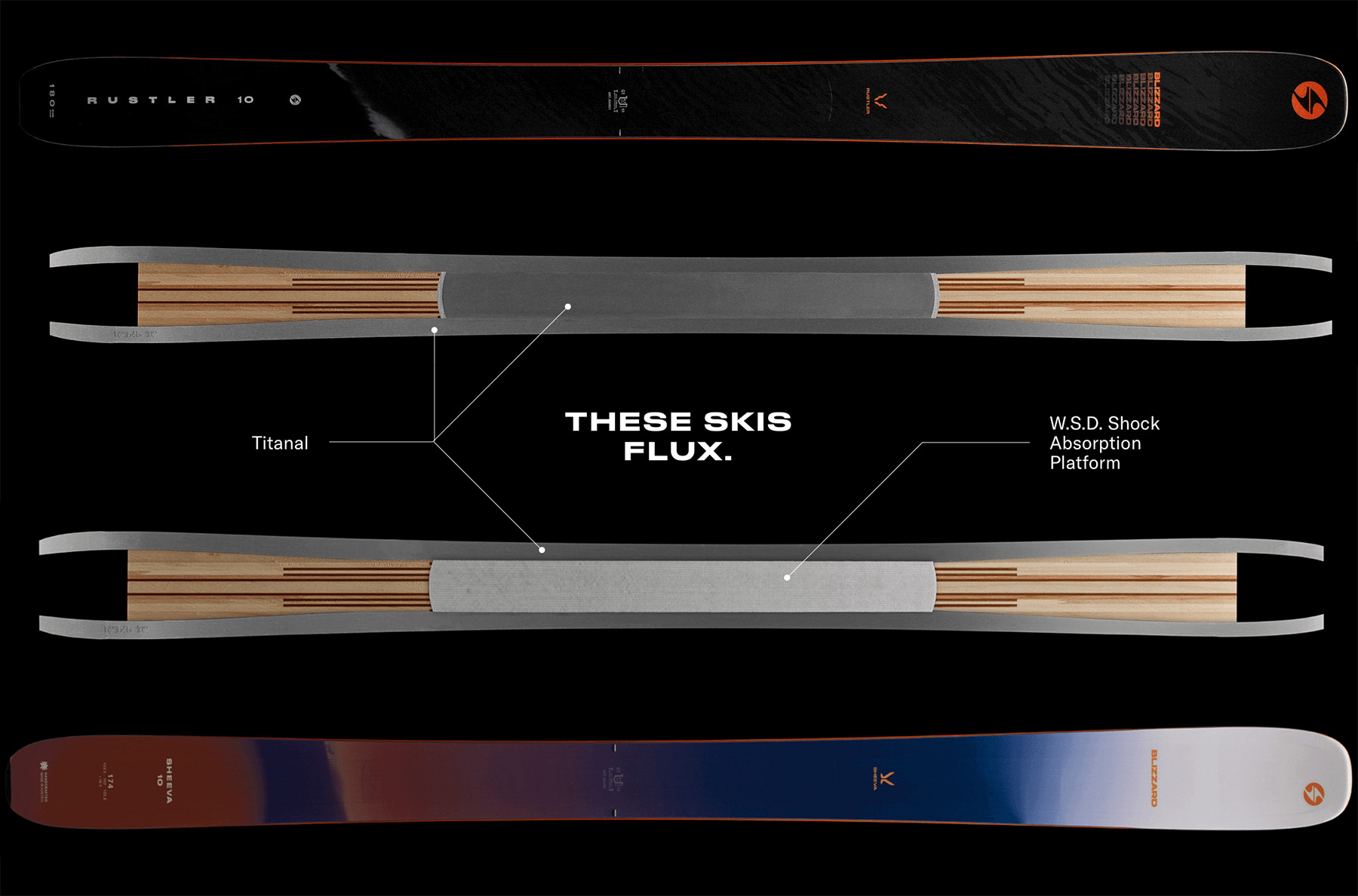
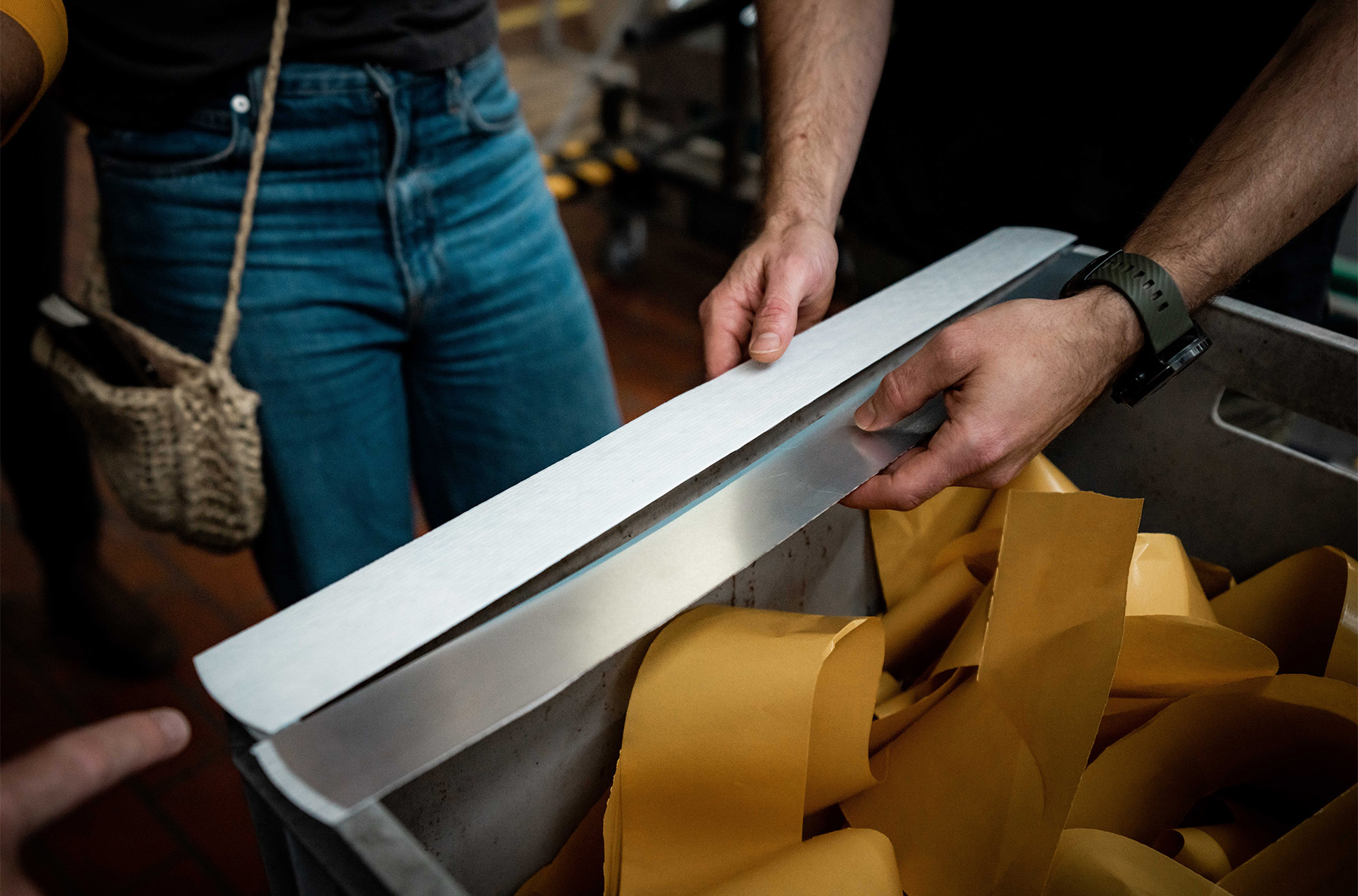
CRSP Skis
CRSP, who designs and manufactures their skis and boards out of Denver, Colorado, was one of many first-time brands at the Summit this year, and they had a whole bunch of their pre-built and custom skis and boards available for testing. These ranged from narrow carvers to fat pow surfers, including some interesting shapes like their asymmetrical 114mm-wide pow ski. We’ll have more info about their latest models in the future, so stay tuned.
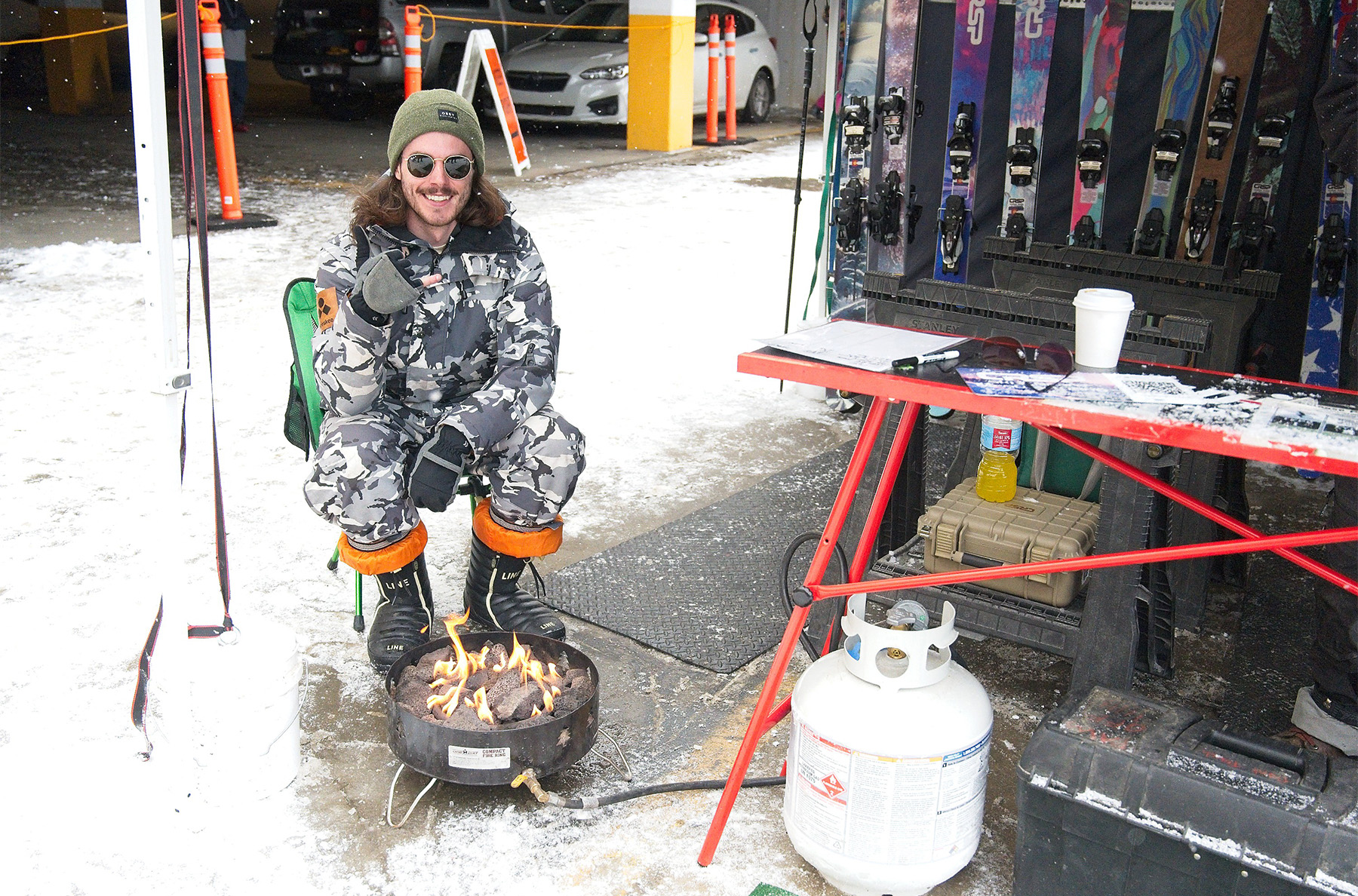
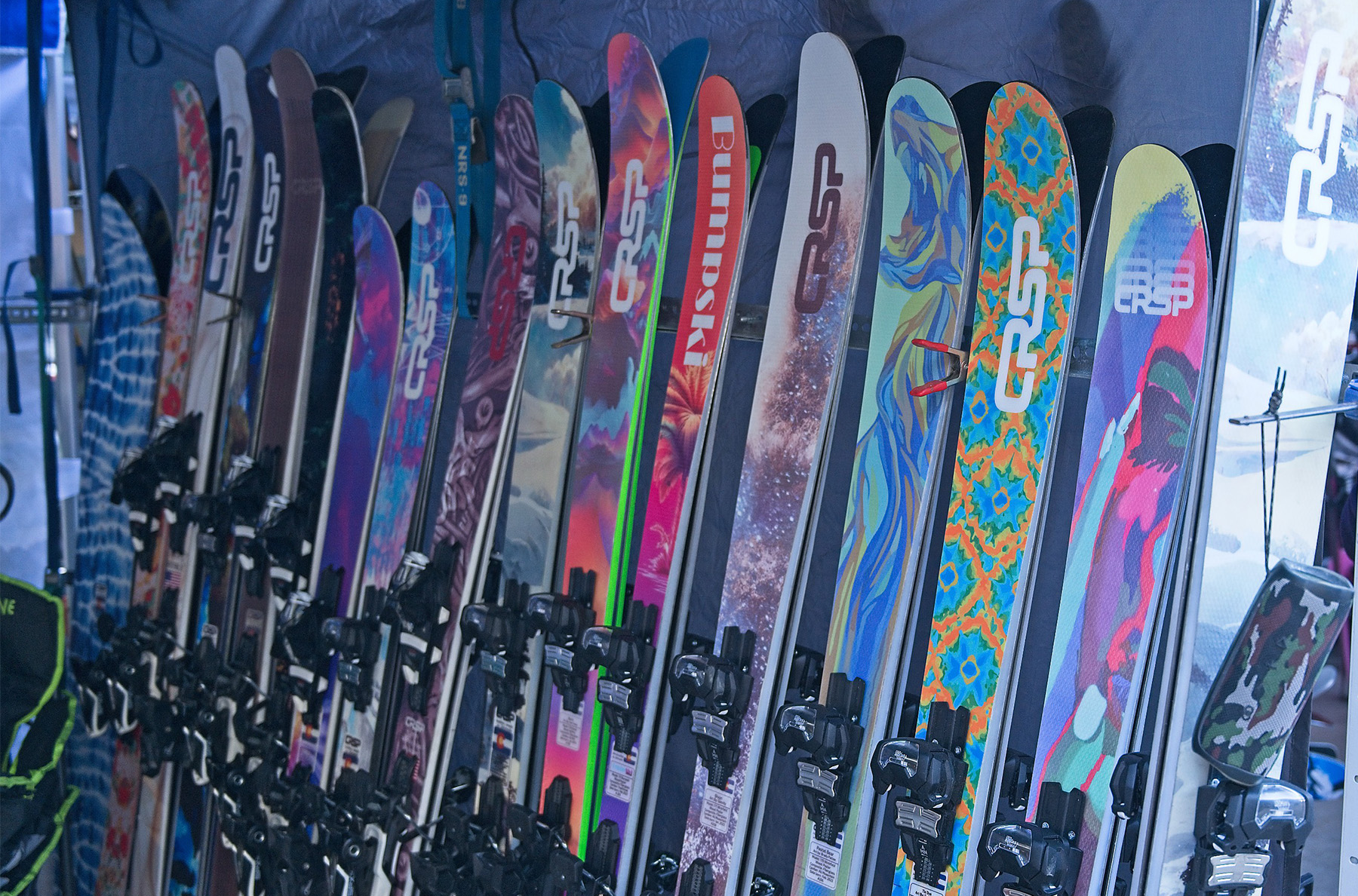
Dalbello Boots
Dalbello’s boot lineup sees a lot of changes for 23/24.
Dalbello’s fixed-cuff Krypton / Chakra series and walk-mode Lupo series are both being replaced with the new Cabrio LV and Cabrio LV Free series, respectively. The Cabrio LV boots still feature a 3-piece design, but they reportedly have a new mold with a stated last width of 99 mm (vs. 98 mm on the previous molds). The Cabrio LV boots feature a new recycled polyurethane shell material and wrap liners, while the Cabrio LV Free line uses slightly lighter materials and includes versions with wrap- or tongue-style liners, positioning themselves in the 50/50 or freeride-touring category. The fixed-cuff Il Moro also gets updated, with tweaks that mirror the Krypton / Cabrio LV updates.
Lastly, Dalbello will be offering two new junior touring boots, the Quantum Junior and J-Tour.
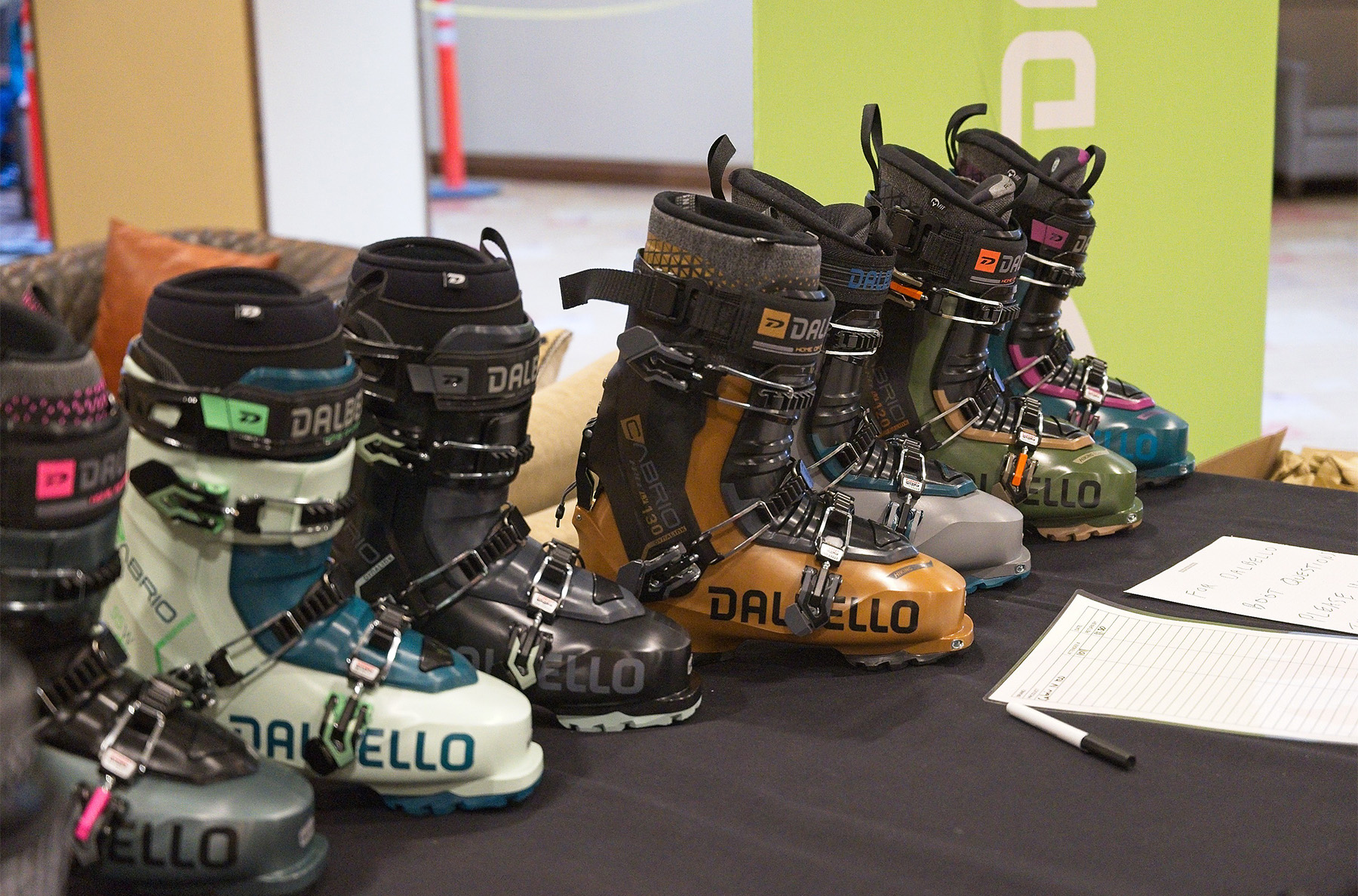
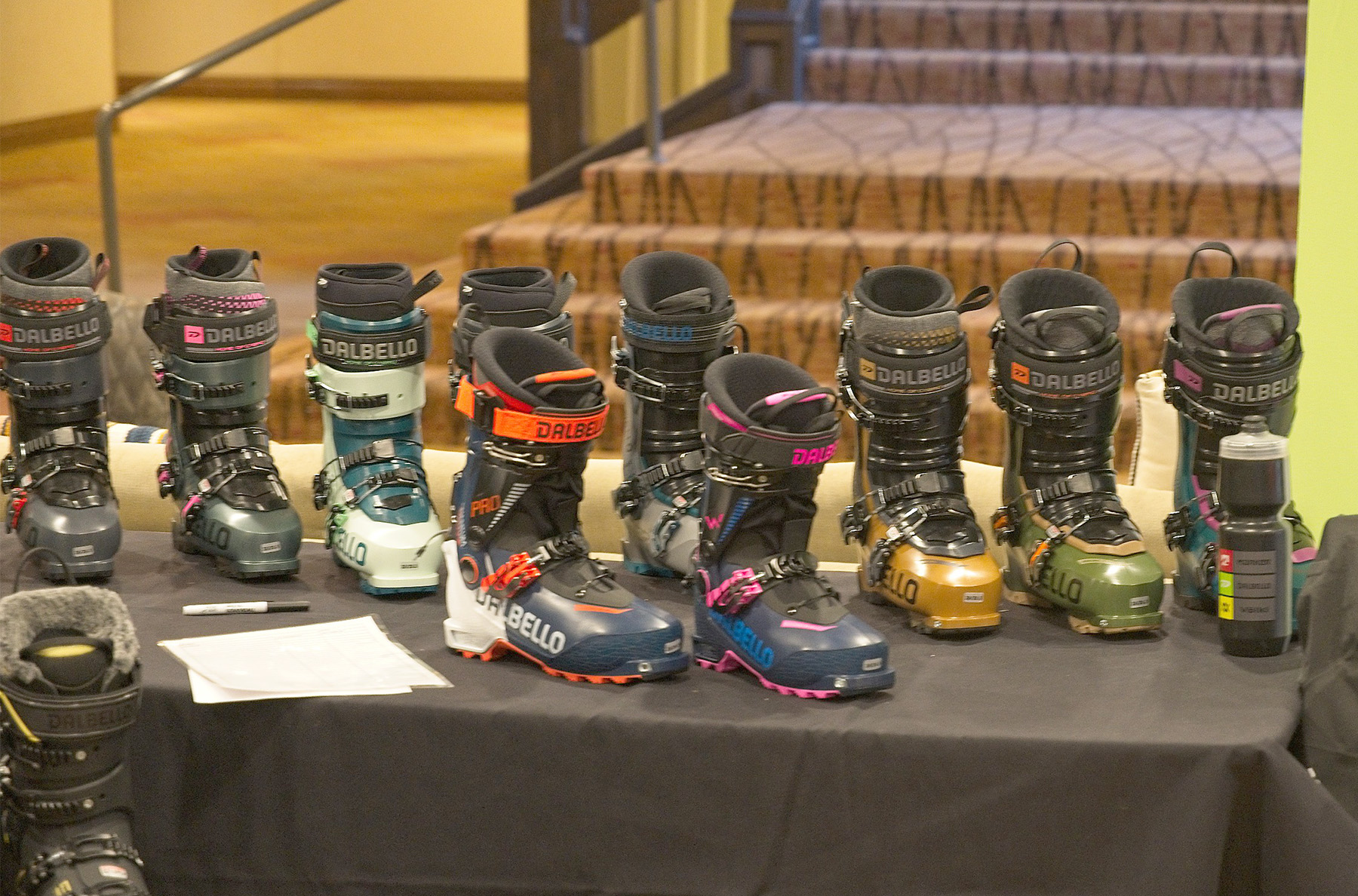
Deviation Skis & Snowboards
Another newcomer to the Blister Summit was Deviation Works, who brought a wide variety of both skis and snowboards for testing. We’re still working on getting more information about their 23/24 models, but we will have some Flash Reviews coming for the skis and boards we tried during the Summit, so stay tuned.
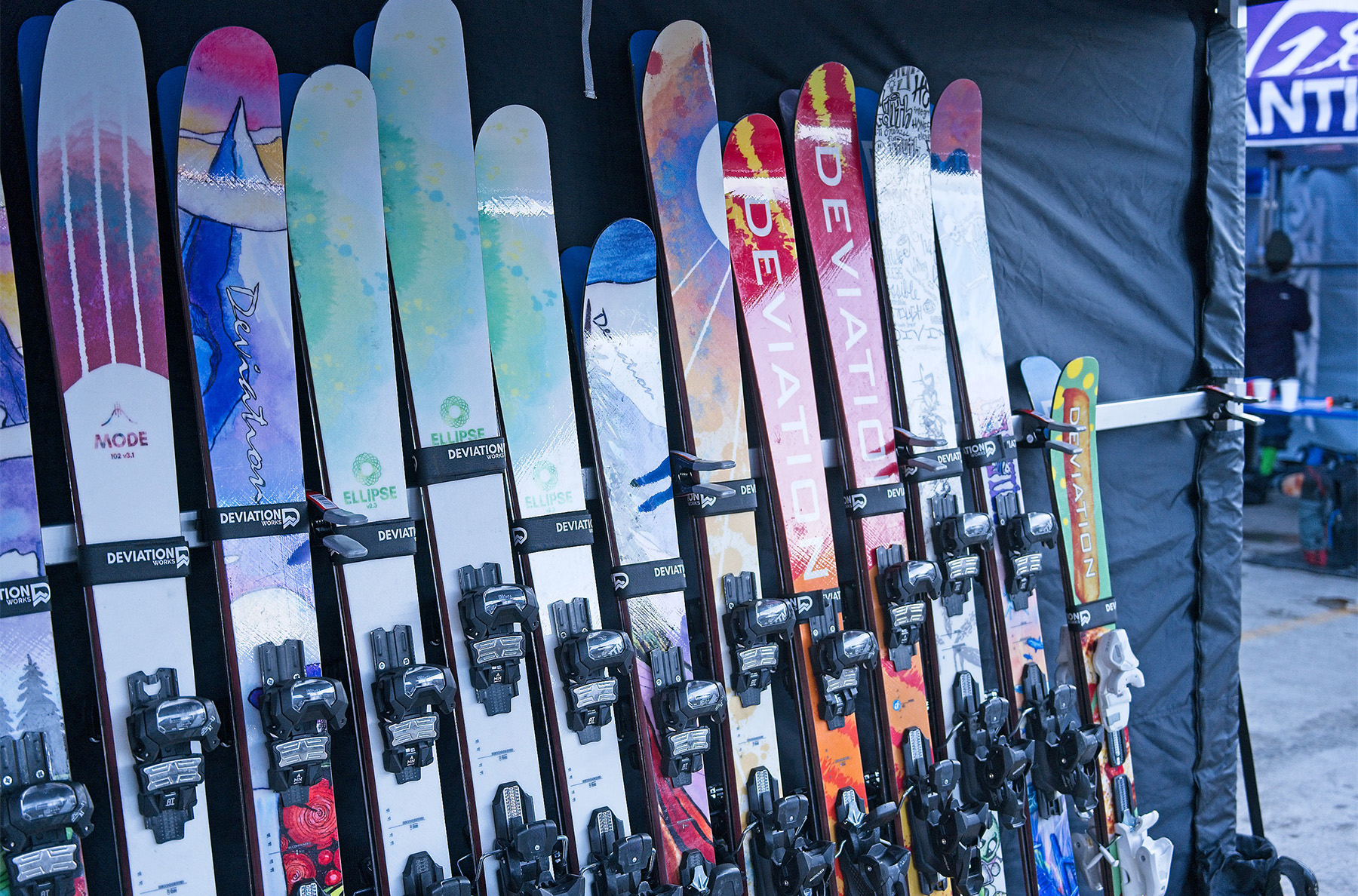
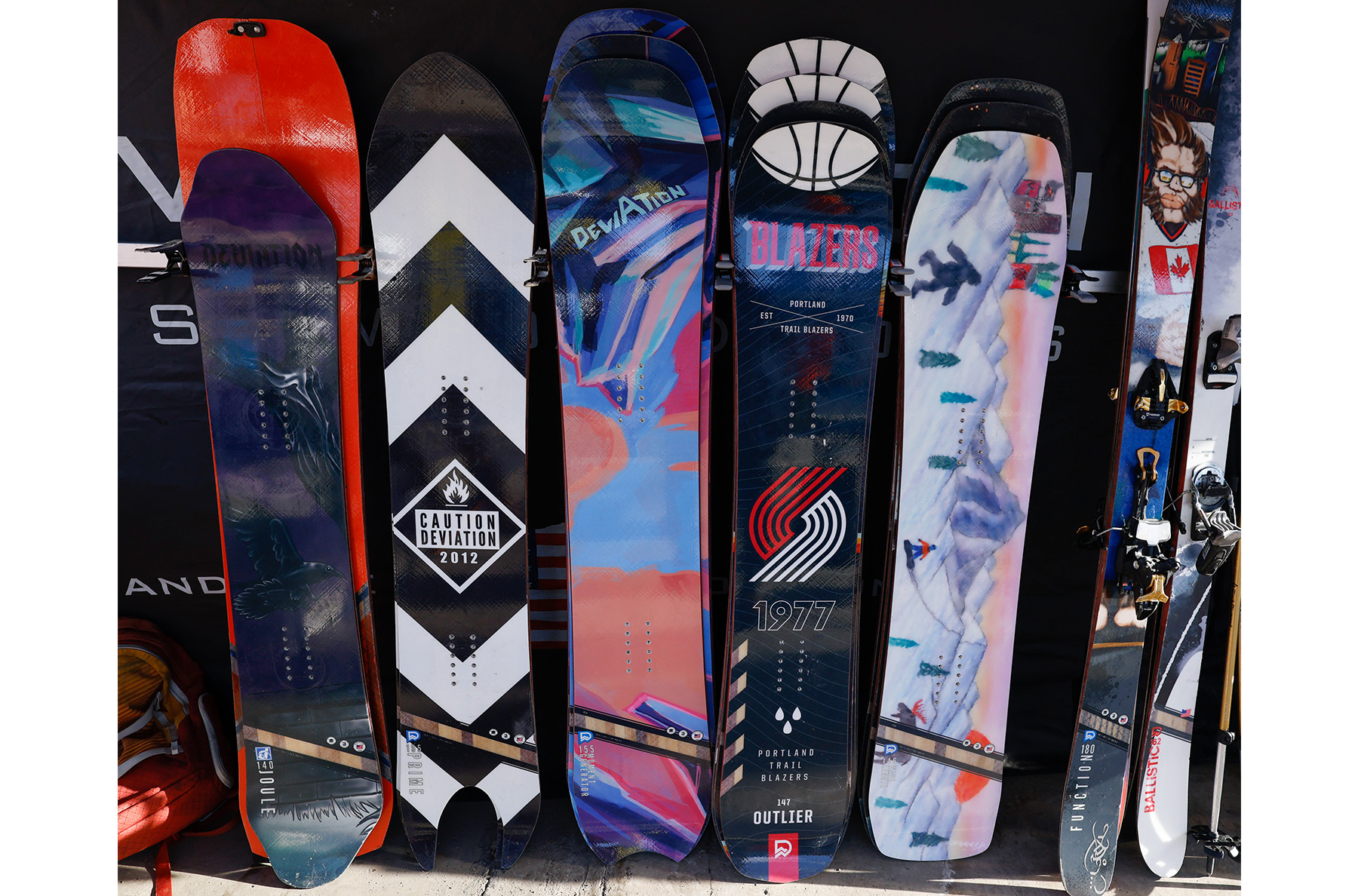
DPS Skis
DPS is another brand that sees a lot of changes for 23/24. First, their Pagoda line of lightweight all-mountain and freeride skis gets replaced by their brand-new Kaizen collection. This is their top-end collection of do-everything skis; light enough to potentially tour on, but substantial enough for daily lift-accessed skiing. Relative to the previous Pagoda series, the Kaizen collection is a bit trimmer in terms of models: Kaizen 100, Kaizen 105, and Kaizen 112. They’ve ditched their “C2” and “RP” naming scheme, now simply referring to the shaping of a given ski as “directional” or “rocker,” respectively. The Kaizen 105 is “directional” and looks to replace the Pagoda 106 C2, while the Kaizen 100 and Kaizen 112 are “rocker” skis and replace the Pagoda 100 RP and Pagoda 112 RP, respectively.
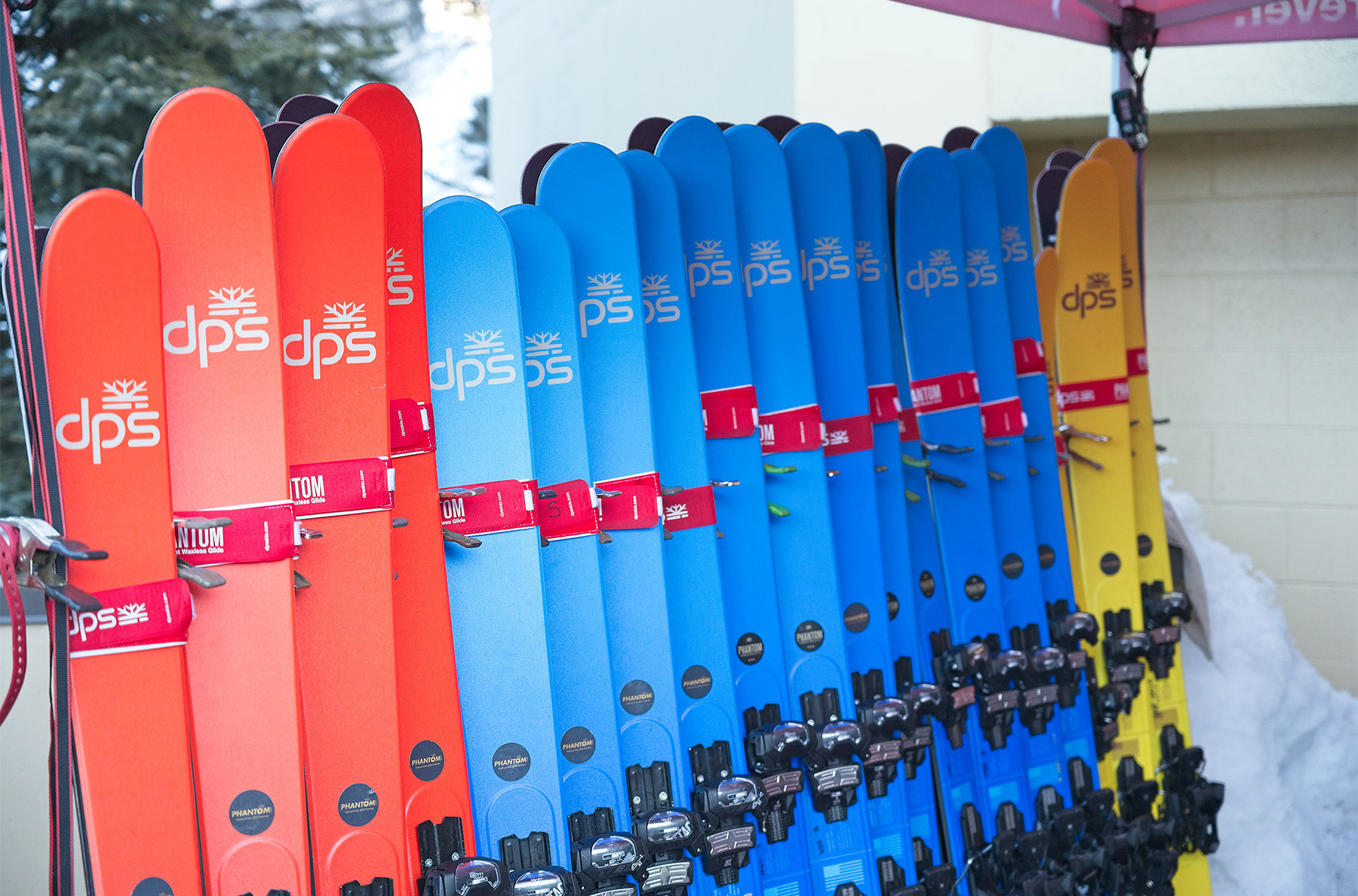
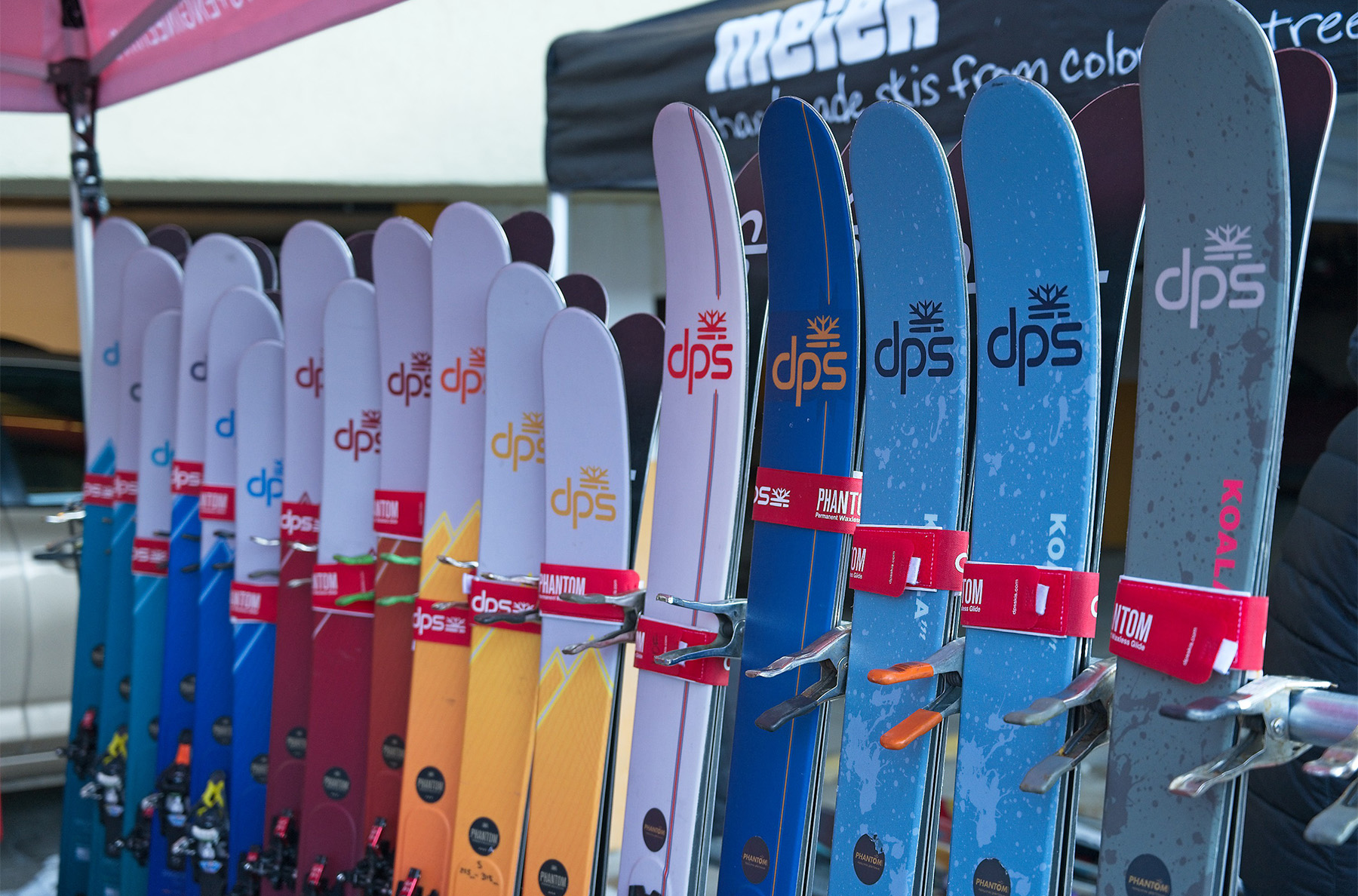
The “directional” skis feature longer sidecut radii, shallower rocker lines, and longer effective edges, whereas the “rocker” skis are the opposite: tighter sidecut radii, deeper rocker lines, and shorter effective edges (i.e., more tip and tail taper). The Kaizen skis also feature a new core construction, with an “upper core” of poplar and a “lower core” of ash, wrapped in a new carbon laminate. They also use a new glue to bond the upper and lower wood cores to reportedly increase damping, while the new carbon laminate is meant to optimize energy.
The other big update comes in the form of the Koala line of freestyle skis. The Koala 103 gets new rocker lines, an updated core, and an updated flex pattern, with the main goal of making the ski more playful. The Koala 118 remains the biggest, heaviest, stiffest, and burliest of the collection, but DPS has added a brand-new Koala 111 to fill the gap between the two existing Koalas. The Koala 111 is reportedly a fusion of the two other Koalas, bringing some of the Koala 103’s playfulness and some of the Koala 118’s stability to a versatile mid-fat width.
Dynafit Skis & Boots
Dynafit was showcasing a few new products at Blister Summit 2023, all focused on the freeride and even lift-accessed category. The new Tigard boots and Tigard 114 ski are reportedly Dynafit’s most downhill-oriented products in recent memory, with more of a focus paid to stability at speed than uphill efficiency.
The Tigard 130 boot (and Tigard 110) replaces the Hoji Free line of boots (the Radical boots return unchanged), with the Tigards serving as Dynafit’s stiffest ski boots. Despite now being a full overlap design, the Tigard boots still feature the “Hoji Lock” walk mechanism, which opens both upper cuff buckles with one motion, while connecting the upper and lower shell when you put it into ski mode. The fit also looks a bit roomier in the instep area, which was a common fit issue with the Hoji Free boots, and the Tigards get GripWalk soles for potential use with hybrid or GripWalk-compatible alpine bindings. The Tigard 130 reportedly comes in at 1590 grams for a size 26.5 and has a stated last width of 101 mm.
To pair with the Tigard boots, the Tigard 114 is a big freeride ski that reportedly comes in just under 2000 grams per ski for the 188 cm length. That’s still fairly light for its size, but it’s still Dynafit’s heaviest ski and is designed with performance in deep snow and high speeds as priorities. Additionally, Dynafit unveiled a whole collection of Tigard apparel and packs.
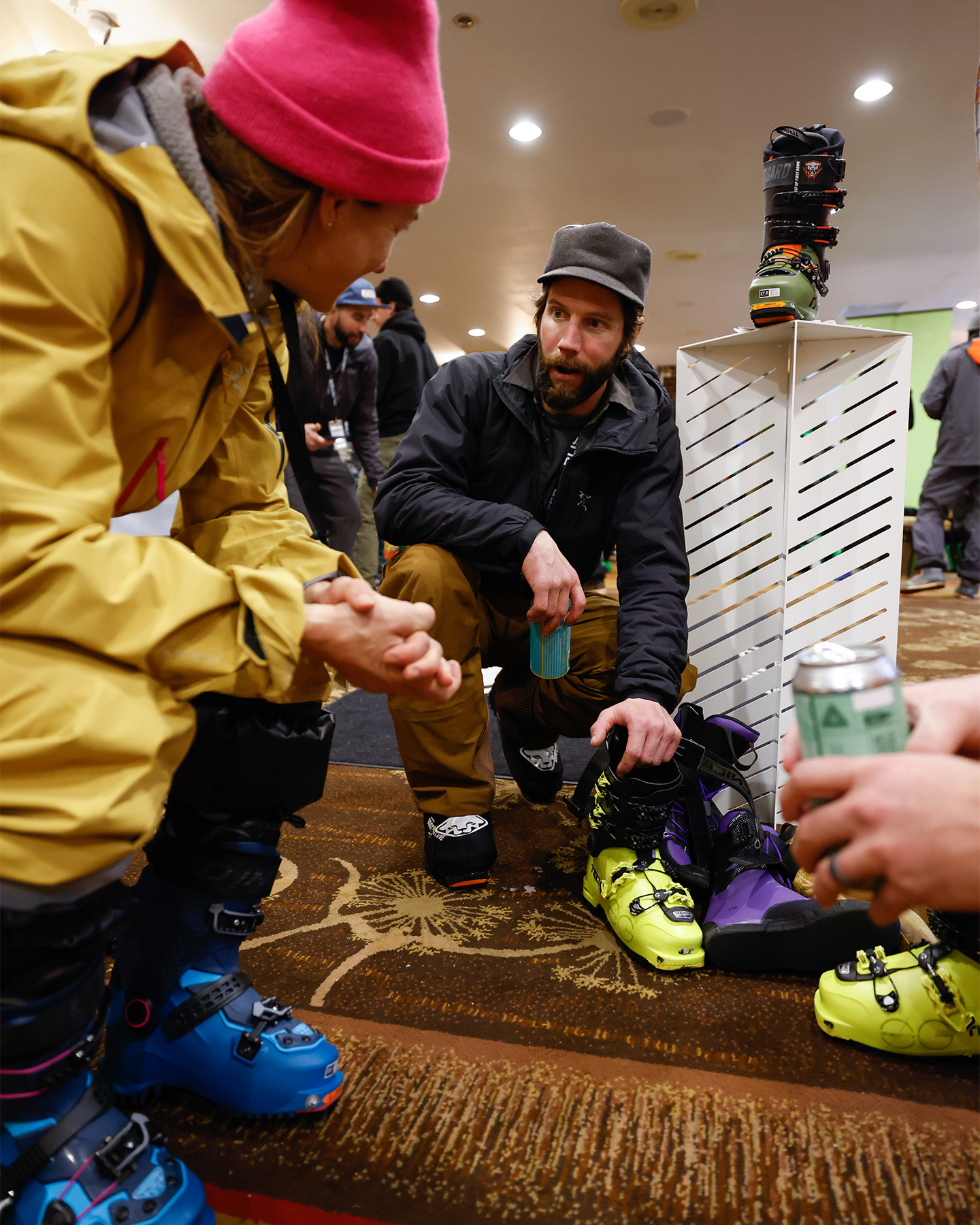
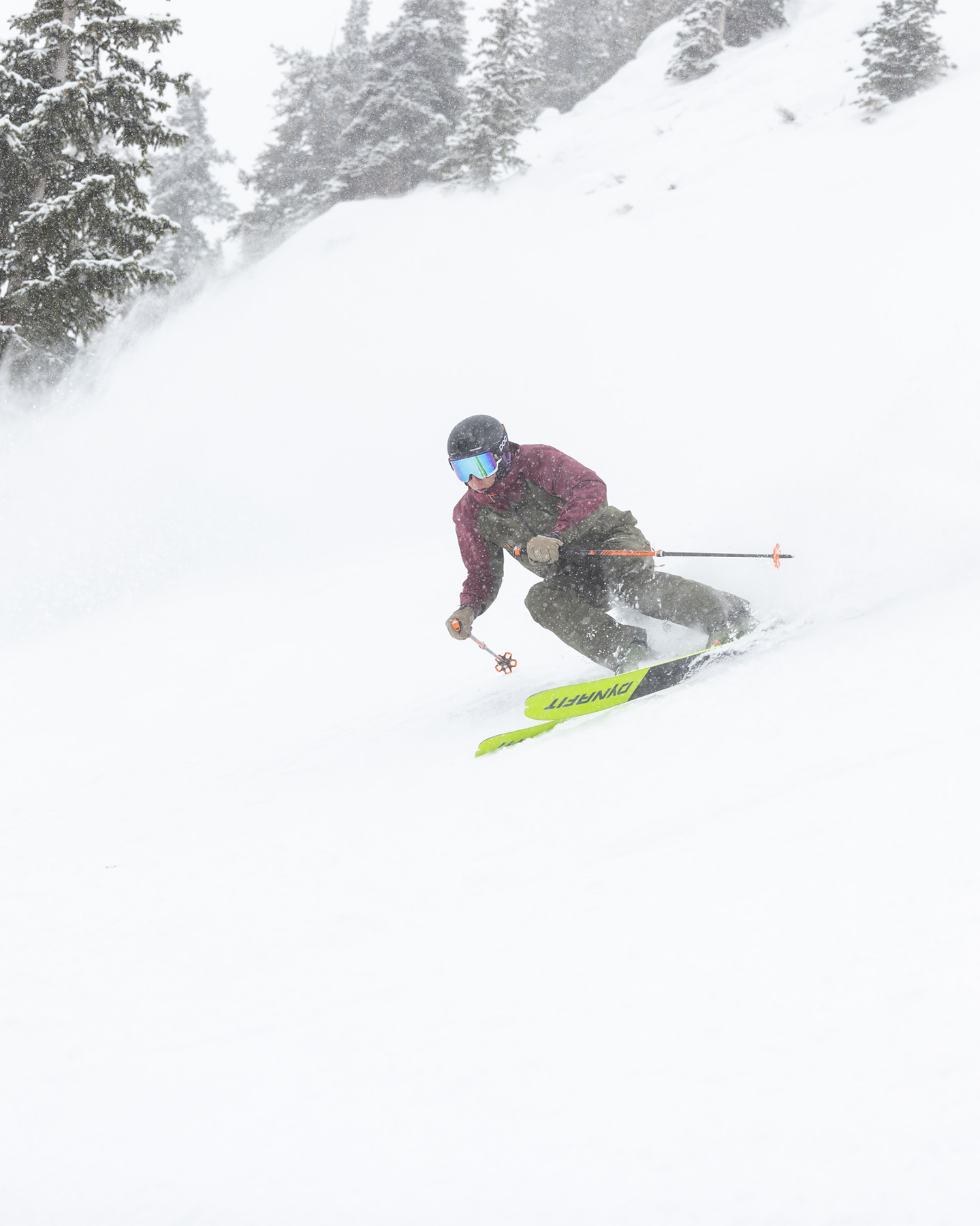
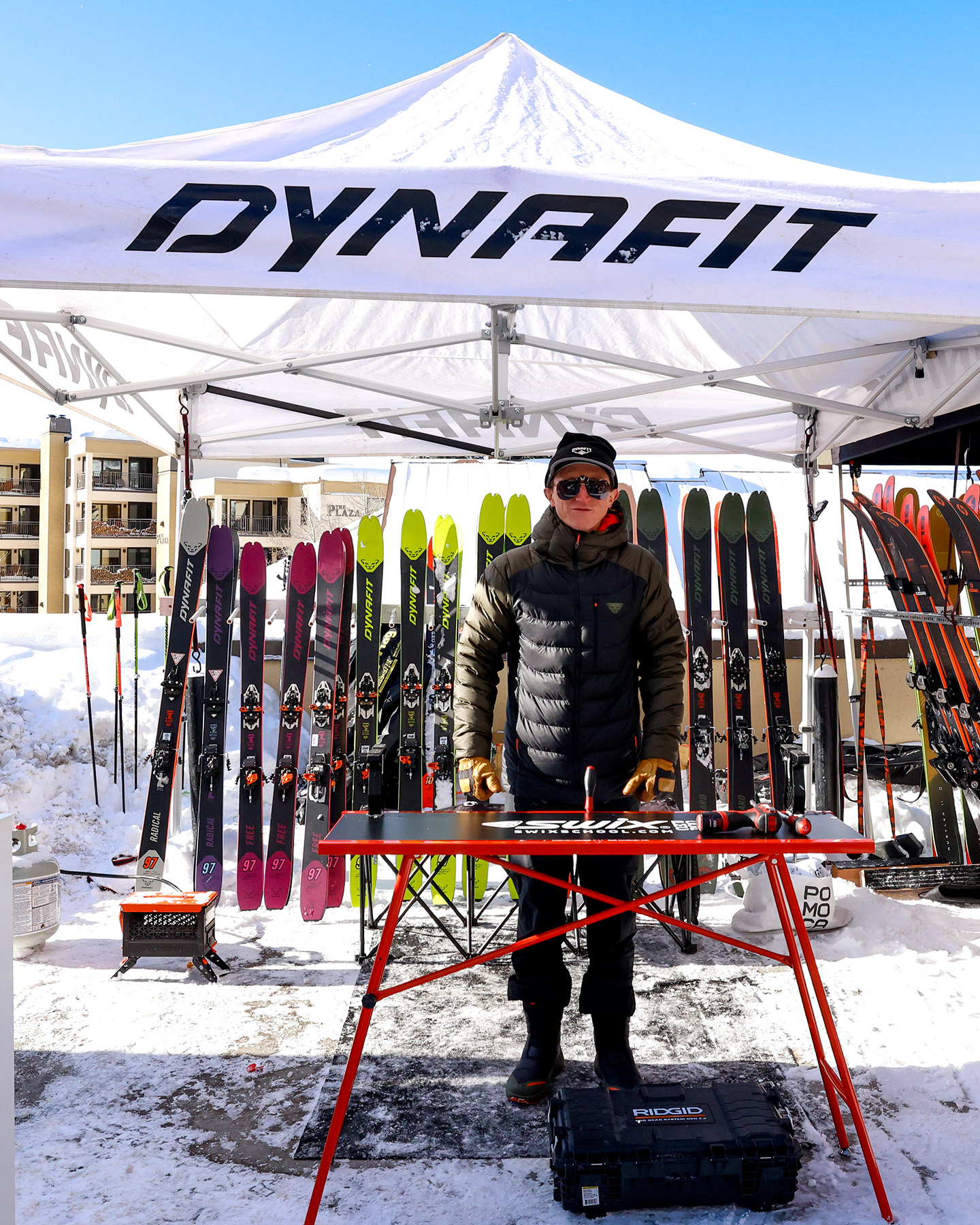
Dynastar Skis
Dynastar’s popular M-Free and M-Pro skis carry over for 23/24, but they’ve added a new series to fill out the more firm-snow and piste-oriented category. The M-Cross series features less tip tapering, shallower rocker lines, and tighter sidecut radii than the M-Pro skis, with the goal of improving on-piste performance, but they’re not designed to be piste-specific like Dynastar’s Speed skis. The M-Cross skis include 78, 82, and 88 mm underfoot models.
The M-Cross skis also feature a new version of Dynastar’s “Hybrid Core,” which they first unveiled in their M-Free and M-Pro skis.
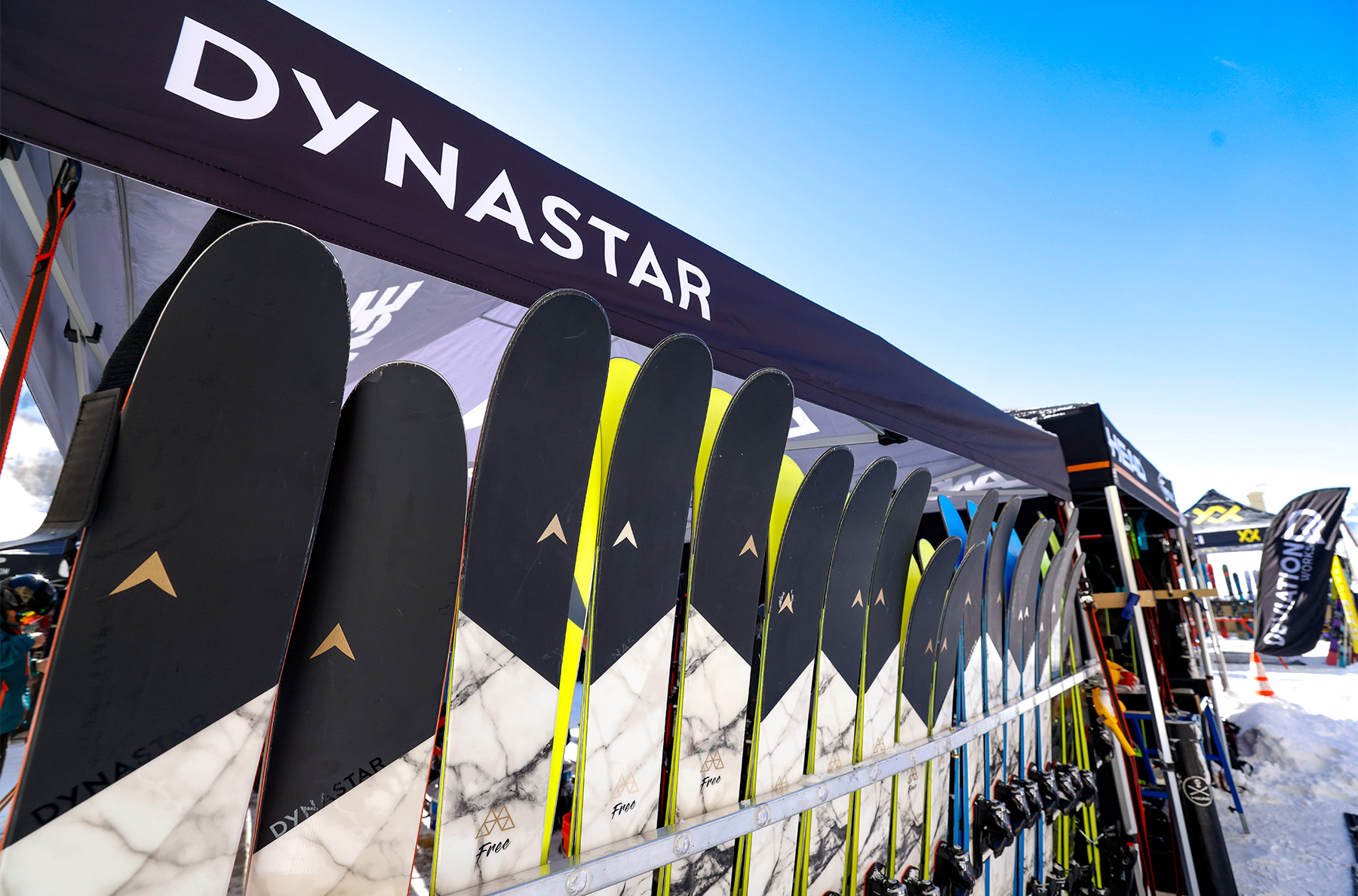
Whereas the original Hybrid Core combined wood and polyurethane stringers, Hybrid Core 2.0 combines wood stringers in a few different ways and orientations: longitudinally, vertically, and transversally. This allows them to use less glued fiberglass, with one of the main end goals being a reduced environmental impact; Dynastar claims that Hybrid Core 2.0 results in a 59% decrease in impact on mineral and metal resource use, and a 24% decrease in emissions. Head to Dynastar’s site for more info on Hybrid Core 2.0.
Faction Skis
Faction made a lot of updates for the 22/23 season, so most of their line carries over for 23/24, though with several graphics updates. Worth noting, mid-season this year they launched their “Studio” line of skis, which are pipe- and park-specific models. The 83mm-wide Studio 0 and Studio 0X are primarily designed as halfpipe models, while the 90mm-wide Studio 1 and Studio 1X are positioned more as slopestyle and big air models. All the Studio skis feature poplar wood cores, carbon / rubber reinforcement under the binding area, carbon weave for added torsional rigidity, symmetrical shapes, and oversized sidewall for edge hold and impact protection. As with all of Faction’s skis, the unisex and women’s “X” models share the same construction, just with different graphics and available lengths.
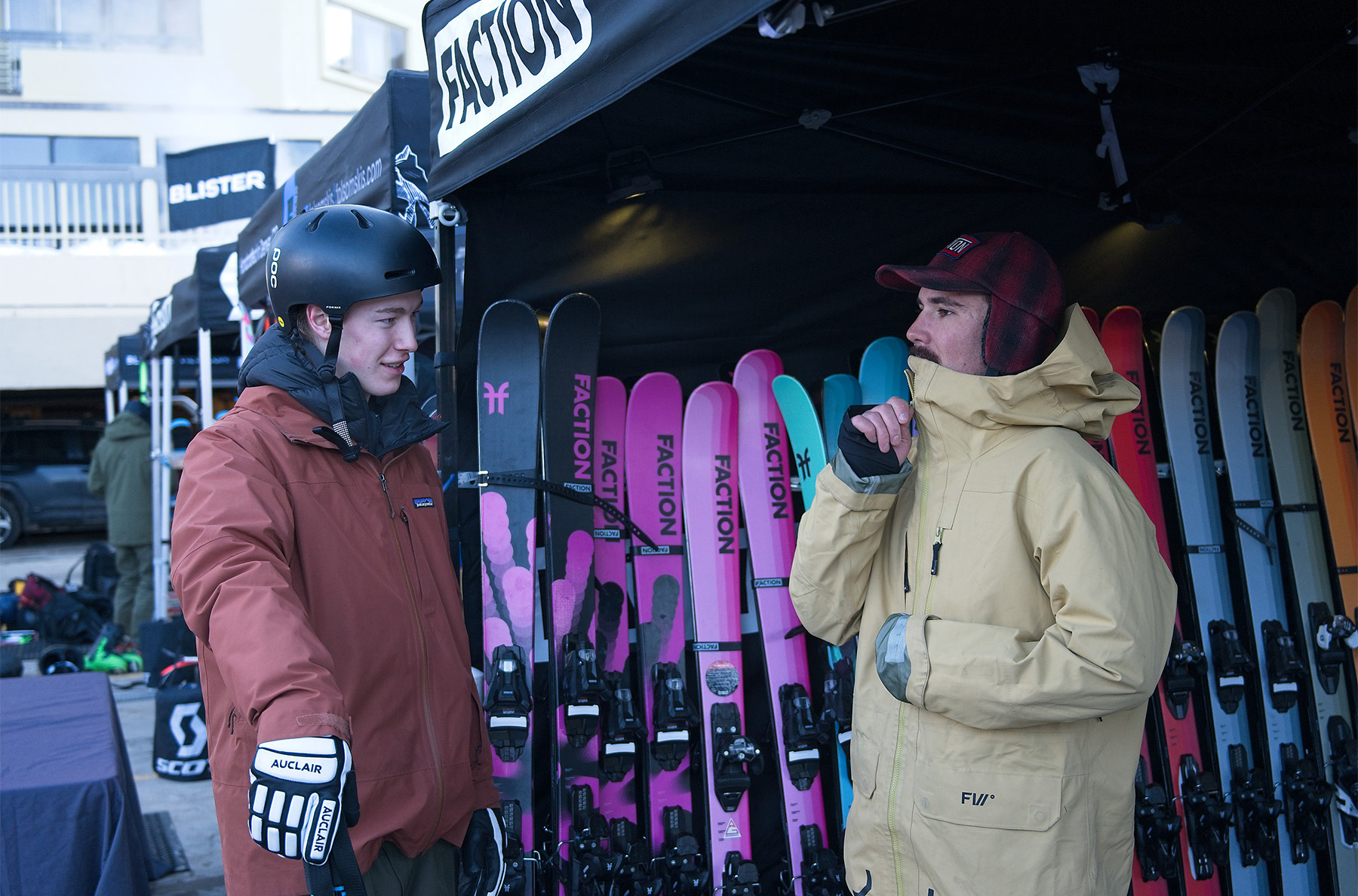
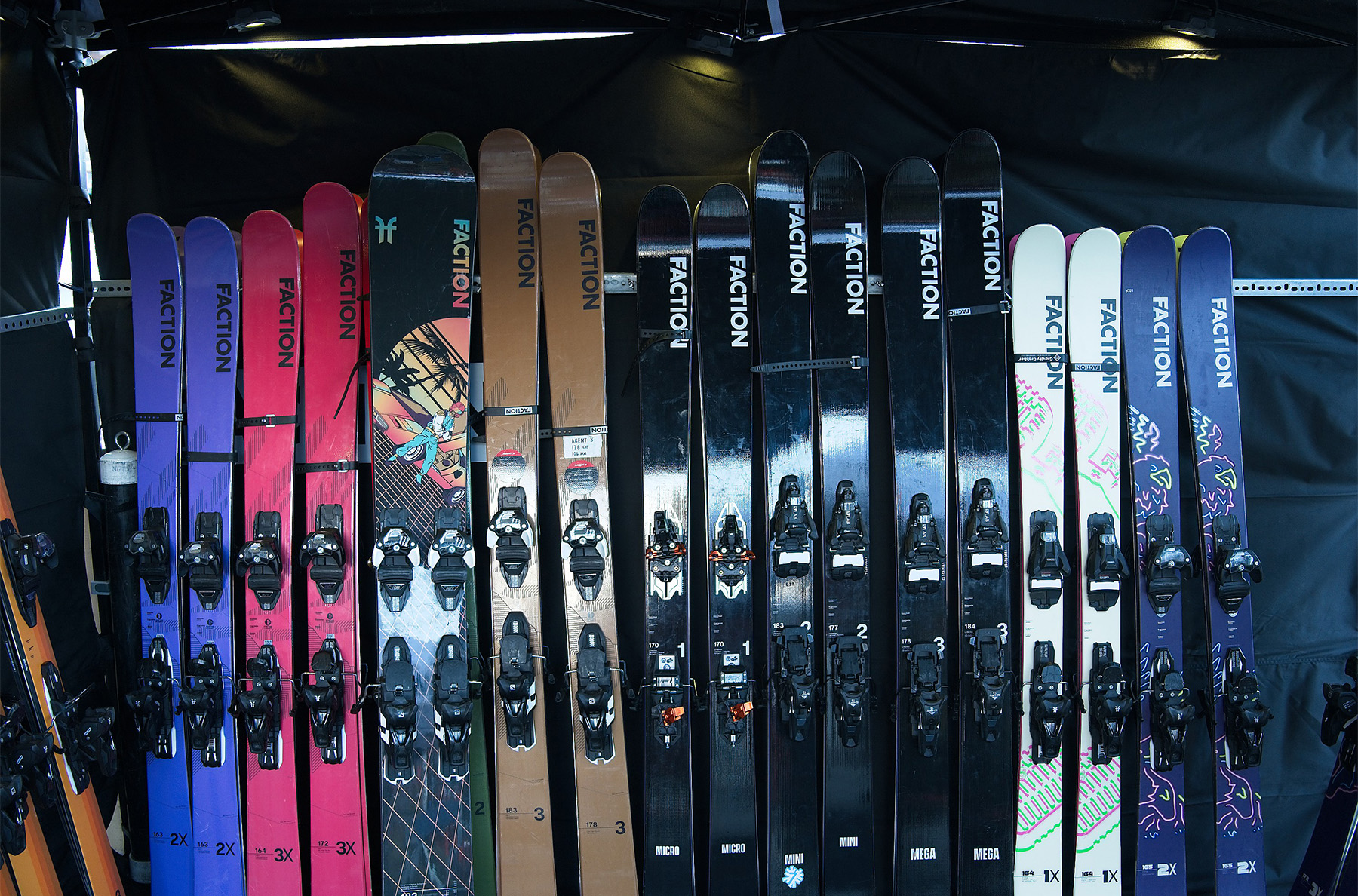
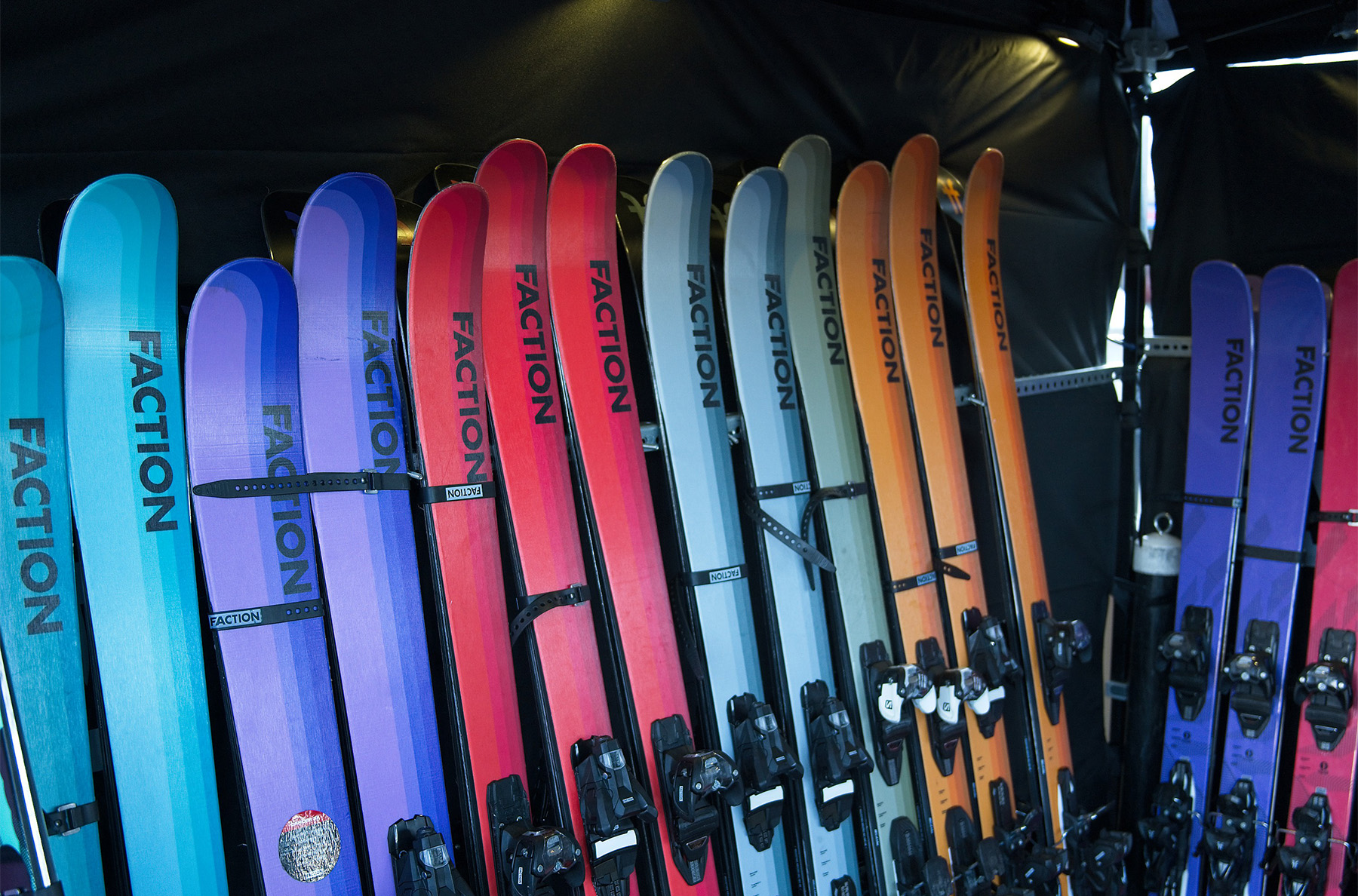
Fischer Skis & Boots
The main updates on the boot side of things for Fischer occur in their RC4 collection of fixed-cuff alpine boots. They’re available in low-volume, medium-volume, and high-volume lasts, spanning a wide range of flex ratings. The flagship models are the RC4 Pro boots, which feature the race-boot plastic from the RC4 Podium series, as well as custom ZipFit liners, carbon-fused cuffs, and a BOA dial on the RC4 Pro MV.
On the ski side, Fischer is updating their touring lineup, with the new Transalp skis spanning widths from ~80 mm all the way up to 105 mm. New construction highlights include the use of their “Shaped Ti” that we first saw in the 22/23 Fischer Ranger skis, as well as new shapes and paulownia wood cores.
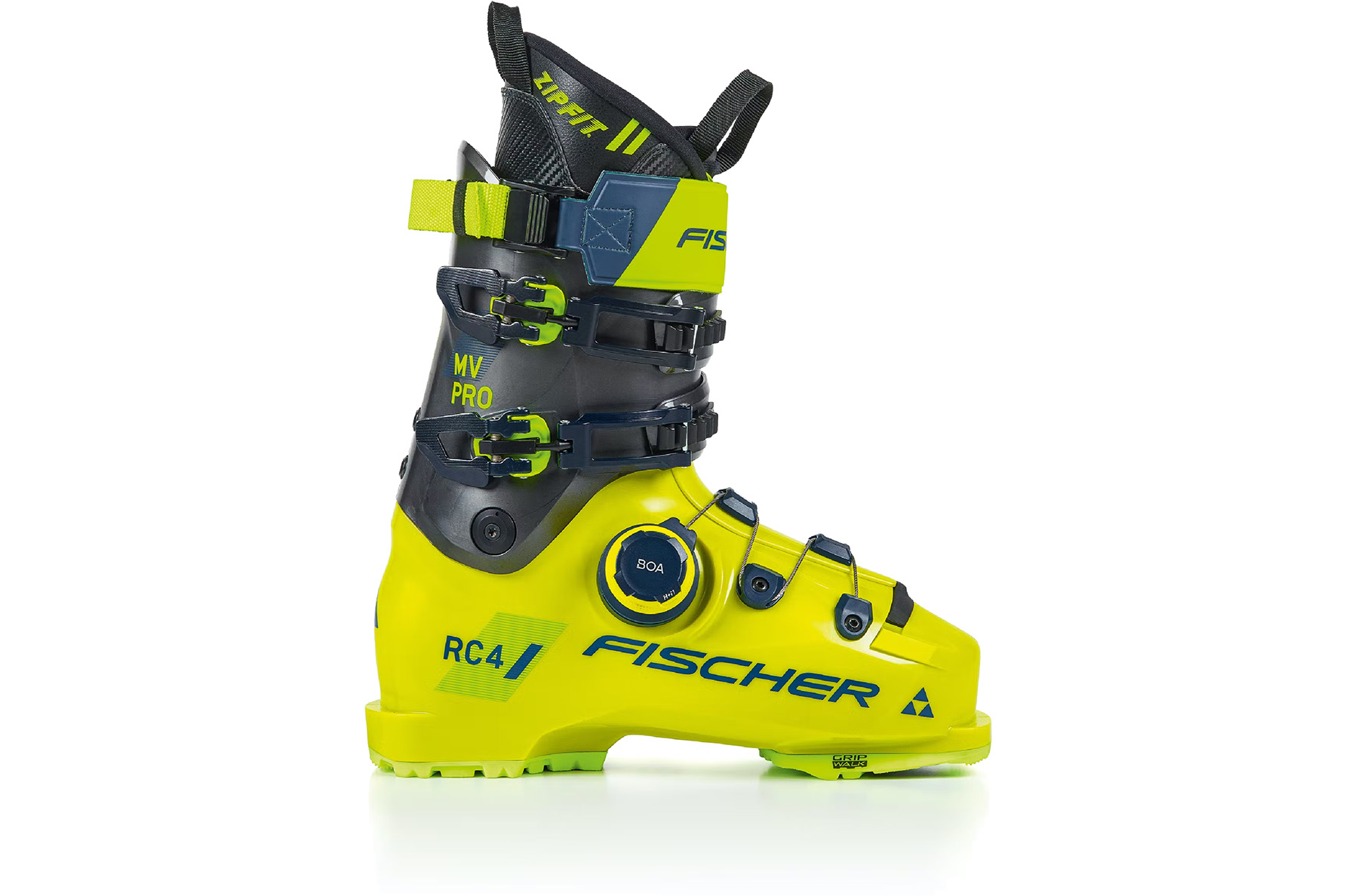
Flylow Apparel
Flylow brought a bunch of their latest apparel and outerwear, with the main new highlight being their updated line of gloves and mittens, which we’ve always appreciated for their combo of performance, durability, and value. We’ll be talking more about their new gear in the future.
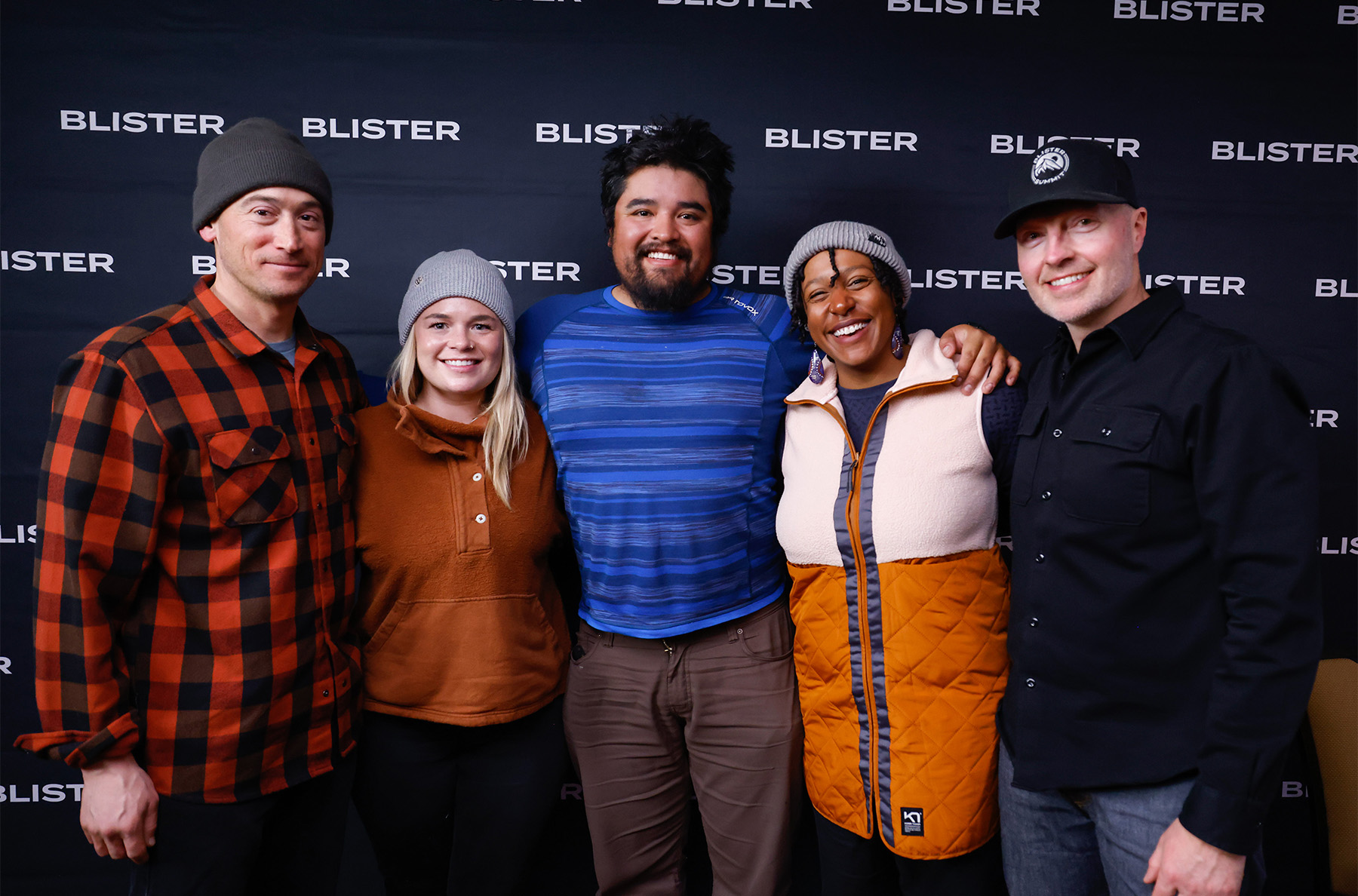
Folsom Skis
Folsom brought a ton of skis to the Summit this year, showcasing their wide variety of shapes to choose from, all of which can be customized to fit your needs. We had lots of folks heading into the backcountry to test our Folsom’s intriguing new lightweight touring construction, as well as plenty of folks testing the resort builds of their Spar, Completo, Primary, Cash, and other shaping series, including the new Cash 93, for which we’ll have a full review published in the coming weeks.
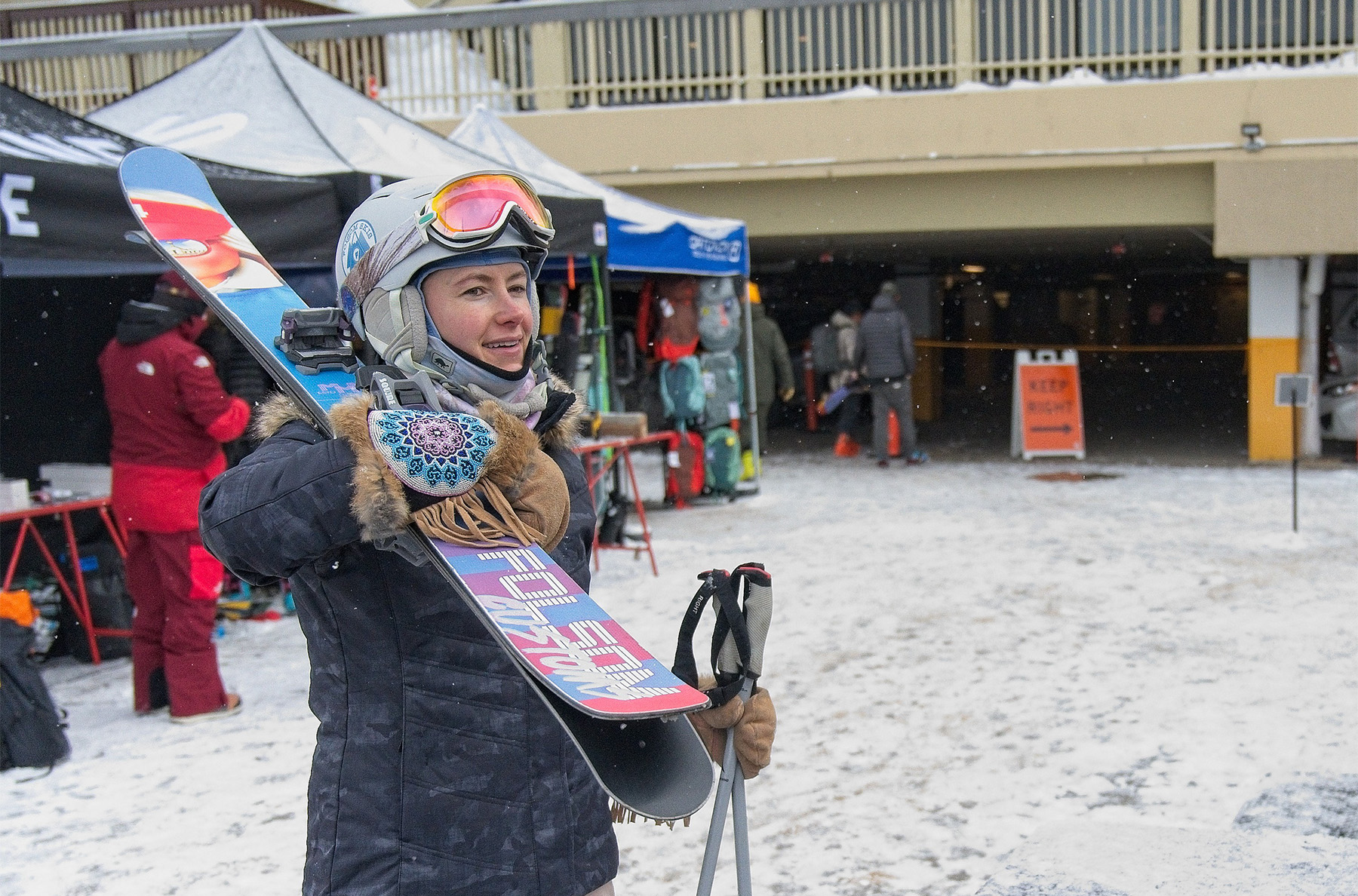
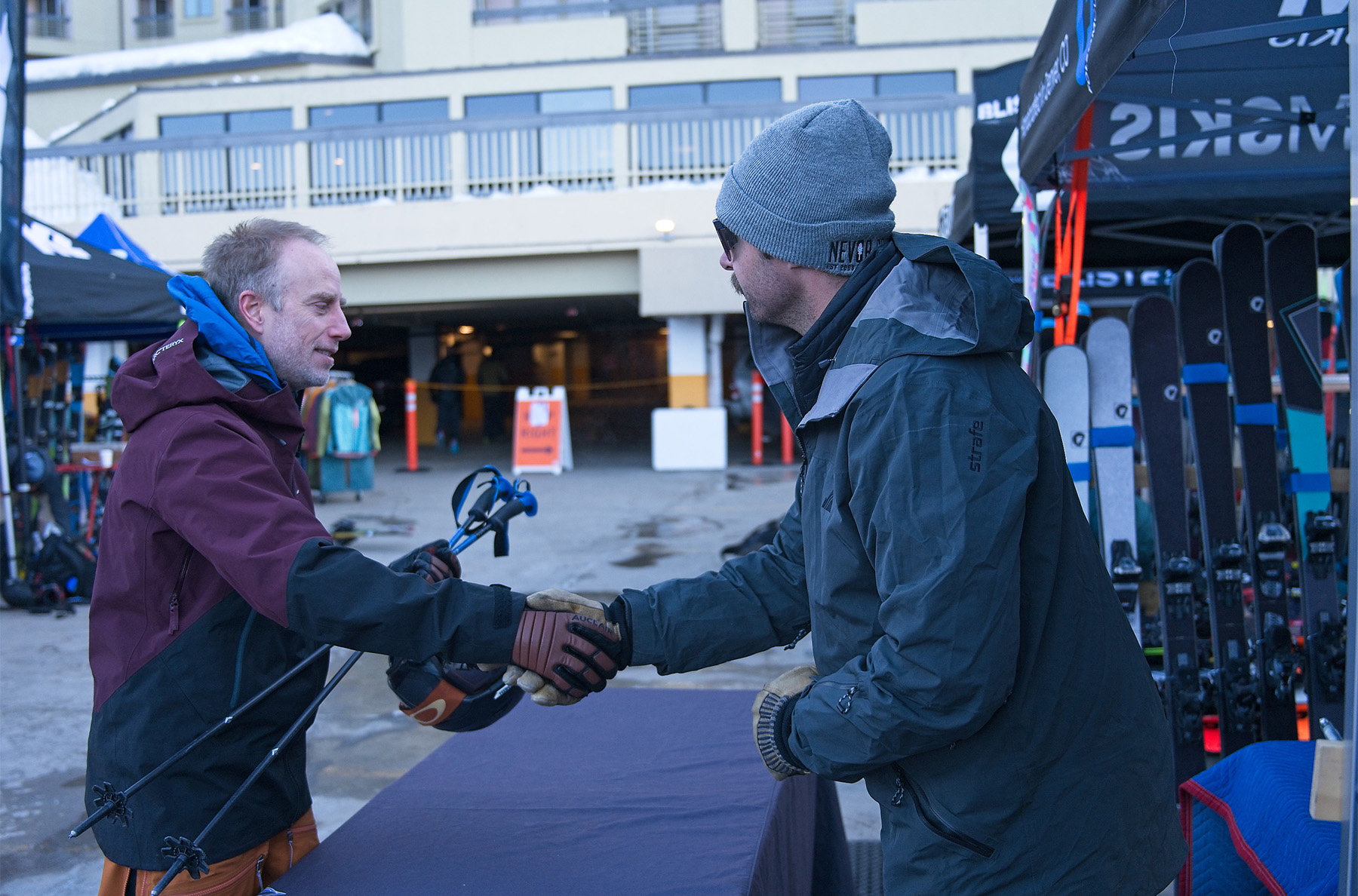
HEAD Skis
HEAD’s longstanding Kore line of freeride skis carry over for 23/24, though with new, much more colorful graphics. In particular, the all-white Kore 117 looks pretty amazing, with a visual nod to HEAD’s world cup race skis.
However, HEAD is updating their freestyle collection with the addition of the Oblivion 102 and Oblivion 116. The Oblivion 102 is designed as a versatile and playful all-mountain ski, while the Oblivion 116 is HEAD athlete, Cole Richardson’s, signature ski. It features a less tapered, more symmetrical shape than the Kore skis, but it’s still a pretty stiff ski with a long sidecut radius, so it’s designed to meld aspects of both freeride and freestyle. Additionally, the women’s Joy series of skis gets an update, with a focus on more stability at speed thanks to longer sidecut radii.
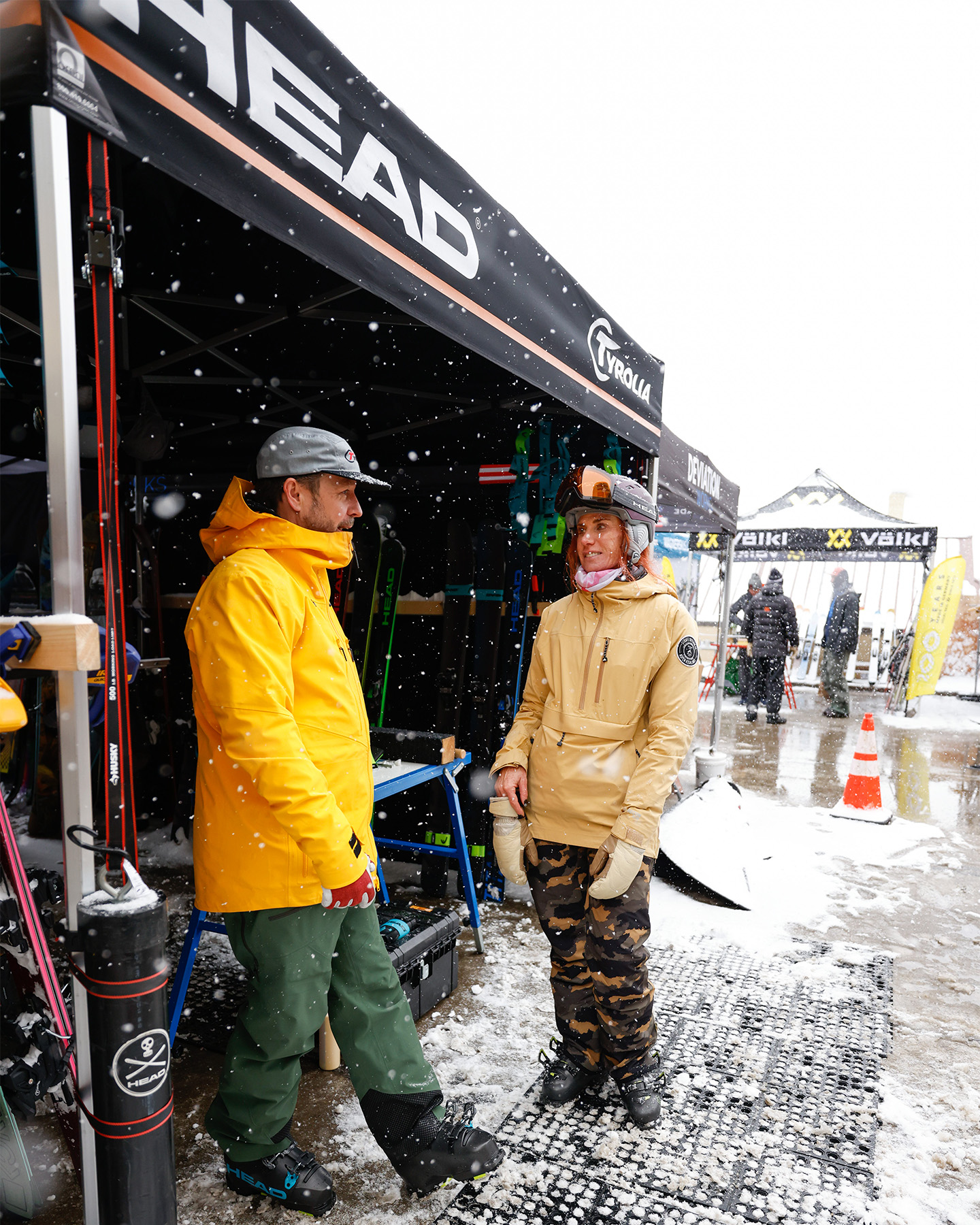
Icelantic Skis
Icelantic is launching a whole new series for 23/24, as well as a spinoff of an existing model.
First, they’re bringing back the Shaman. The original Shaman was instantly eye-catching, with a massive, angular shovel and a much narrower waist and tail. For 23/24, Icelantic brought back the name and most of what it embodied, but refined and expanded it. The Shaman 99 and Shaman 110 feature very wide shovels and much narrower tails, with the goal of making a ski that floats and carves very well, but that can also be pivoted and slashed easily through tight terrain. I got on the Shaman 99 early on at the Summit and it’s a super interesting ski — its unique design took a few runs to get used to, but once I did, I had a blast on it. We’ll have more to say about it in the future.
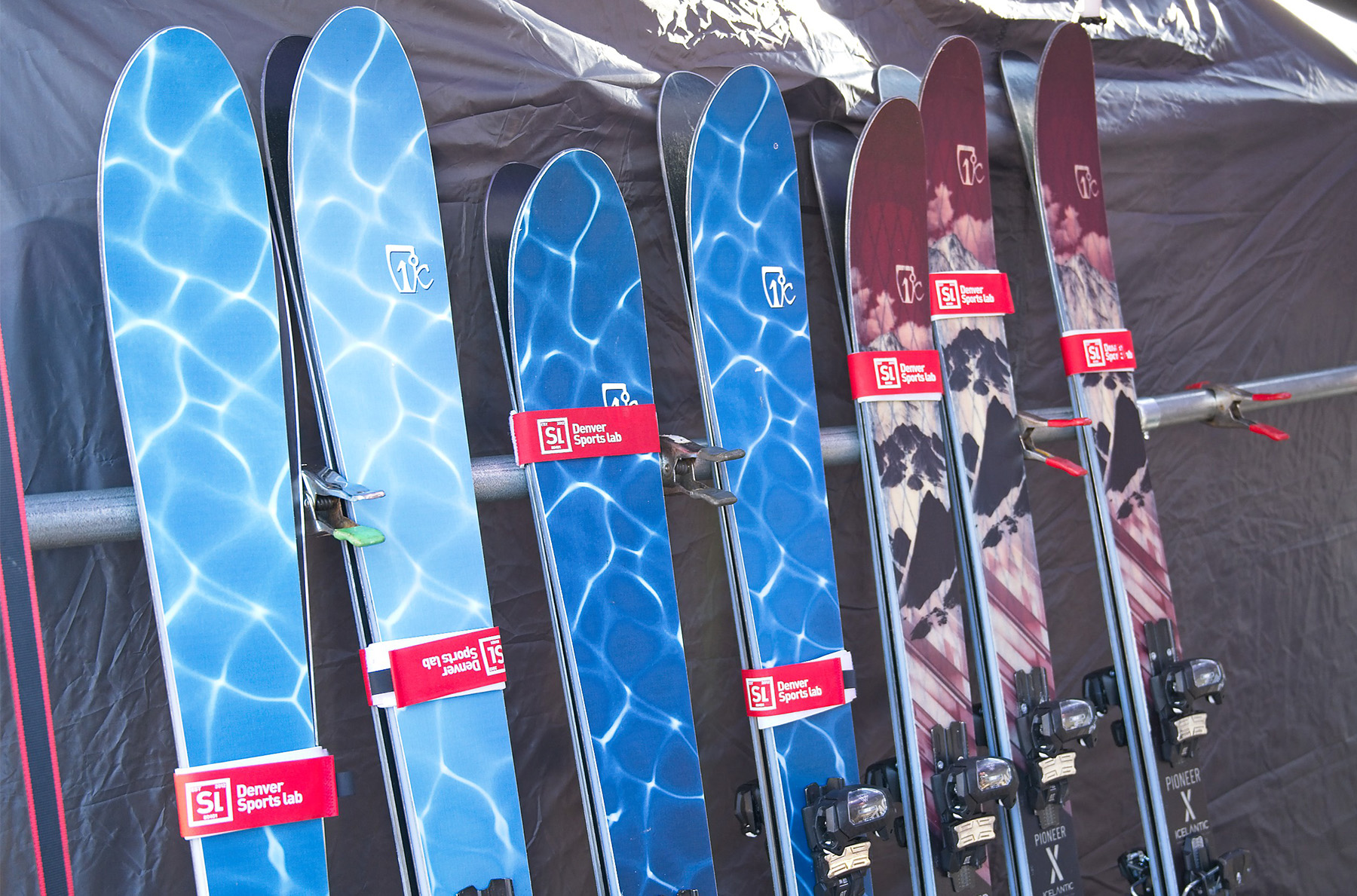
Icelantic also added the Pioneer X, which is a burlier version of their Pioneer 96. The Pioneer X gets a heavier wood core and the addition of a biaxial carbon weave, with the goal of improving damping, stability at speed, and edge hold for those who prefer a stronger, more substantial ski.
K2 Skis & Boots
K2 launched several new skis and boots. As we’ve discussed before, they’ve added versions of their Recon, Anthem, and Mindbender boots that feature the BOA fit system; we’ve got several in for testing and look forward to putting lots of time in them.
On the ski side, they revealed new versions of their Mindbender C skis, the lighter, more accessible alternatives to the Mindbender Ti skis they overhauled for 22/23. The new Mindbender 90 C, Mindbender 96 C, Mindbender 106 C, and Mindbender 116 C feature a new construction with carbon and flax for added damping at minimal extra weight. They also feature deeper rocker lines, particularly in the tail, for added maneuverability. I spent my last day of the Summit on the Mindbender 106 C and I’m super excited about its potential for those who prefer something on the more agile end of the spectrum, but that’s still pretty strong and stable.
They’ve also updated their Wayback line of touring skis (more info coming soon), and replaced the very longstanding Pon2oon with the new 132mm-wide Crescendo. The Crescendo carries on the Pon2oon’s role as a deep-snow specialist, but reportedly with improved high-speed composure and a lighter weight.
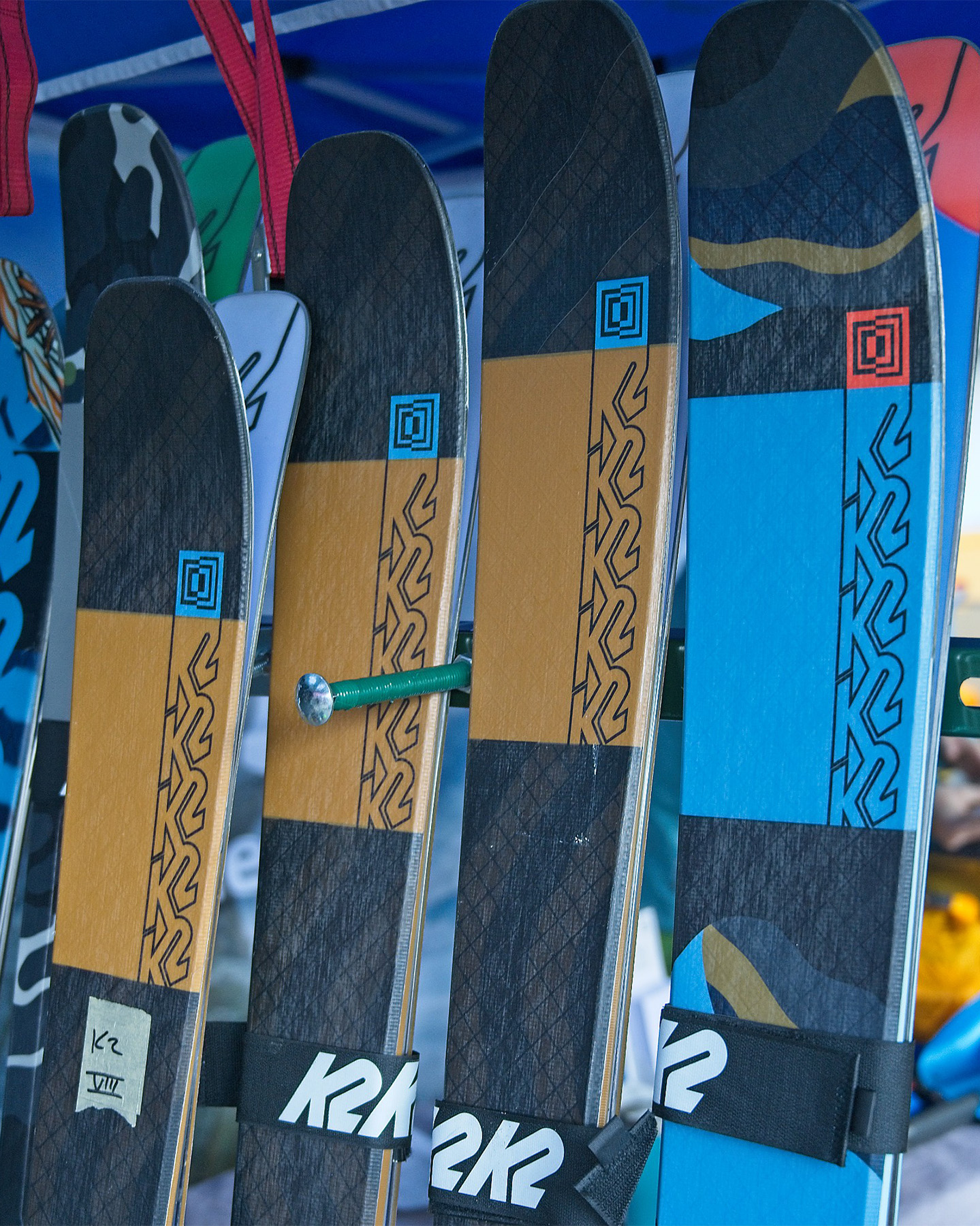
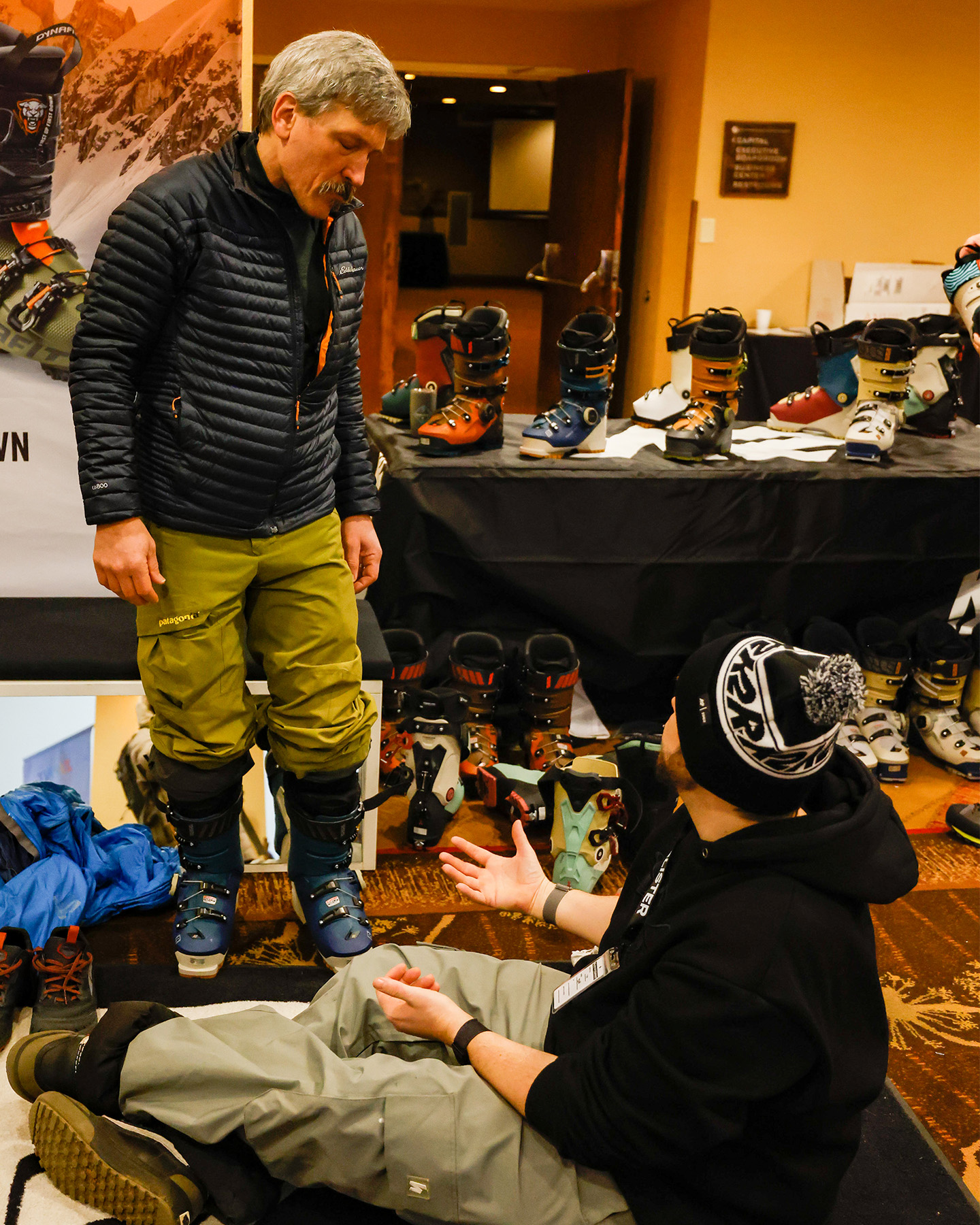
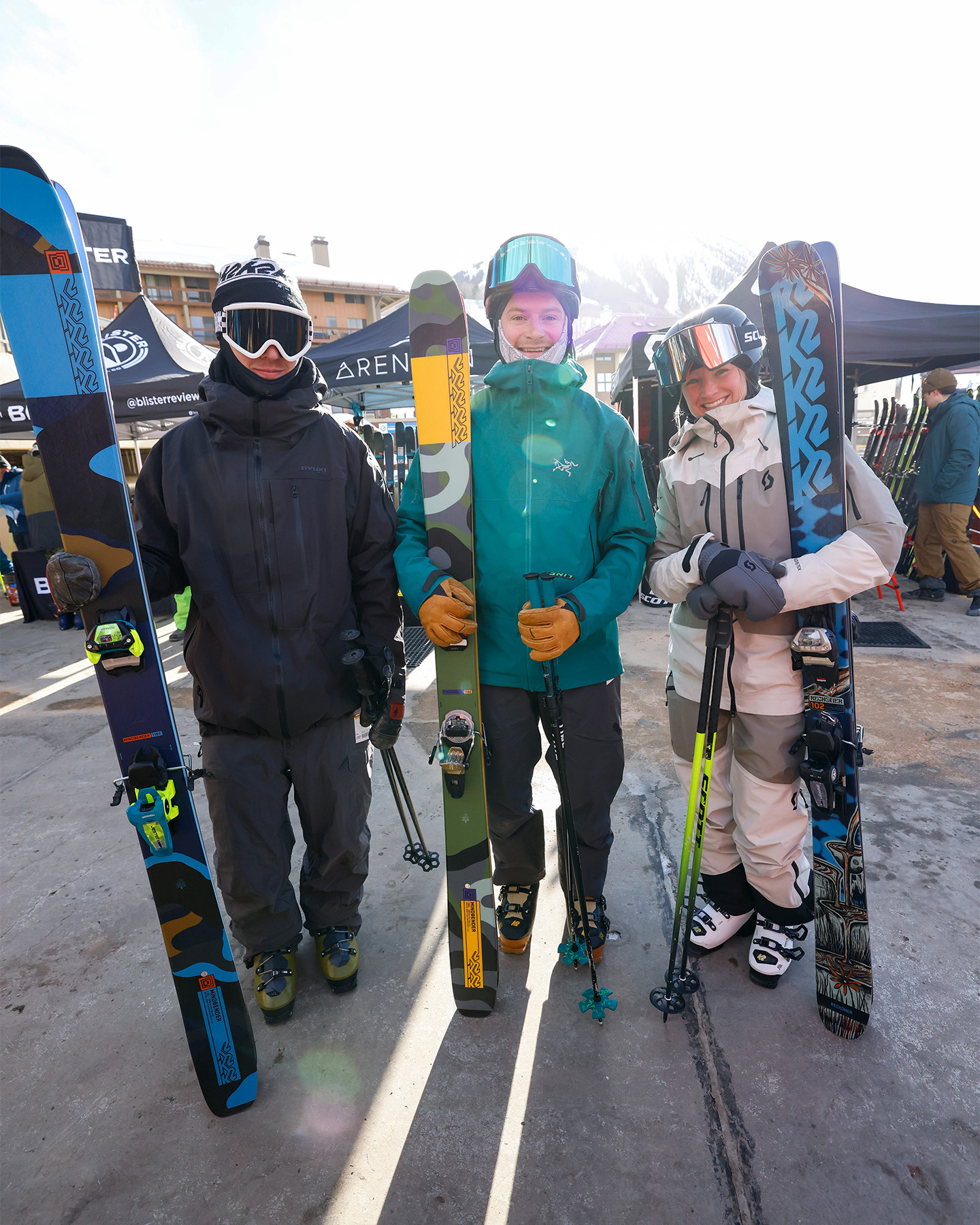
Line Skis
Line launched two new freestyle-oriented series at the Summit: the updated Chronic and Bacon skis.
The new Chronic 94 and Chronic 101 feature several new durability- and sustainability-focused updates that you can learn more about here. The Chronic 101 is a brand-new model, filling the void between Line’s narrower, park-oriented skis and the wider Bacons.
The previous Sir Francis Bacon and Outline are replaced by the all-new Bacon 108 and Bacon 115. The new Bacons feature several of the new construction updates seen in the new Chronics, as well as stiffer flex patterns than the outgoing models. Their shapes and rocker profiles look similar, but the new skis are designed to be a bit more stable at higher speeds. The Bacon 108 and Bacon 115 ditch the convex tips and tails of their predecessors in favor of Line’s new “Thin Tip” construction, which aims to reduce the chance of delamination in those zones, as well as decrease swing weight.
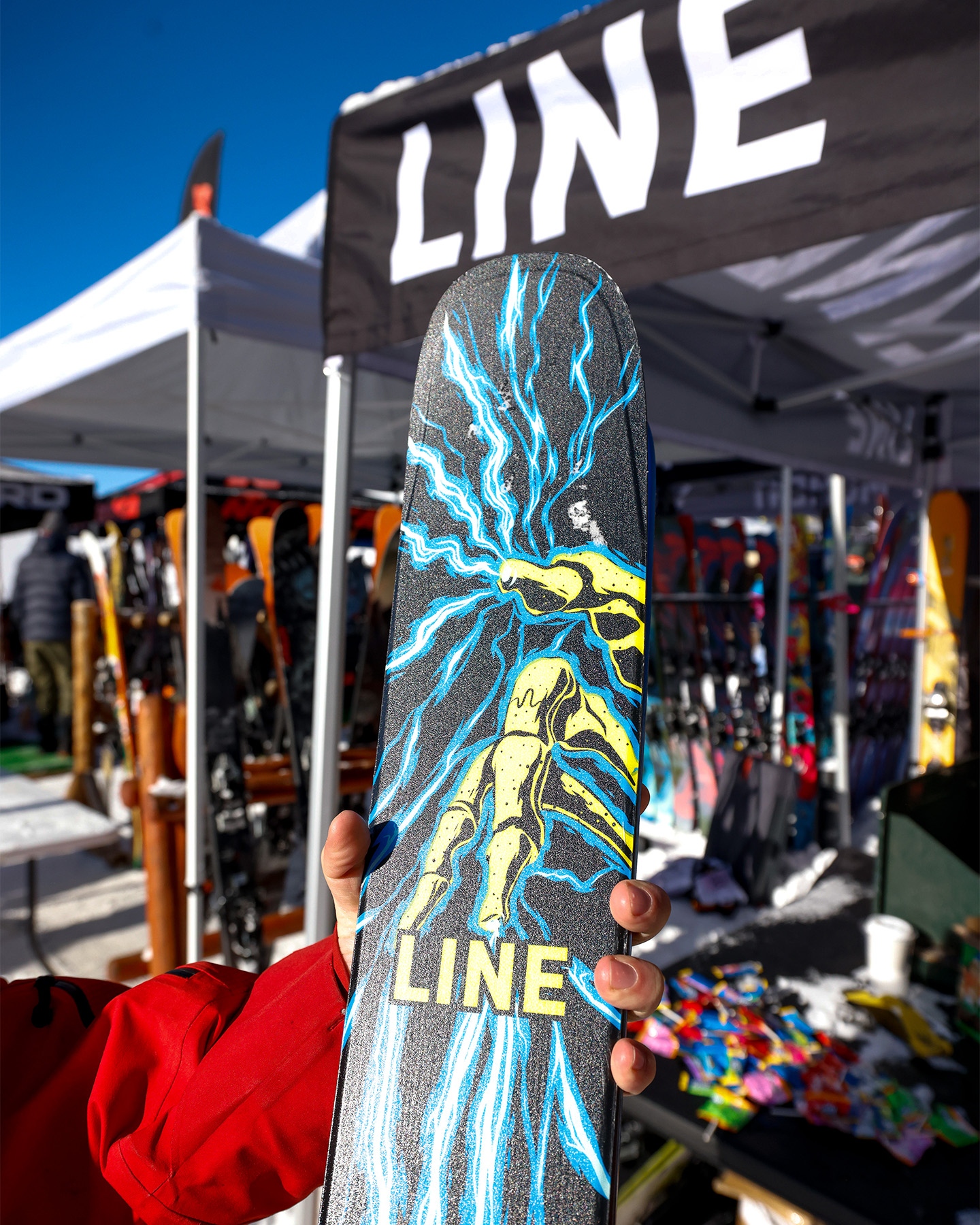
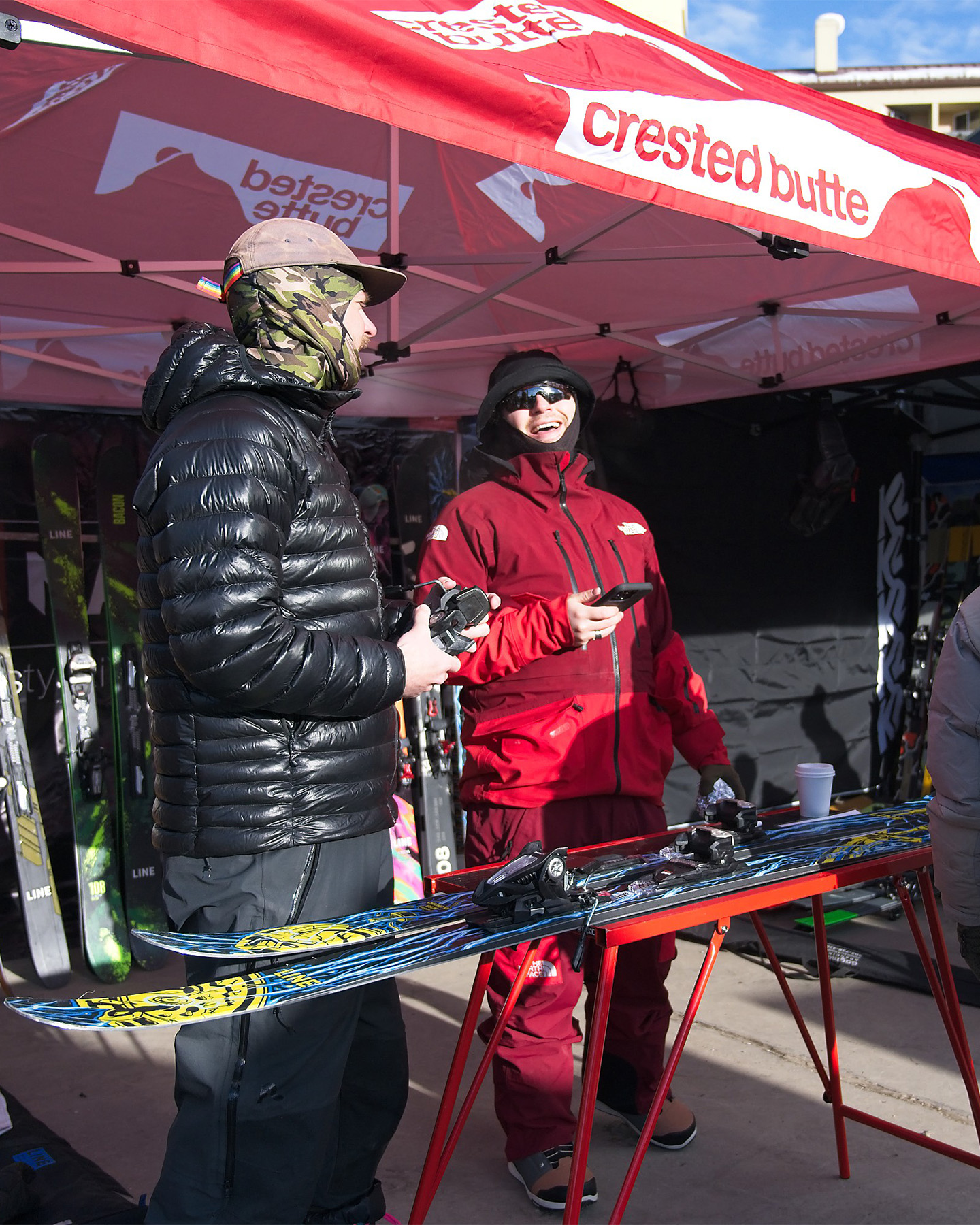
Majesty Skis
Majesty brought their wide-ranging line to the Summit this year, from the recently released, freestyle-oriented Dirty Bear XL to their lightweight touring skis and expansive freeride collection. On that note, they’re adding some new skis to that latter lineup, including a ~100mm-wide Havoc Ti and Havoc Carbon, which I tested at the start of the Summit; we’ll have a Flash Review up for Blister Members, but for now, I’ll just say that they should be on the radar of folks who appreciate a very nimble, directional all-mountain ski that’s just stiff enough to be pushed hard, but not so stiff or demanding that it discourages you from pushing your limits in tight terrain.
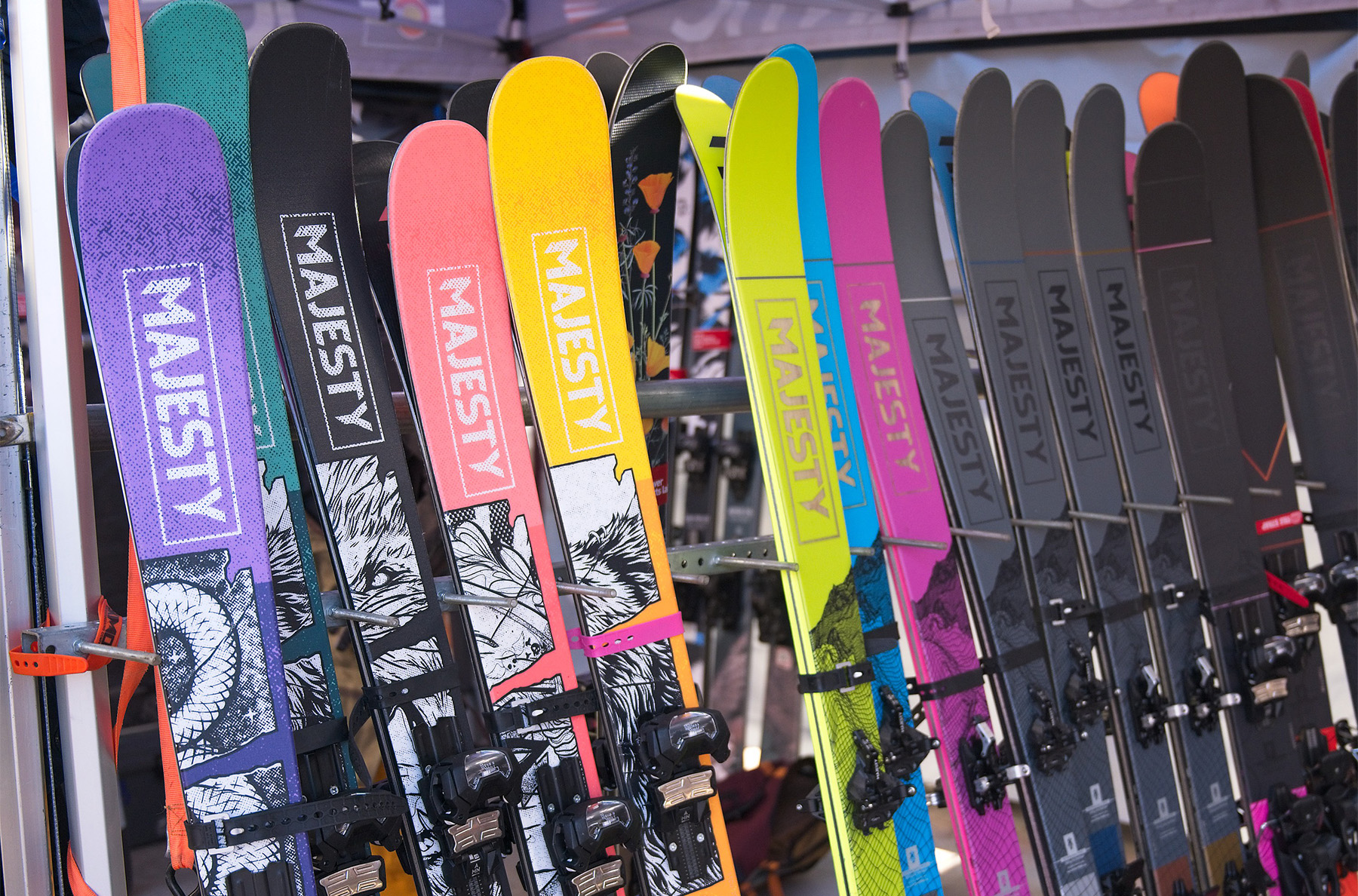
Marker Bindings
Marker launched two new touring bindings, plus a slightly revised lineup of Duke PT bindings.
The Duke PT 16 returns unchanged, apart from two new color options, while the Duke PT 12 is replaced by the Duke PT 13, and the brand-new Duke PT 11 expands the lineup to mirror Marker’s Jester 16, Griffon 13, and Squire 11 alpine bindings, respectively. The construction updates are pretty minimal, but the Duke PT bindings now all feature what is essentially the same heel piece of their respective alpine-binding counterpart, but with uphill capabilities.
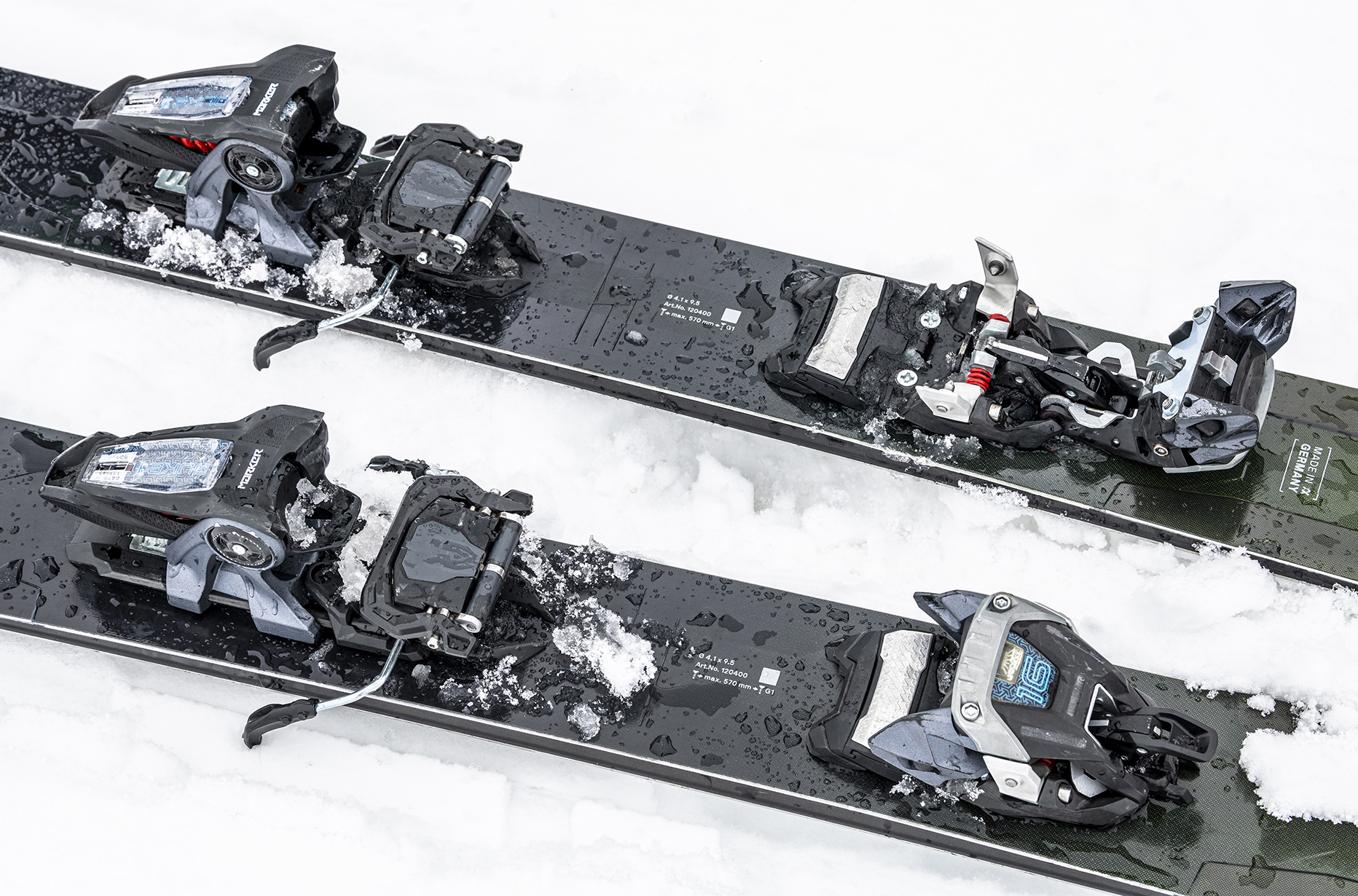
The new Cruise Tour binding fills the void between the Marker Alpinist and Marker Kingpin. The Cruise is a full-pin touring binding, but it features larger heel risers and an easier step-in process than the Alpinist; the main goal of the Cruise is to create a pretty lightweight touring binding that is very easy to use. The Cruise has independently adjustable vertical and lateral release (it’s not a U-spring binding), and uses bio-based plastic.
Lastly, the new F5 JR is a frame-style touring binding for kids with smaller boots and lower release values.
(more images coming soon)
Meier Skis
Meier Skis, based out of Colorado, had tons of their skis available for testing at this year’s Summit, including the recently released Leeper, the pro model of Owen Leeper. Check out our Flash Review of the Leeper for more, but the short story is that it’s a pretty stable, damp ski that’s also surprisingly accessible for those (i.e., most) of us who aren’t skiing as fast or going as big as Owen. Of course, they’ve got lots of other skis, spanning a massive width range, including the 94mm-wide Wrangler and 92mm-wide women’s BNK, both of which we have on hand for long-term testing.
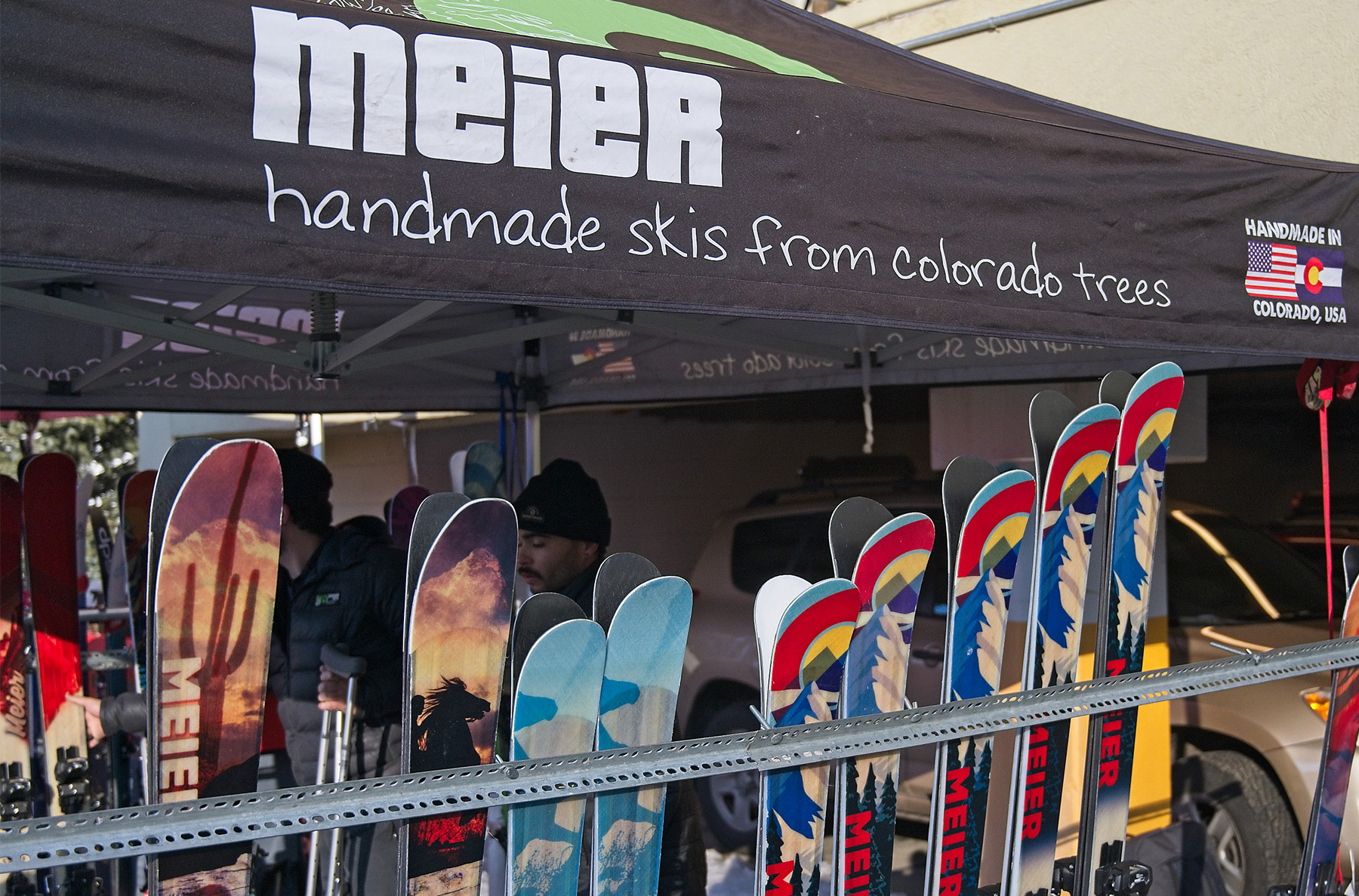
Moment Skis
Moment had two new skis at the Summit: the brand-new Countach 110 and the new 196 cm length of the Wildcat.
The Countach 110 fills the gap between Moment’s Wildcat and Commander series. The Countach 110 doesn’t have nearly as much tail splay as the Wildcat, but it has deeper rocker lines than the Commander skis. Similarly, the Countach 110’s recommended mount point of -8 cm from center splits the difference between the Wildcat (-6) and Commander (-10). While the Countach 110 doesn’t feature the metal layers of the Commanders, it does use their heavier poplar / beech wood core, and is designed to be a bit more damp and stable than the Wildcat 108, but more maneuverable and forgiving than the Commander 108.
Blister Members can check out our initial impressions of the Countach 110 in our Flash Review.
And with the introduction of the 196 cm length, bigger folks now have another option to choose from if considering Moment’s iconic 118mm-wide Wildcat.
Moment also has some other new things coming that they weren’t quite ready to unveil at the Summit and that we can’t talk about quite yet. Stay tuned…
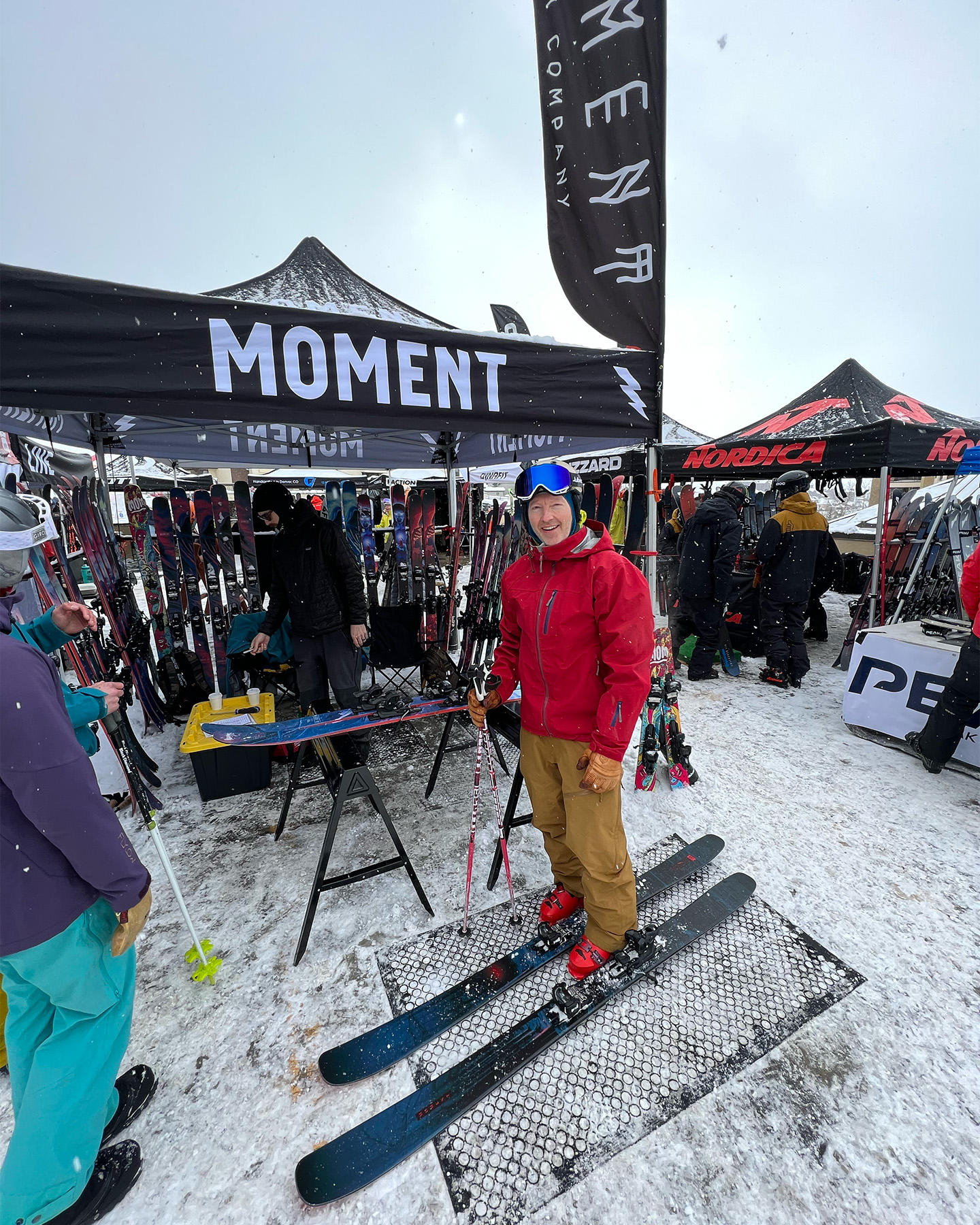
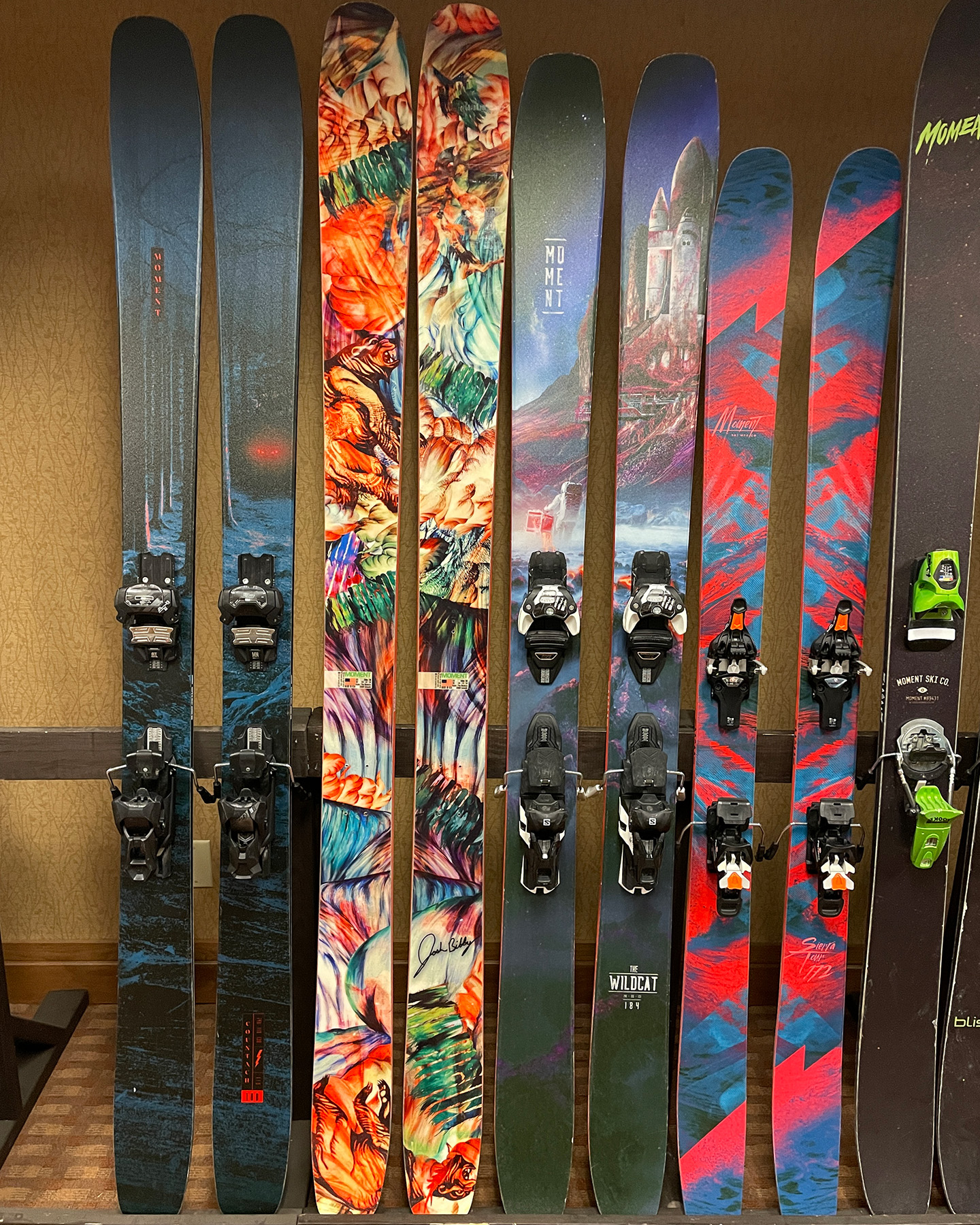
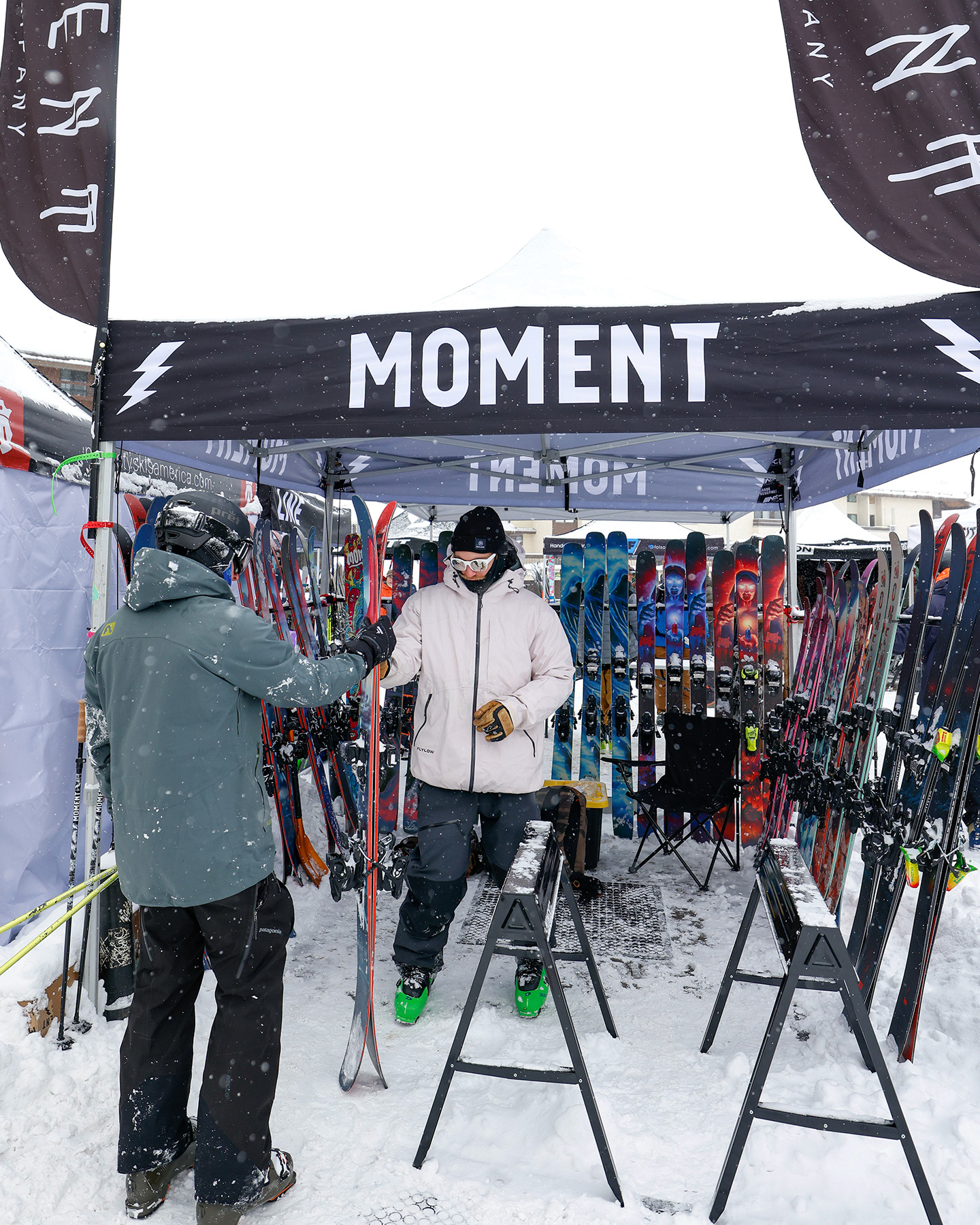
Nordica Skis & Boots
Nordica is producing a few new skis and boots for 23/24, starting with their brand-new Unlimited line of touring boots. We got along very well with Nordica’s Strider series of boots, but they were fairly heavy and didn’t walk that well if you were spending a lot of time on the skin track. The Unlimited boots are lighter (reportedly around 1500 g per boot) and offer better range of motion (65°) than the Striders, thanks to a new construction and external walk mechanism. They also ditch traditional lower buckles in exchange for a more minimal cable system (though there are still 2 lower buckles). The Unlimited boots have a stated last width of 99 mm and are available in flex ratings from 95 to 130, including an “LT” version of the 130 that uses lighter materials.
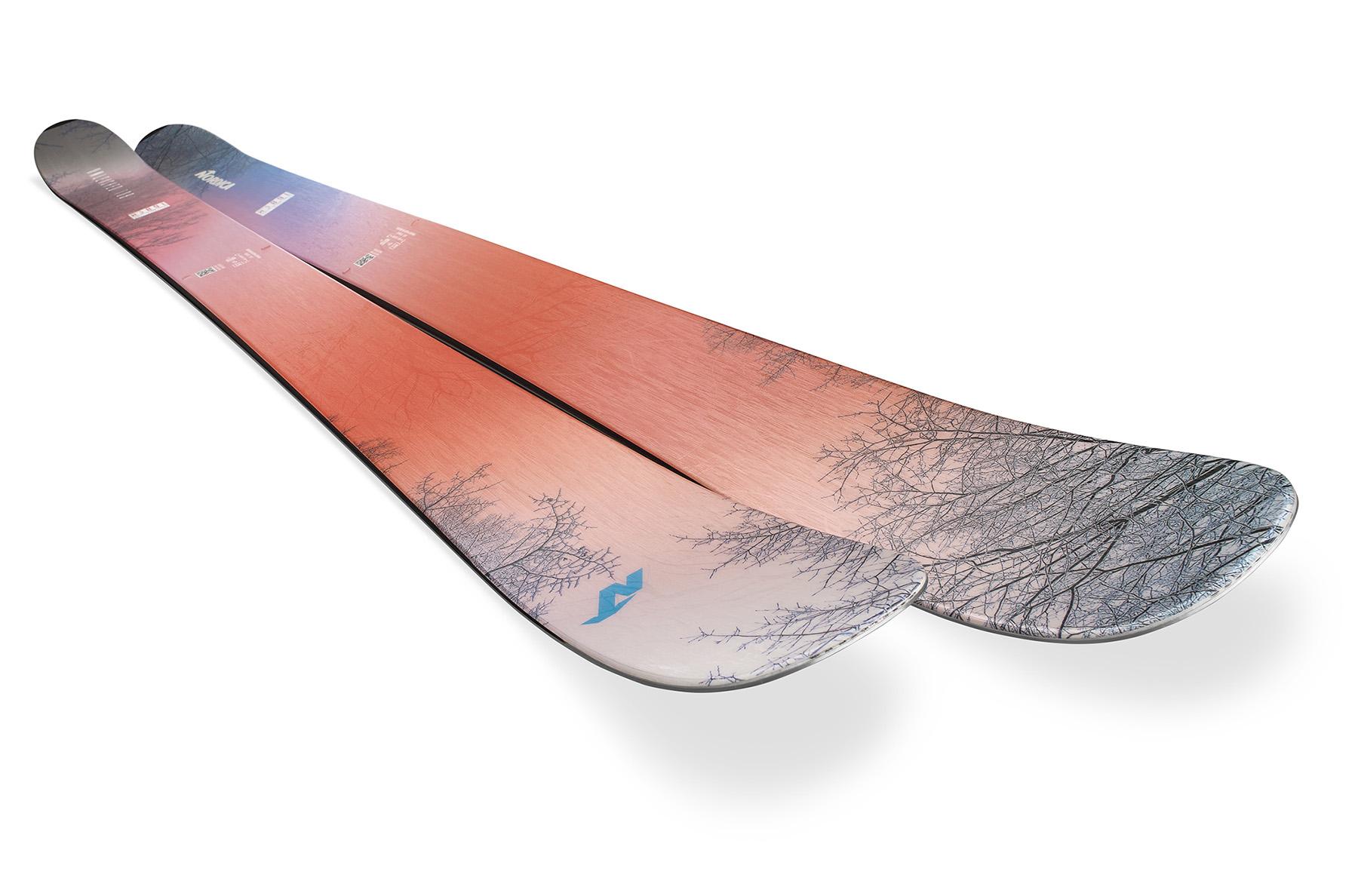
On the ski side, Nordica’s Enforcer and Santa Ana series return unchanged, apart from new graphics, but they’re adding a new Unleashed 114 and women’s Unleashed 108 to their newest line of playful all-mountain skis. They’re also adding a women’s Santa Ana 104 Unlimited to their Unlimited touring ski collection.
Ortovox Apparel, Backpacks, & Avalanche Gear
Ortovox had a wide array of gear available for testing at the Summit, from new outerwear kits to their avalanche safety gear and backpacks. We’ve got a Blister Summit Brand Lineup video coming out in the future, so keep an eye out for more info about the new gear they’ve got coming for 23/24.

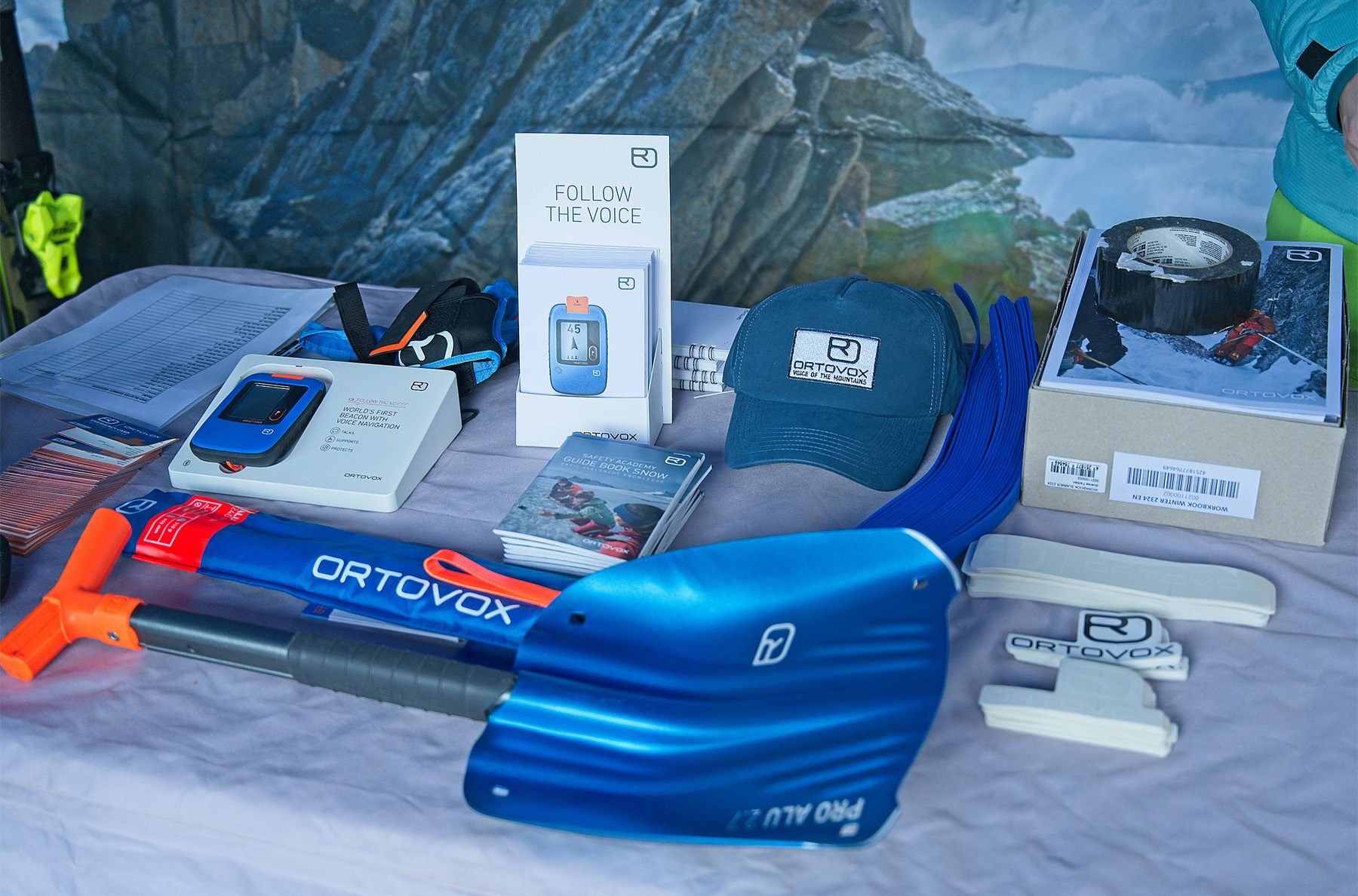
Peak Skis
The 2022-2023 season was Peak’s first season in full production, and they had their whole lineup available for testing at the Summit. That includes the Peak 88, Peak 98, Peak 104, and Peak 110, as well as the lighter, more touring-friendly Peak 98 SC and Peak 104 SC. All of them feature Bode Miller’s signature “KeyHole” technology, which you learn more about here. We’ve got the whole line in for long-term testing, so stay tuned for much more info to come.
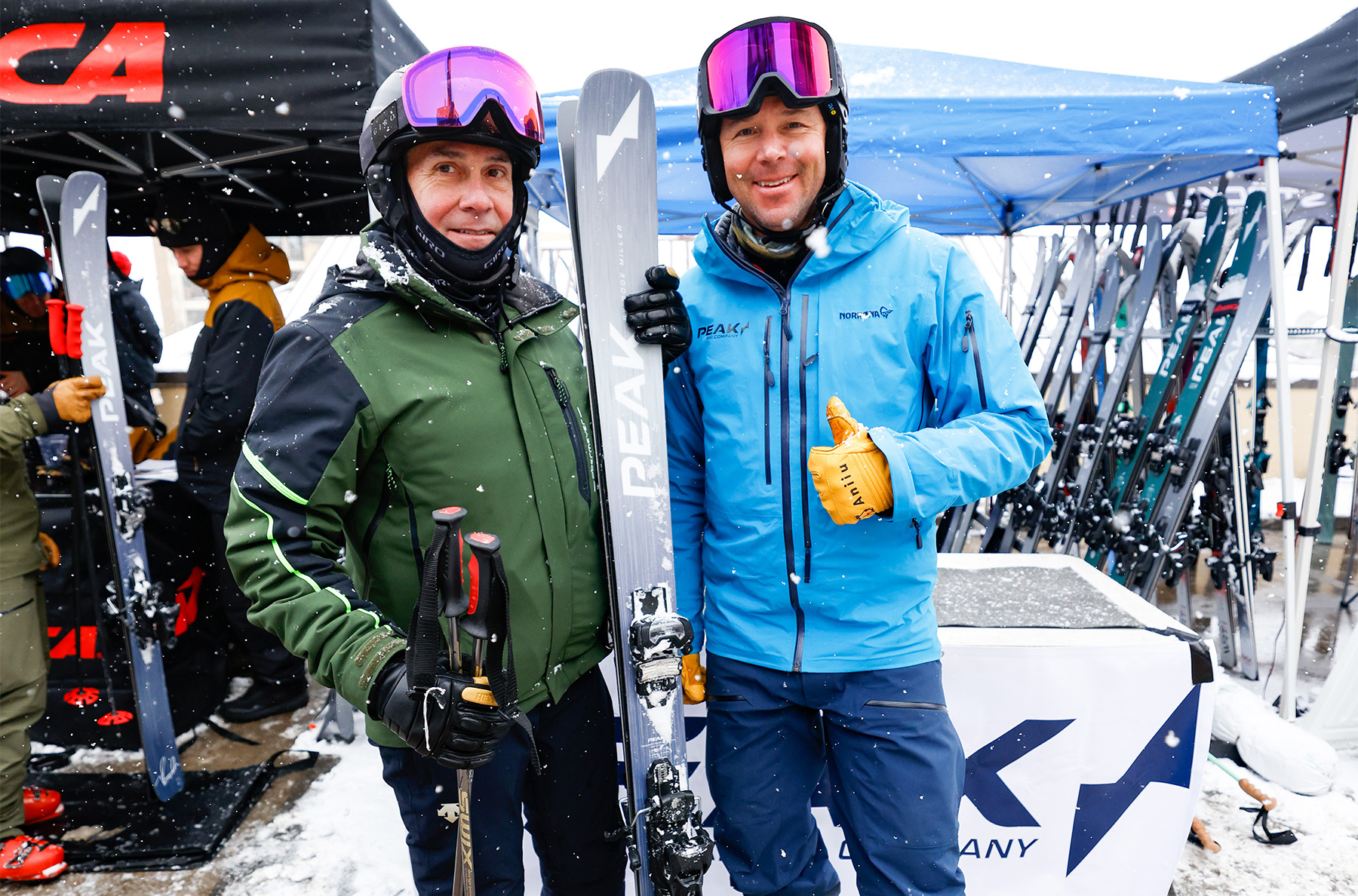
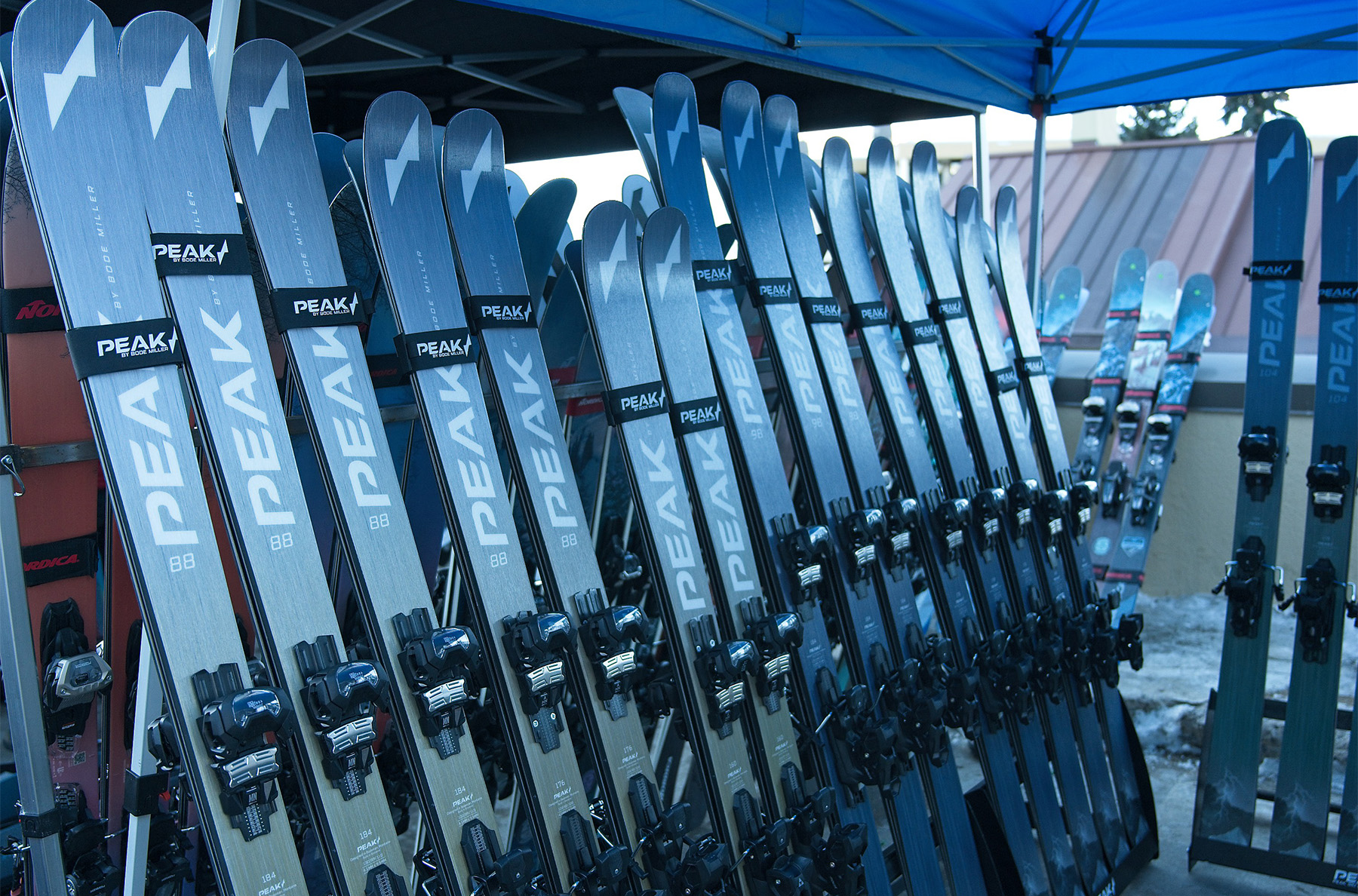
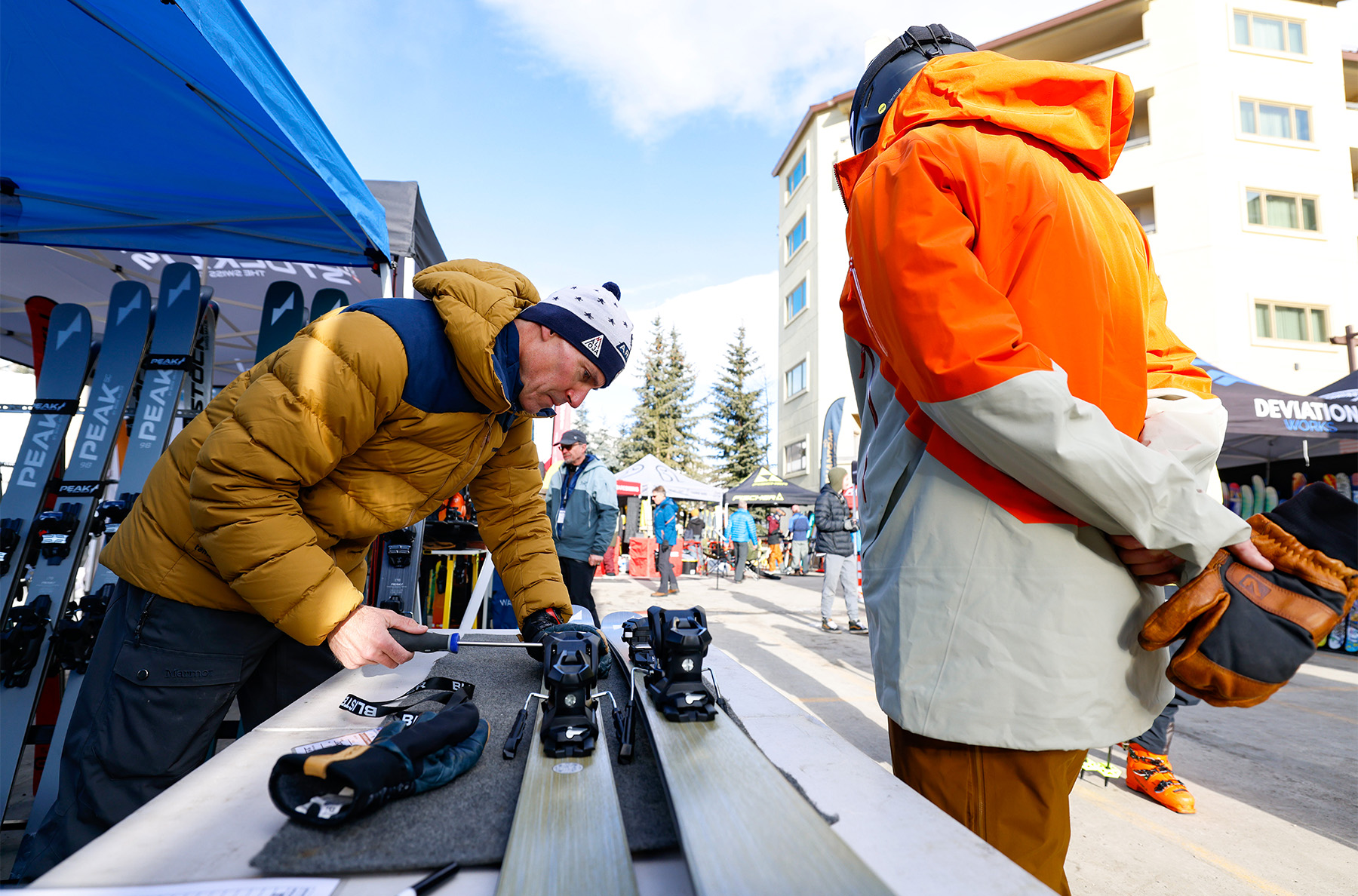
Pomoca Skins
Pomoca’s line of climbing skins mostly carries over for 23/24, with three main collections: Race, Climb, and Free. The Race skins are unsurprisingly focused on low weight, great glide, and packability. The Climb series is more focused on grip and durability, while the Free collection is designed for wider skis and consequently emphasizes low weight and packability. We’ve become big fans of several Pomoca skins, and we’ve got an upcoming Blister Summit Brand Lineup video that includes some very valuable information on how to properly take care of your skins.
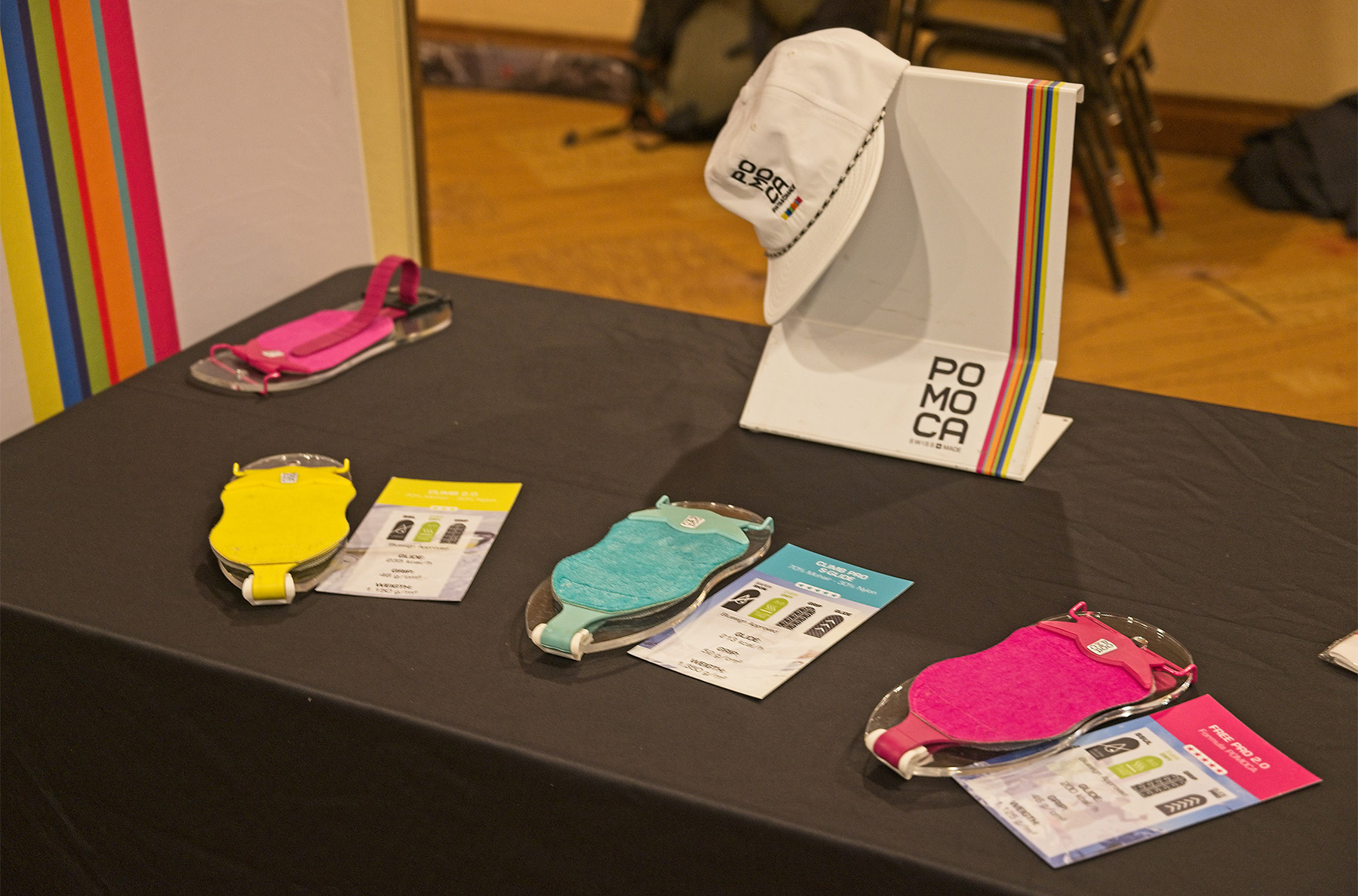
Renoun Skis
Renoun had their full lineup of skis at the Summit, all of which feature their proprietary non-Newtonian “VibeStop” construction, which makes the skis feel softer and more accessible at low speeds but stiffer and more stable at higher speeds. Most of their line carries over (with new graphics) for 23/24, though they had some Endurance 88 prototypes at the Summit, which we’ll be able to say more about in the future.
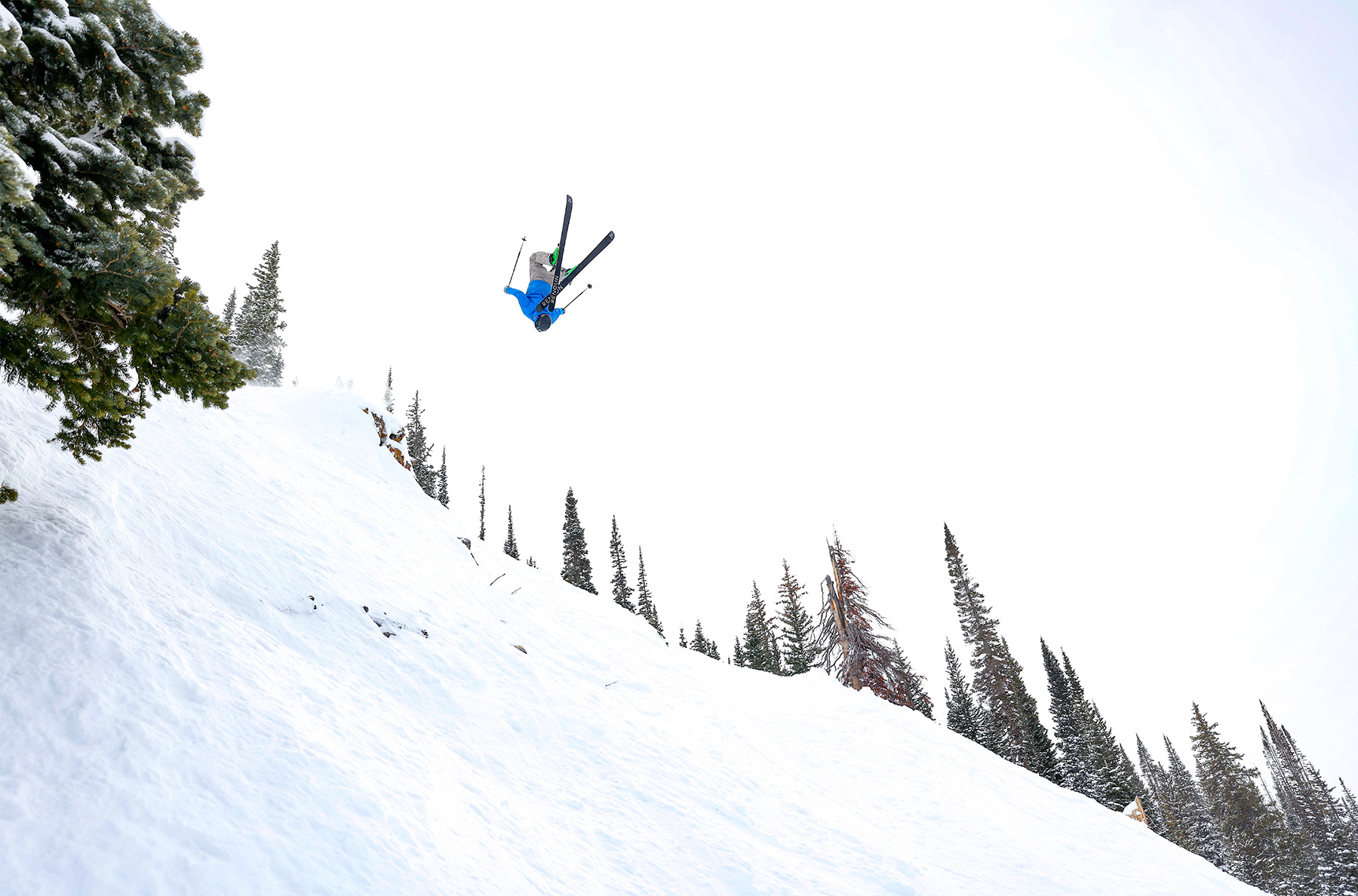
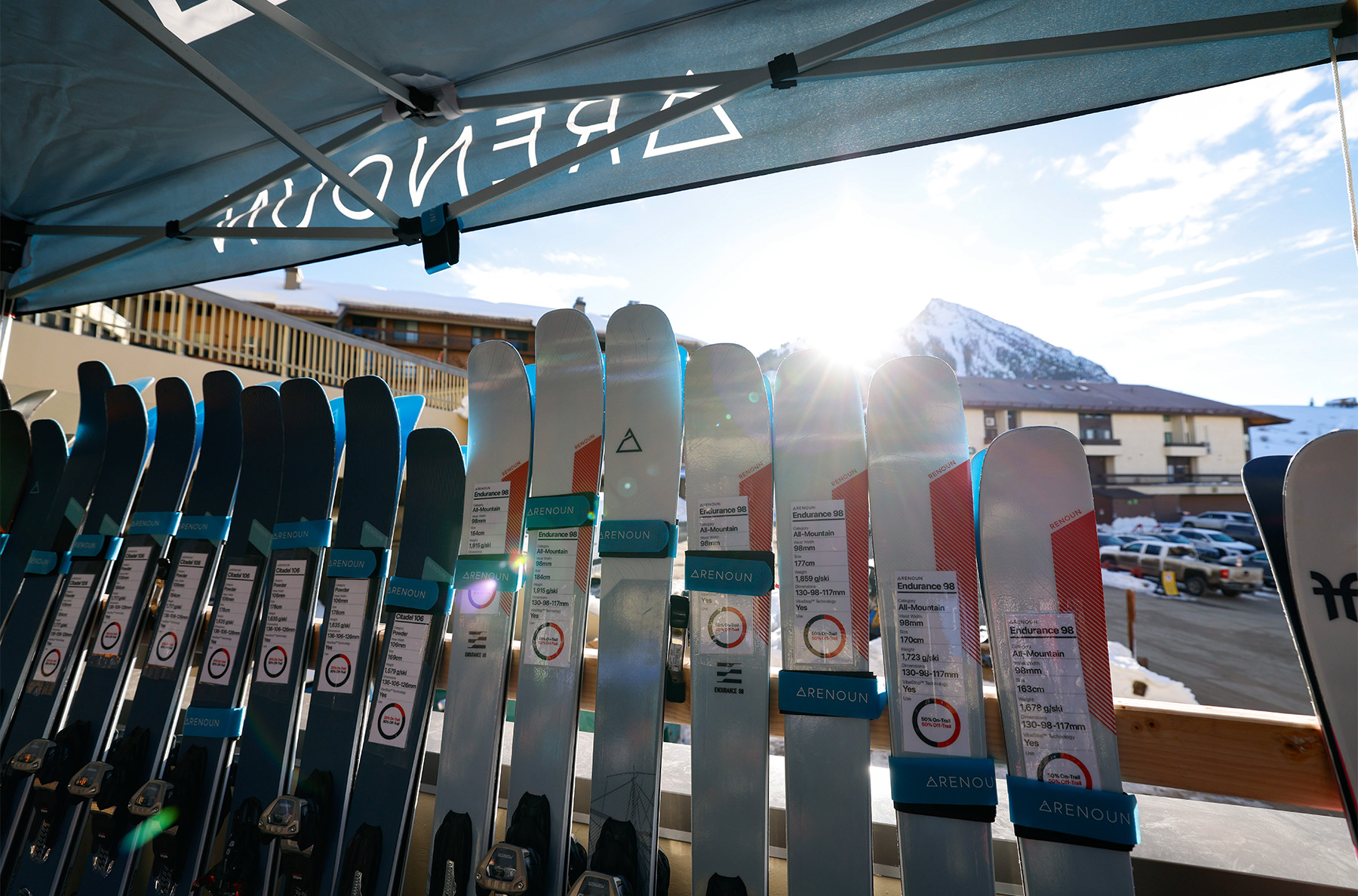
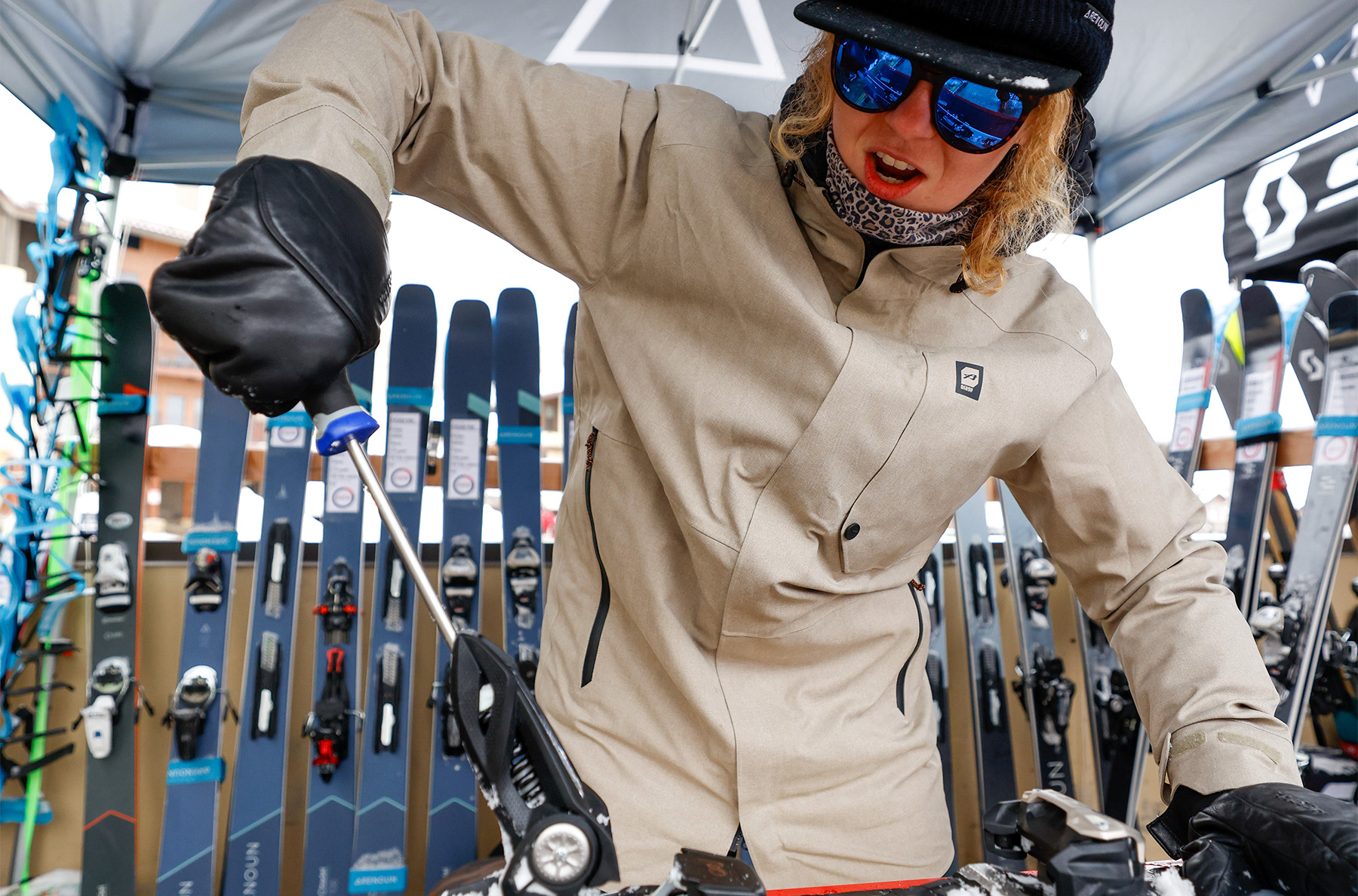
Rossignol Skis & Snowboards
Rossignol’s big news for 23/24 is the introduction of the Sender Free 110. You can read more about it in our First Look and Flash Review, but the short story is that it combines elements of the freestyle-oriented Rossignol Blackops 118 and more directional Sender 106 Ti+, with a fairly symmetric shape and rocker profile that’s ideal for a playful skiing style, but a substantial construction that’s designed to handle the high speeds and variable conditions of big-mountain lines.
Additionally, they brought their new Forza skis, which aim to bring on-piste precision and high edge angles to a wider audience. The Forza line spans everything from beginner-oriented carving skis to stout expert models, positioned as the more approachable alternatives to Rossignol’s Hero lineup.
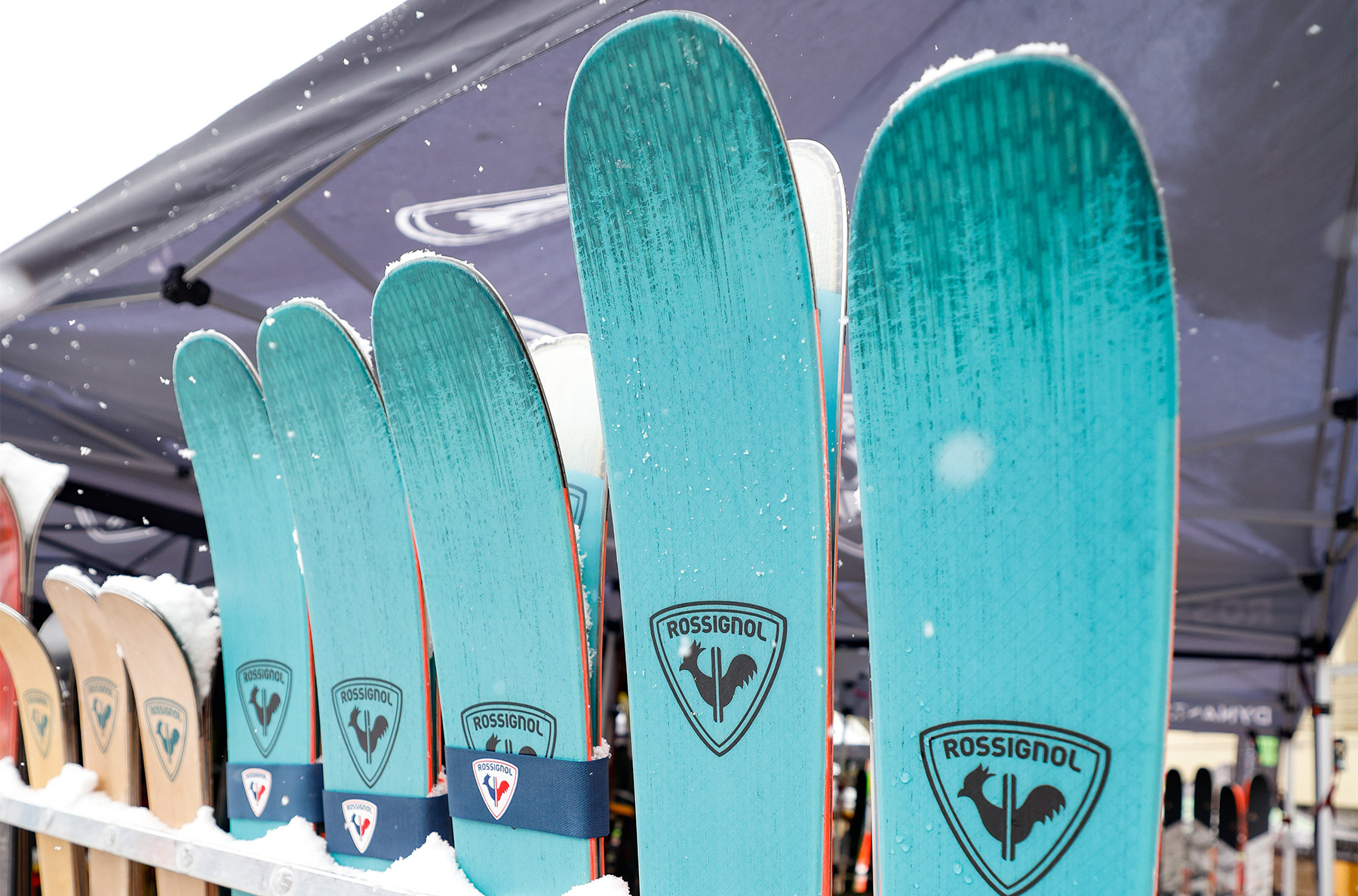
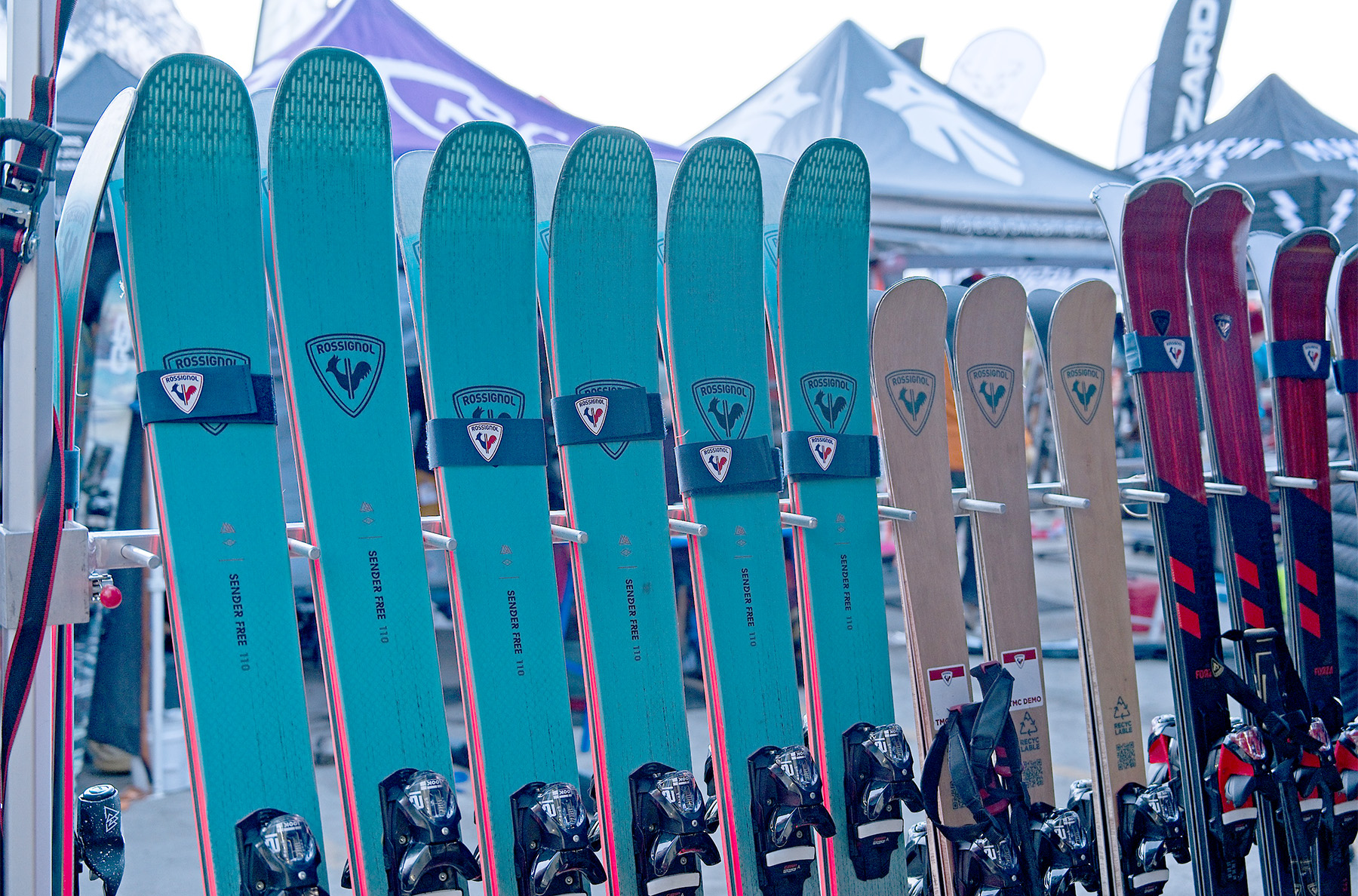
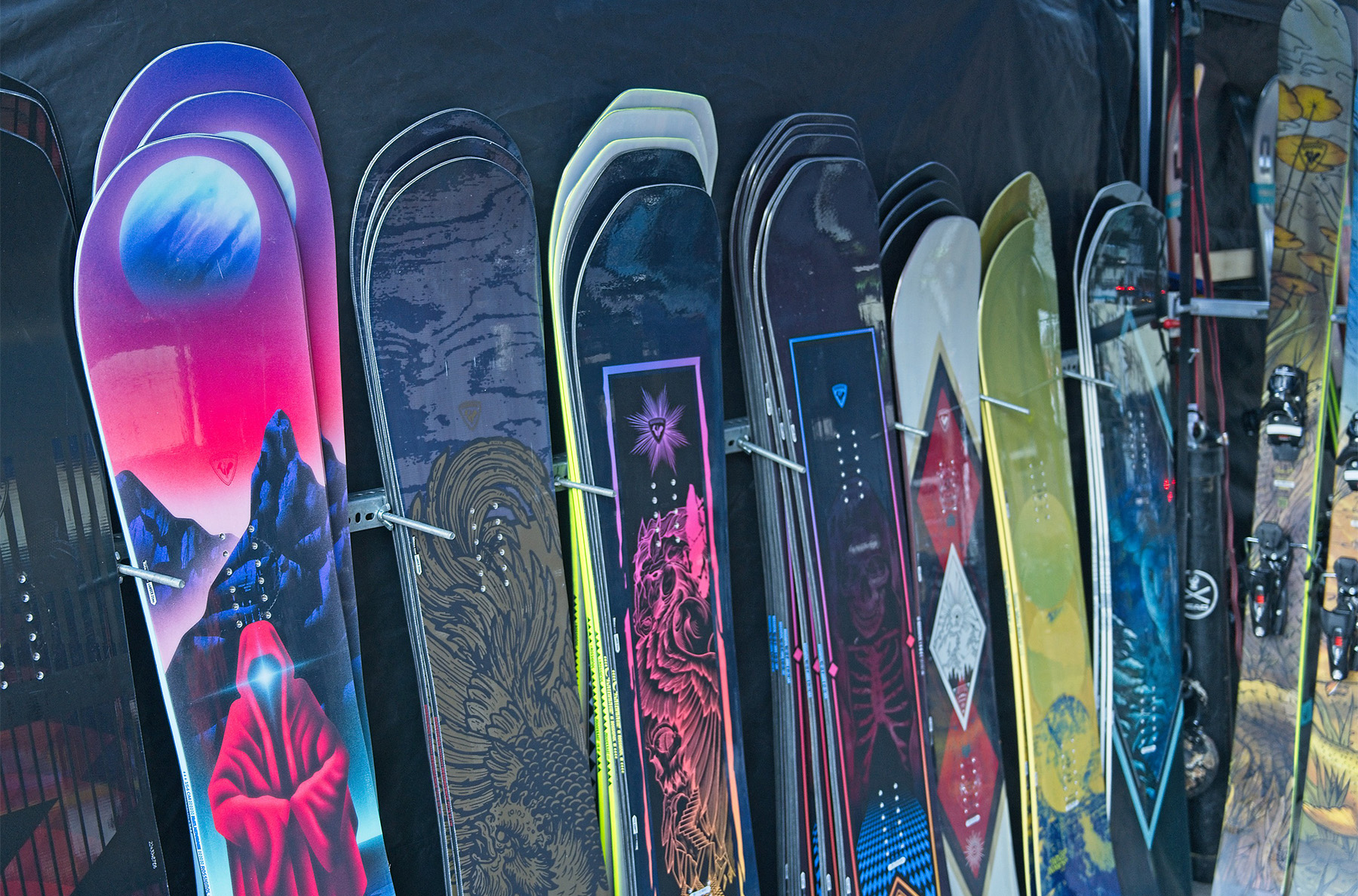
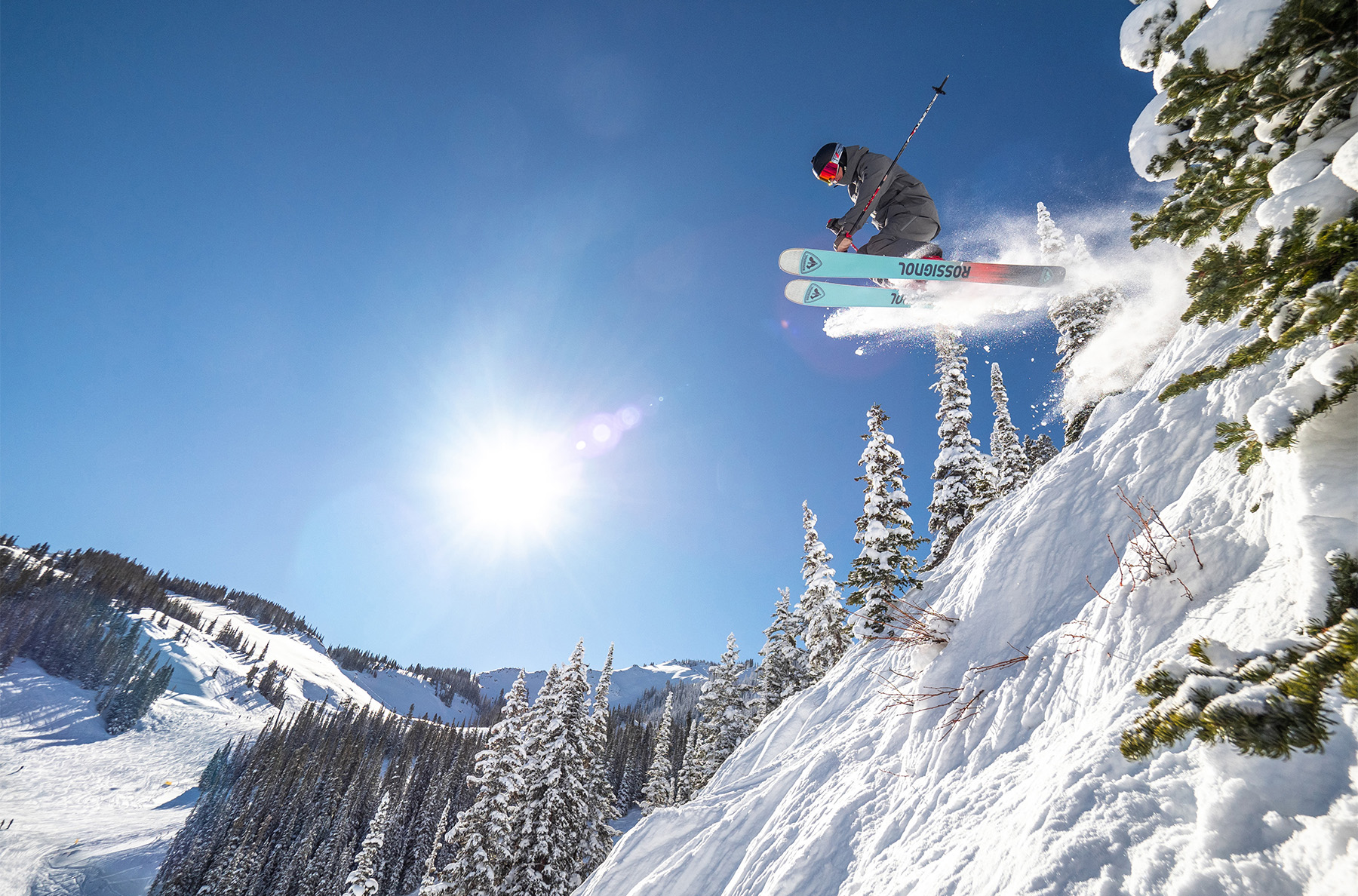
With extremely long effective edges and a variety of widths and sidecut radii, we’ve enjoyed our time on several Forza skis so far; we’ll have Flash Reviews up in the future.
Rossignol also brought a ton of snowboards and bindings to the Summit this year, including one that was a favorite of our audio engineer and reviewer, Justin Bob — check out our next GEAR:30 podcast episode to hear about it.
Salomon Skis, Bindings, & Boots
Salomon’s got a lot of new product coming for 23/24, starting with the QST Echo 106, which is a lighter, more touring-oriented version of their standard QST 106. You can learn more in our First Look of the QST Echo 106, but after getting on it at the Summit, we’re really excited about this ski. On a similar note, Salomon has added a new full-pin touring binding, the MTN Summit, which serves as a slightly burlier alternative to the existing MTN Pure binding. The MTN Summit’s toe is very similar, with the main difference being a switch to fiberglass-reinforced plastic instead of aluminum. The heel features more notable differences, with adjustable lateral release (vertical release is still determined by its U-spring). The MTN Summit also gets an “AutoFlex” heel track that’s designed to move with the ski as it flexes, to better absorb impacts, reduce “dead spots” on the ski, and reduce the chance of pre releases.
On the alpine side, the whole Stance series sees an update. These dual-metal-laminate skis get the lighter karuba / poplar core from the women’s Stance skis and add slight cutouts in their metal layers near the tips and tails to make them a bit easier to release / pivot and just a bit more accessible overall.
On the boot side, we see the introduction of the S/PRO Supra BOA boots, which are 100mm-lasted boots that feature BOA dials for their lower closures (among several other new features). We’ve got some in for testing, so stay tuned.
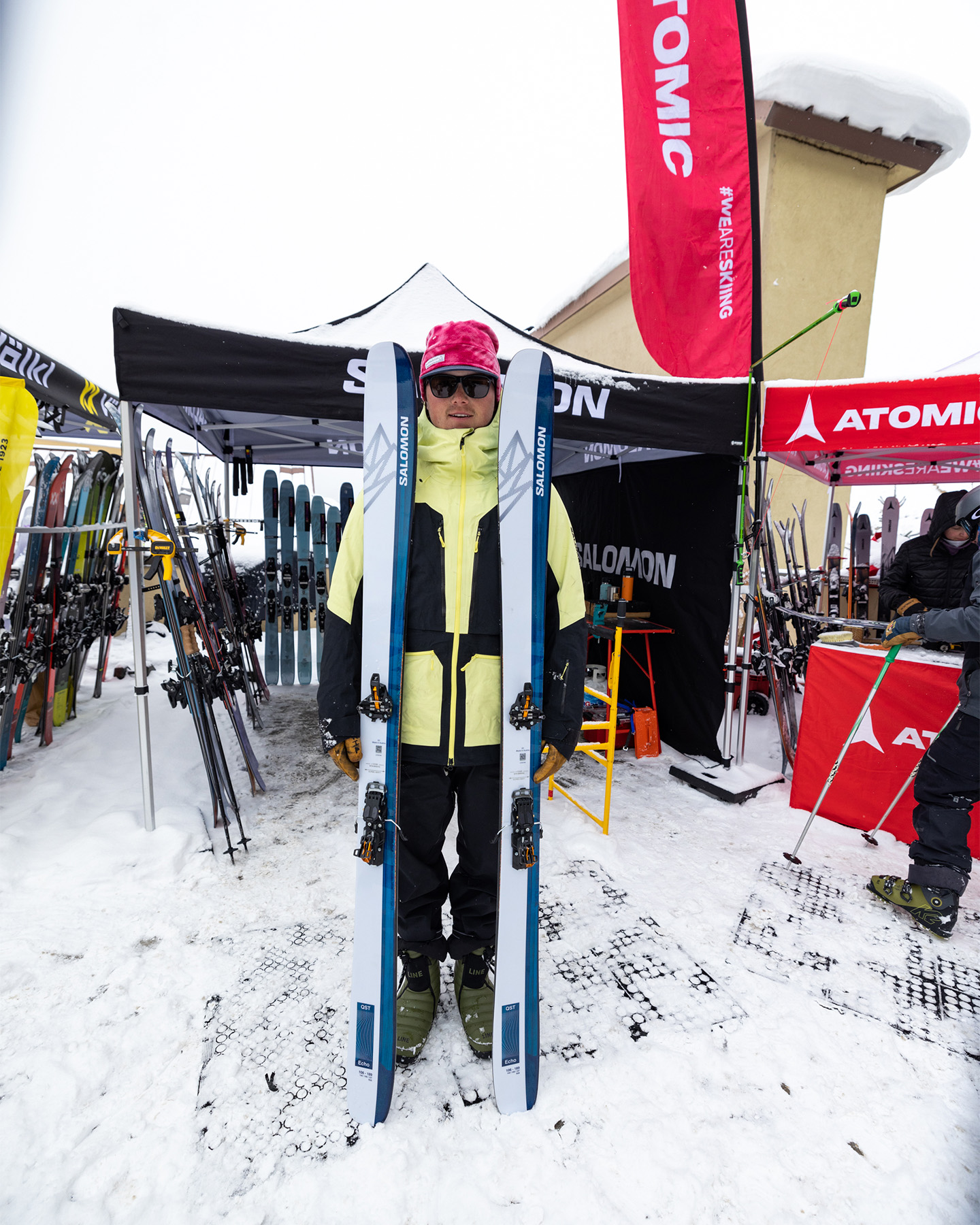
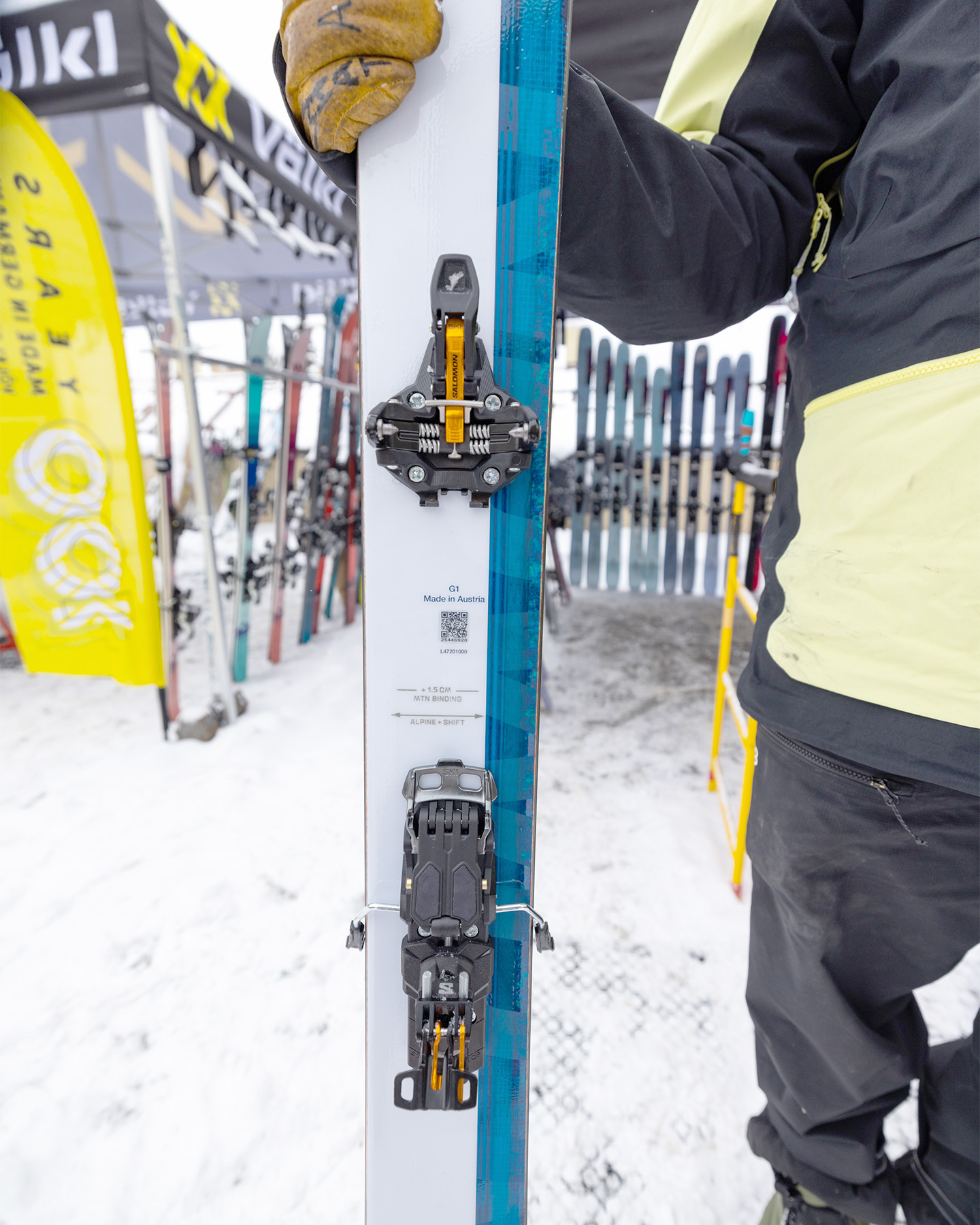
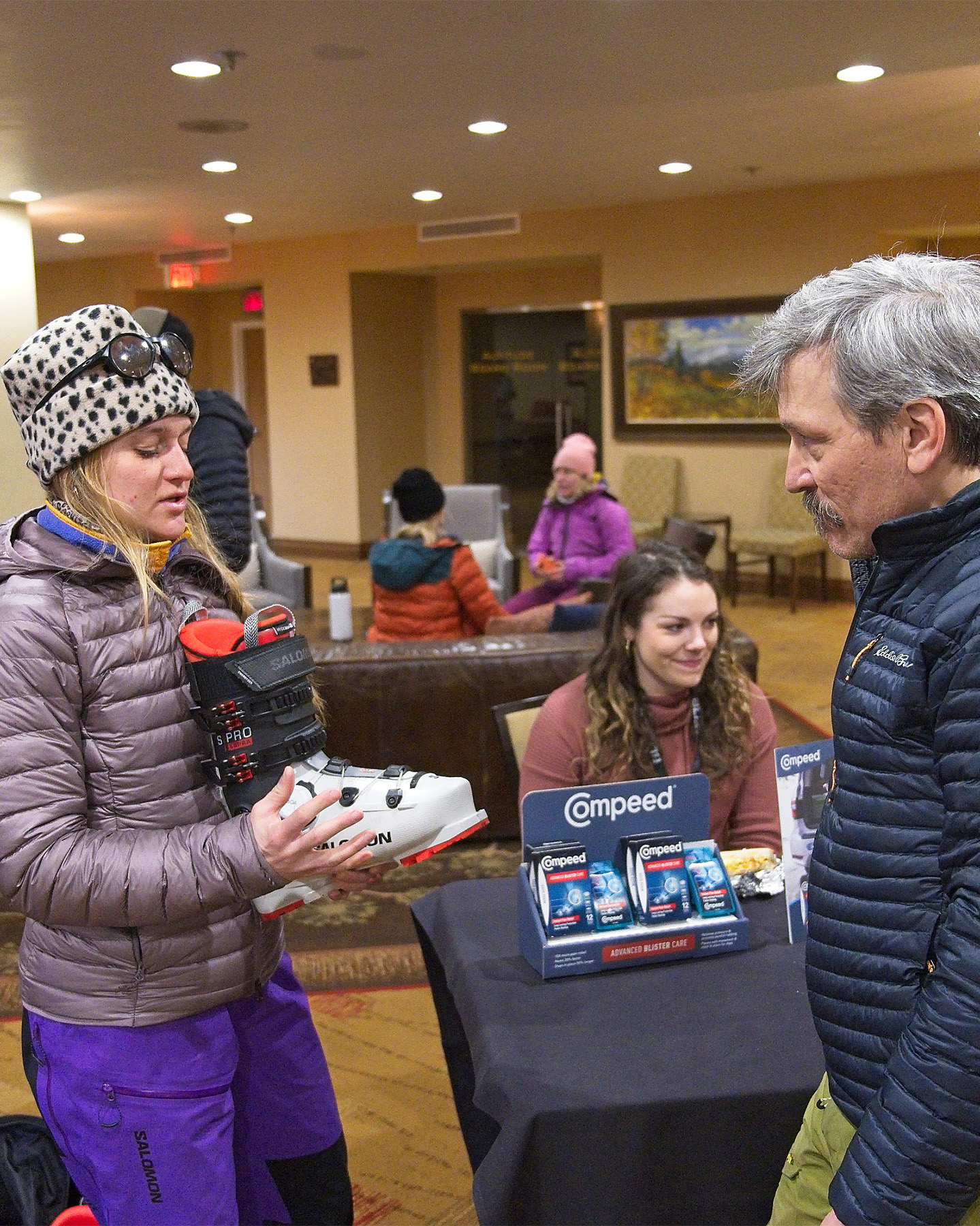
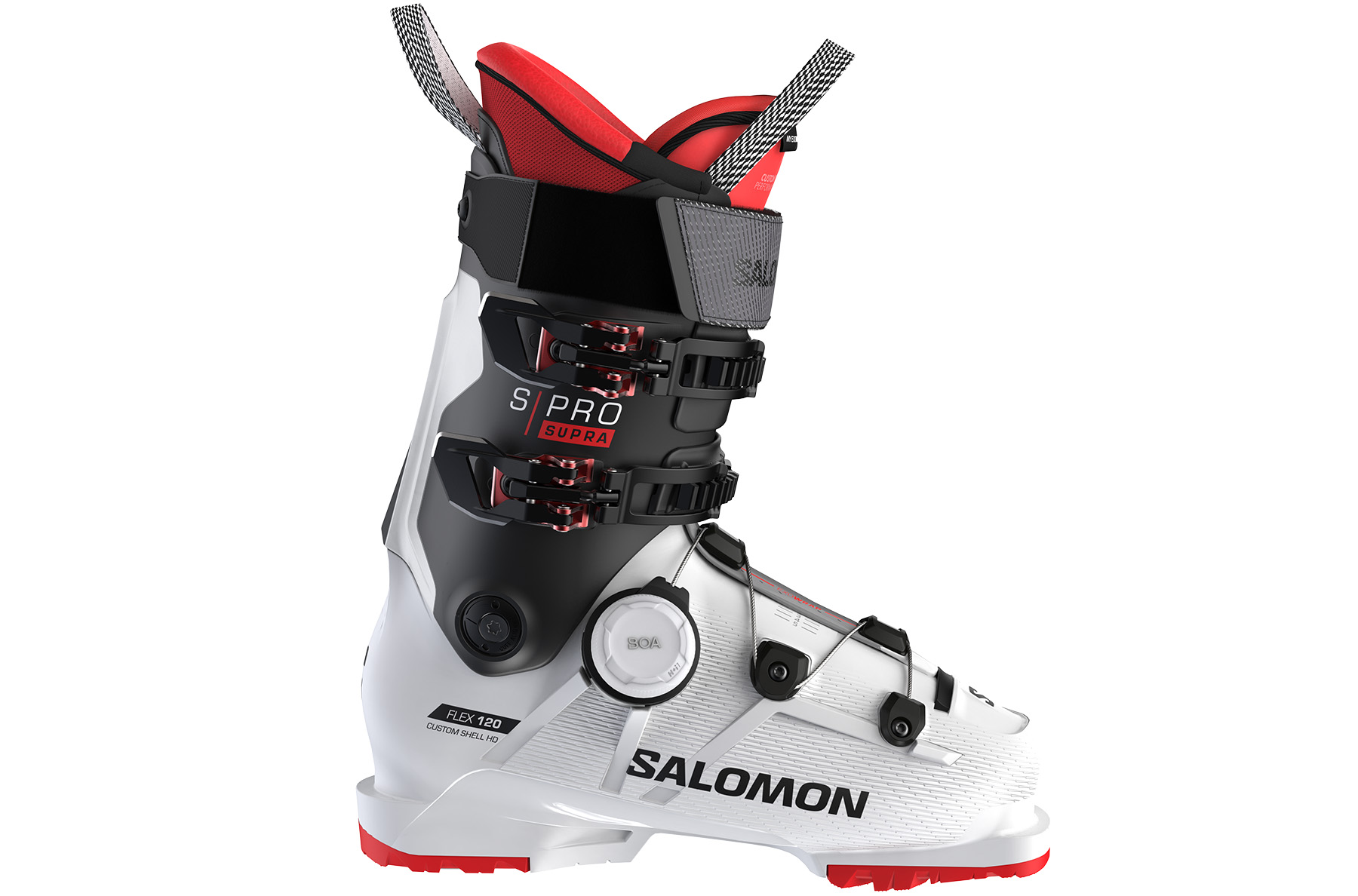
Scott Skis & Boots
We’re working on getting more info from Scott, but we got on several of their recently updated “Pure” skis at the Summit, and we know they’ve got some new lightweight touring boots, too. The Pure skis struck us as particularly strong skis for aggressive skiers, which makes sense, given that they were designed with Jeremie Heitz in mind, though the Pure lineup now spans all the way from 77mm-wide piste skis to 115mm-wide pow skis, which isn’t all that common these days. Stay tuned for more info.
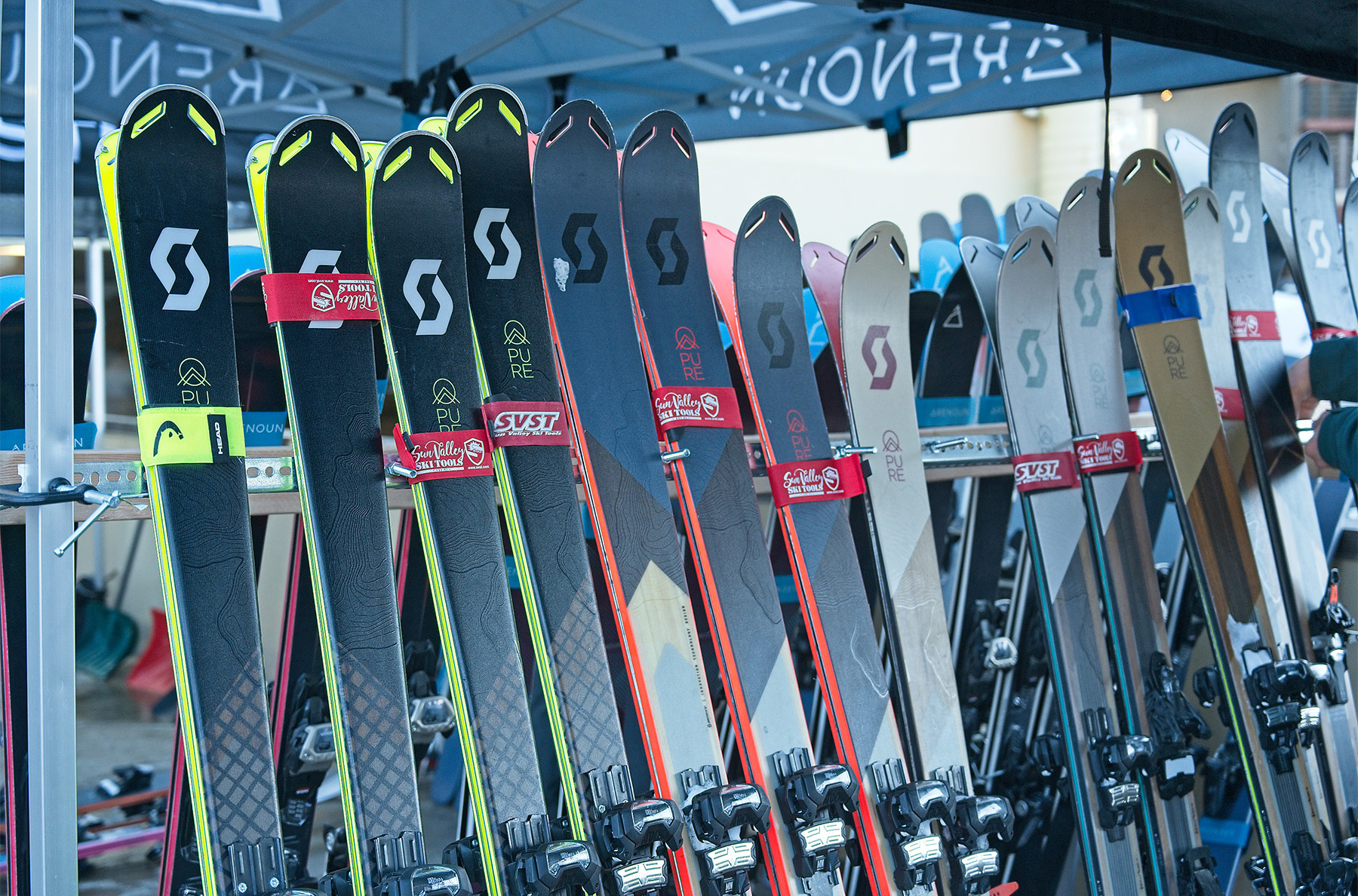
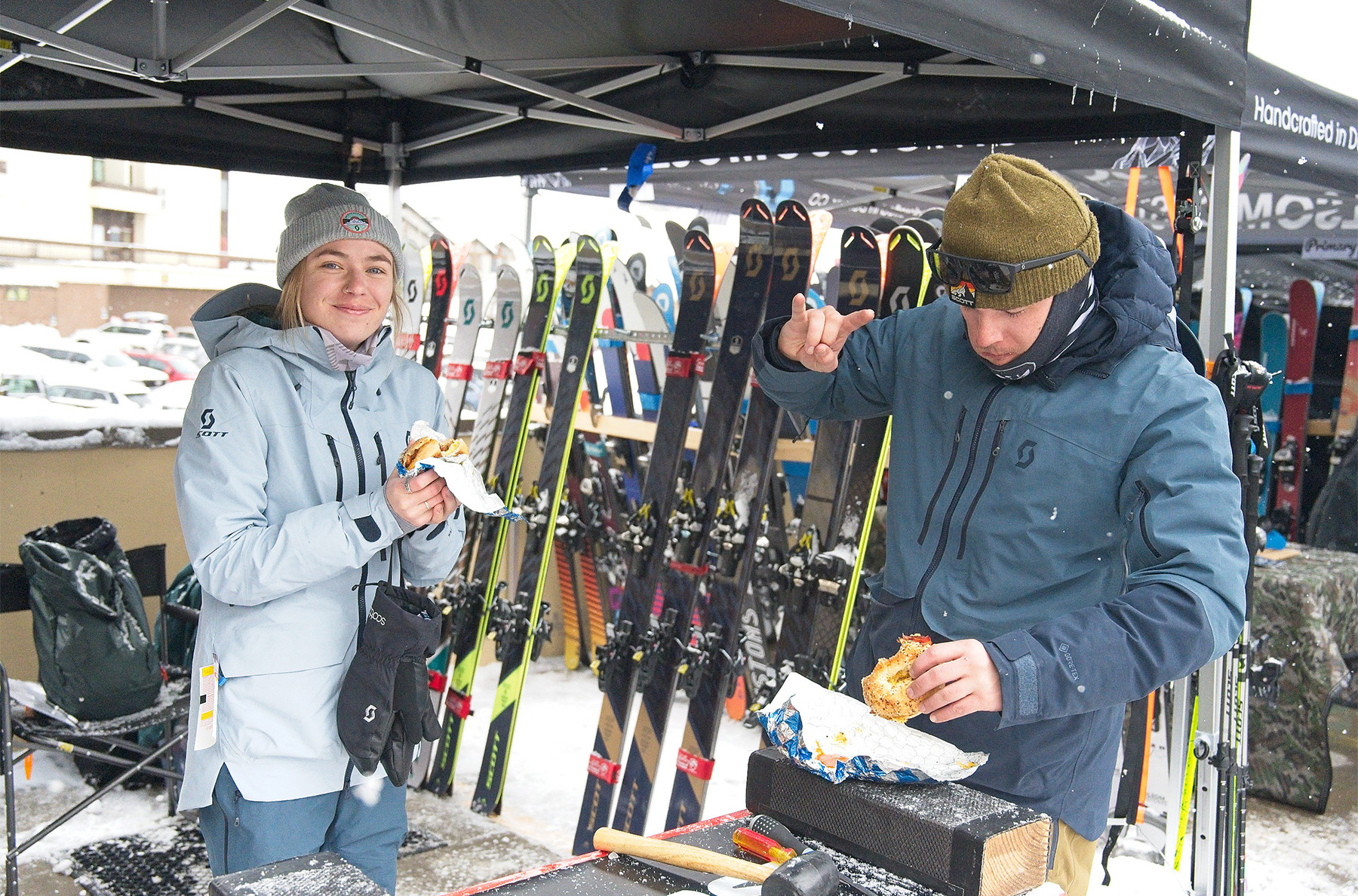
Stockli Skis
Stockli brought their lineup to Blister Summit 2023 for the first time, and it was great to get on several skis that our reviewers hadn’t yet had the chance to try. For 23/24, they’re expanding their Montero line of piste-oriented all-mountain skis, with the addition of the Montero AS and Montero AW. The former is a tighter-radius ski designed for smaller turns, while the Montero AW reportedly replaces the Nela 80 and aims to improve upon that ski’s on-piste precision. The Stormrider 88 and 95 also see updates, with a new, lighter core construction and a slightly updated shape and mount point for the Stormrider 95; the size splits have also decreased with the Stormrider 95, from 9 cm to 6 cm. The Stormrider 102 remains the same, and you can check out our Flash Review of it for our initial on-snow impressions.
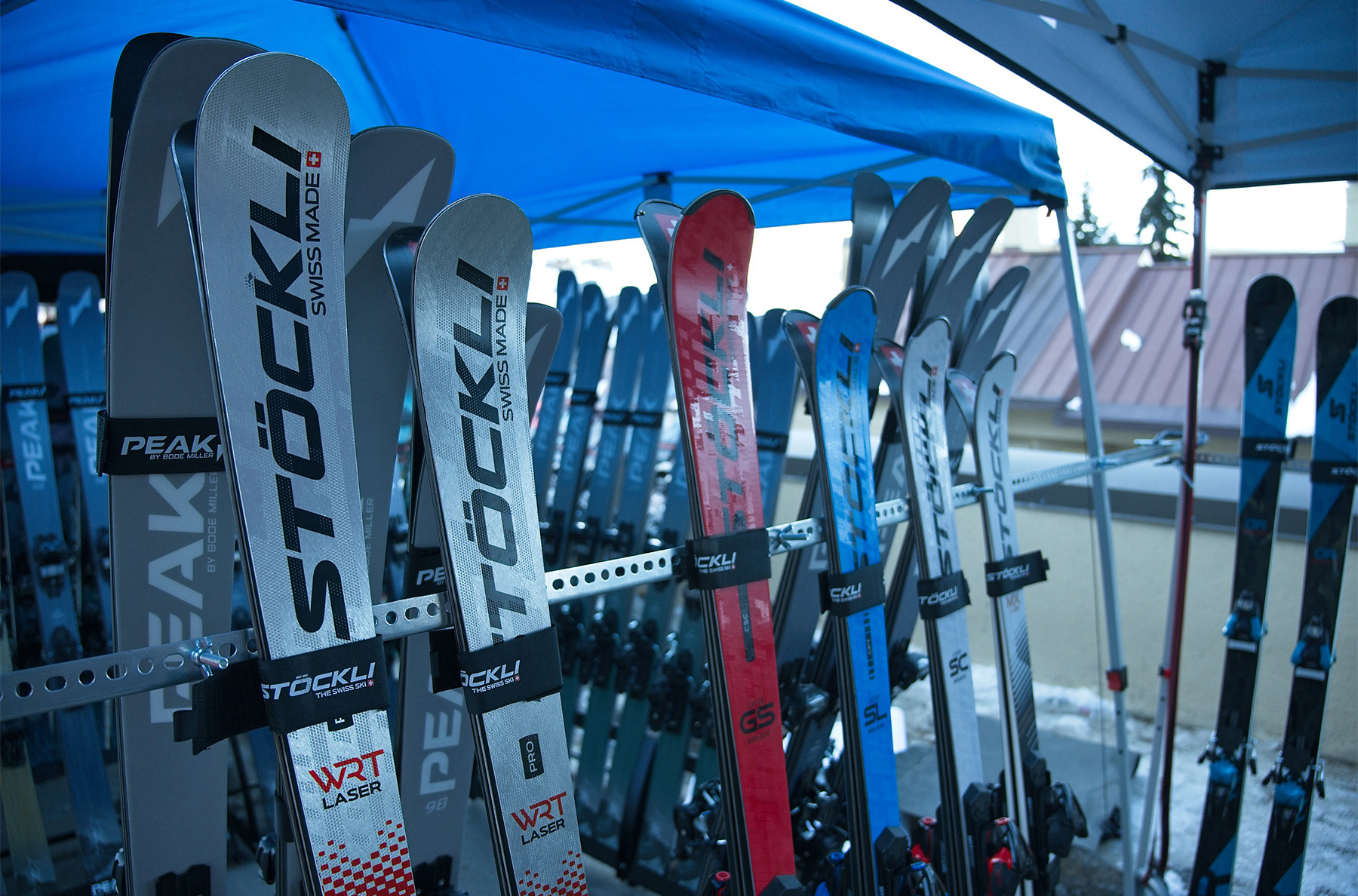
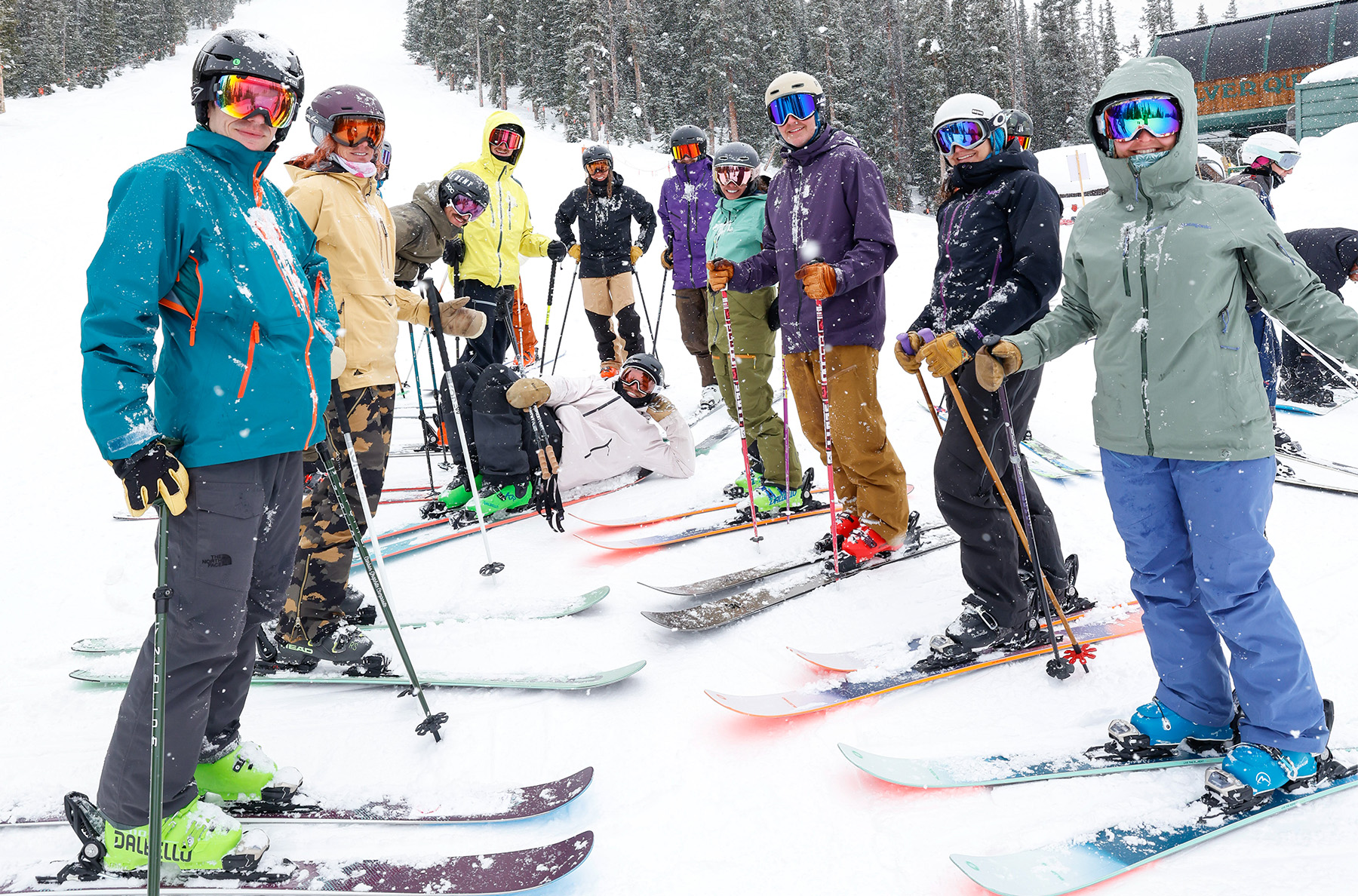
Volkl Skis
Volkl launched two skis that are both 114 mm underfoot, though they’re pretty different. The new Blaze 114 brings the Blaze 106’s lightweight construction to a wider package, positioned as an option for both human-powered and lift-accessed skiing for those who prefer a lighter, more accessible ski. The Revolt 114 is more of a big-mountain ski, with a heavier, stiffer build; while its mount point is further back than the other Revolts, it’s not nearly as directional as the Katana 108 — it’s supposed to be the fall-line-oriented alternative to the freestyle-oriented Revolt 121, and it proved to be a pretty game-on, stable ski at the Summit.
Additionally, the women’s Secret 102 gets all the updates that the Mantra 102 received for the 22/23 season, and as we noted in our review of that ski, we’re pretty big fans of the changes.
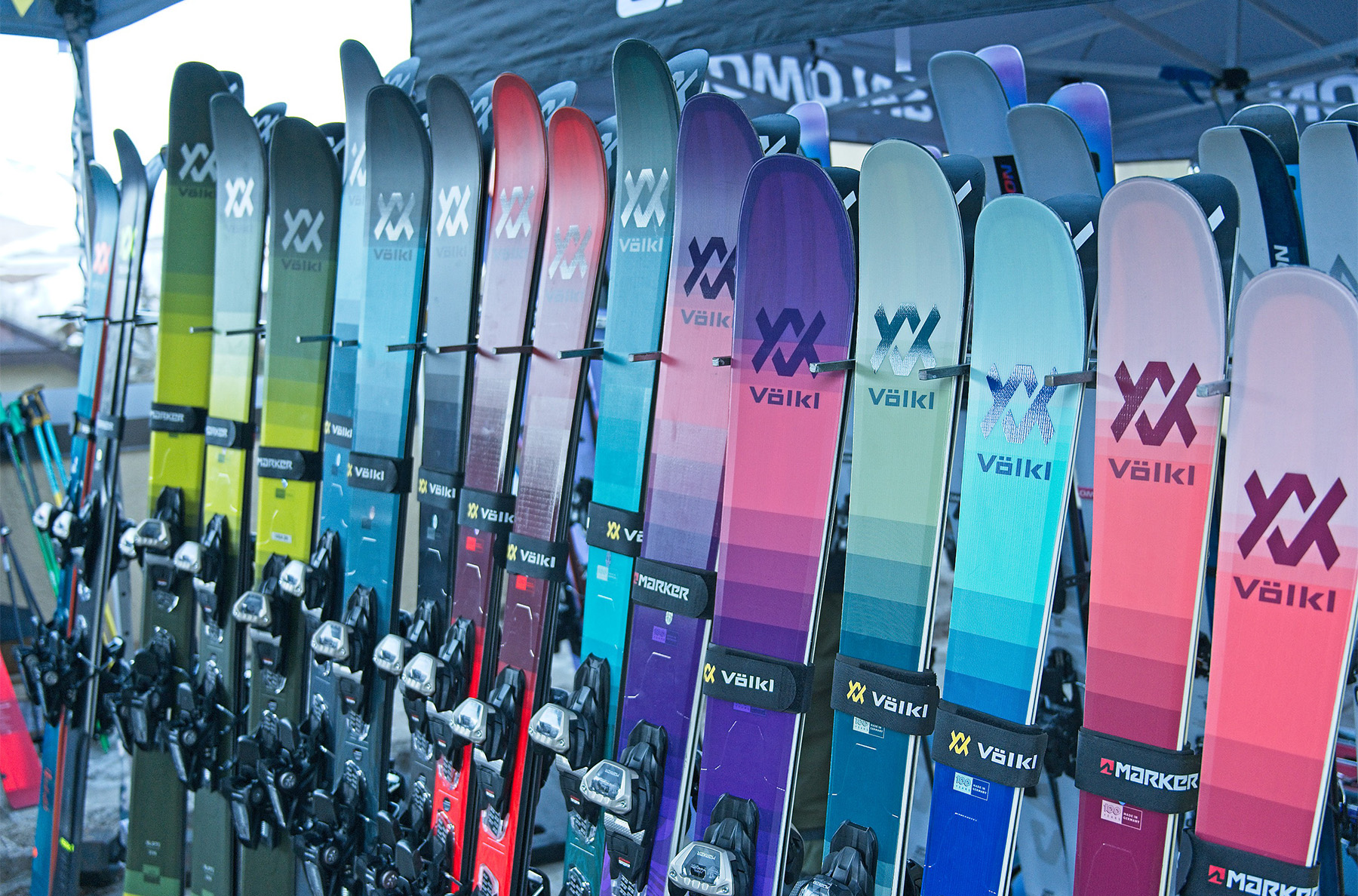
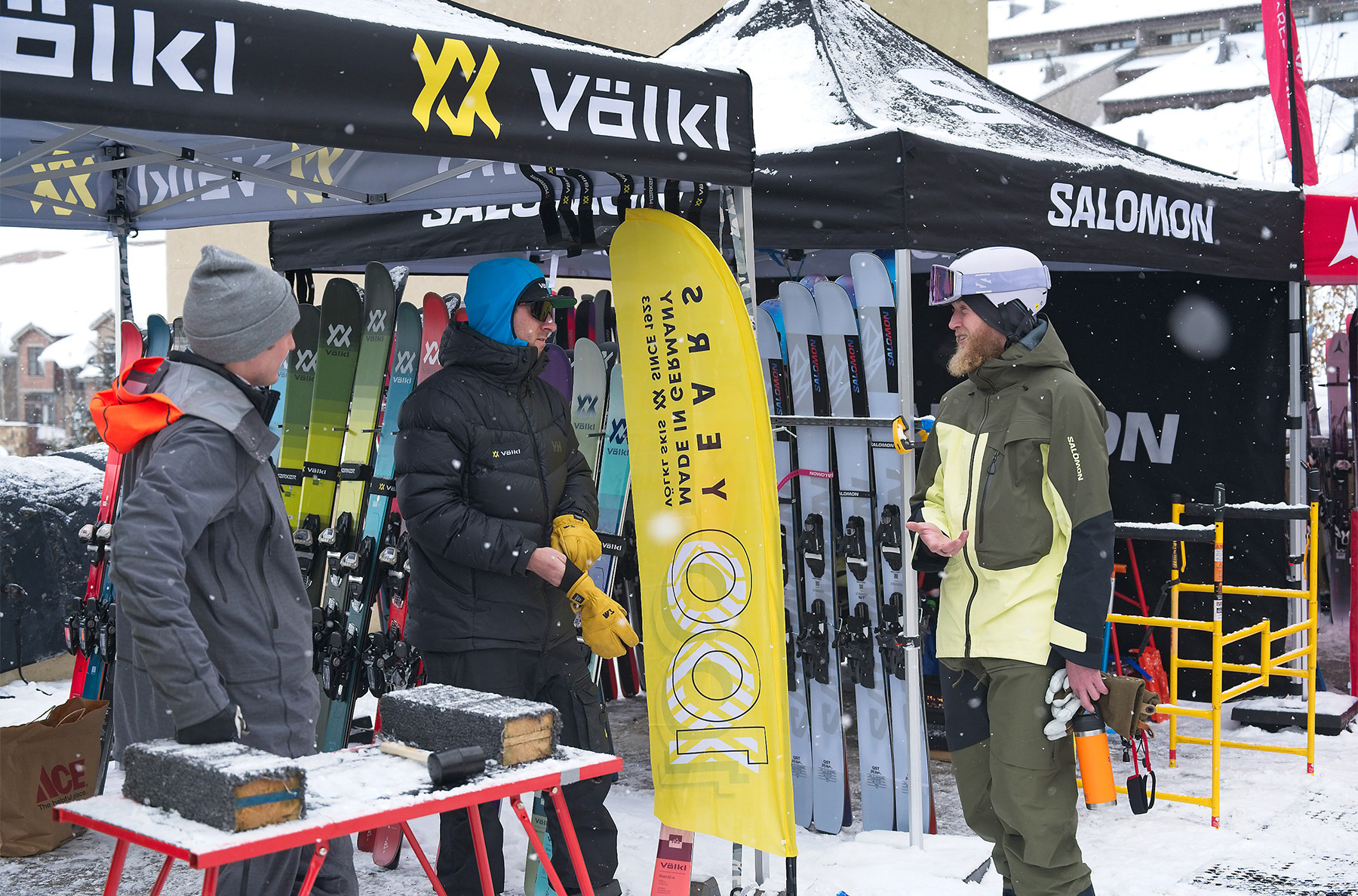
Wagner Skis
Wagner returned with several of their semi-custom “Factory” skis and some others that showcased their full-custom building process. They brought a new 91mm-wide semi-custom ski that’s proven to be extremely promising so far — it’s an excellent carver, but we’ve been really impressed by how capable it feels off piste, too. We’ll be saying more about their skis in the future, and potentially the new, wider, pow-oriented ski Wagner also brought to the Summit this year, too.
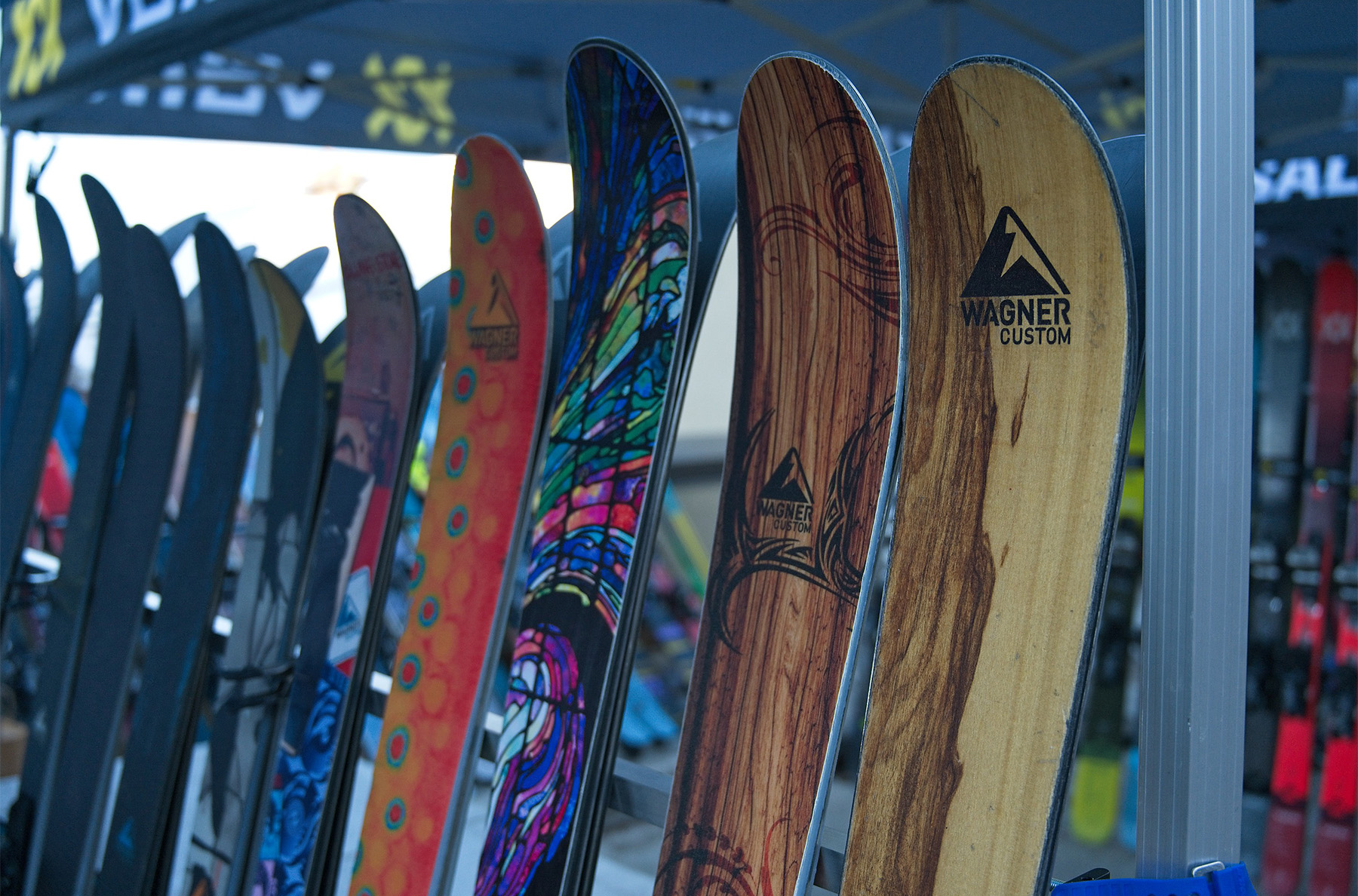
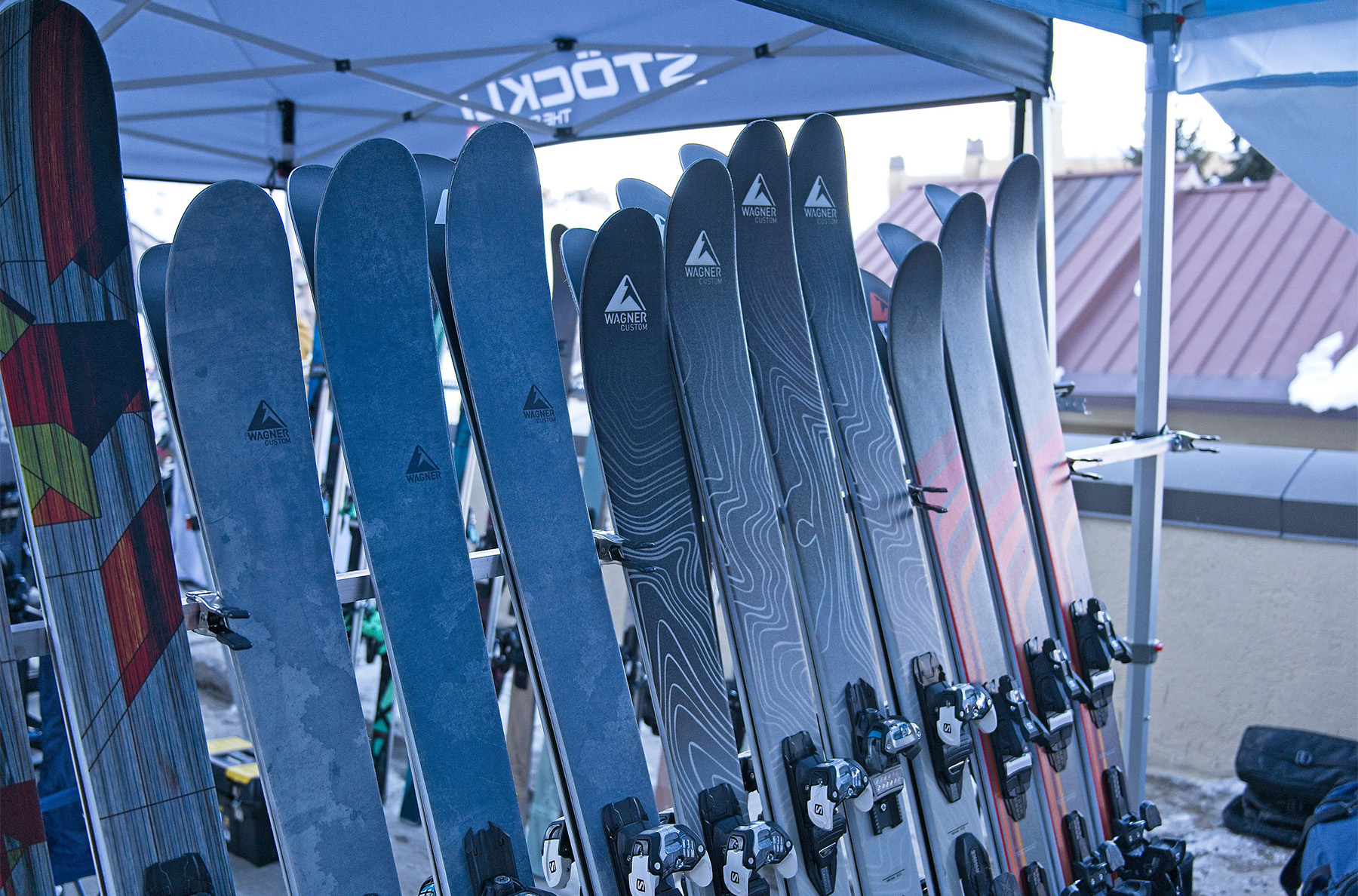
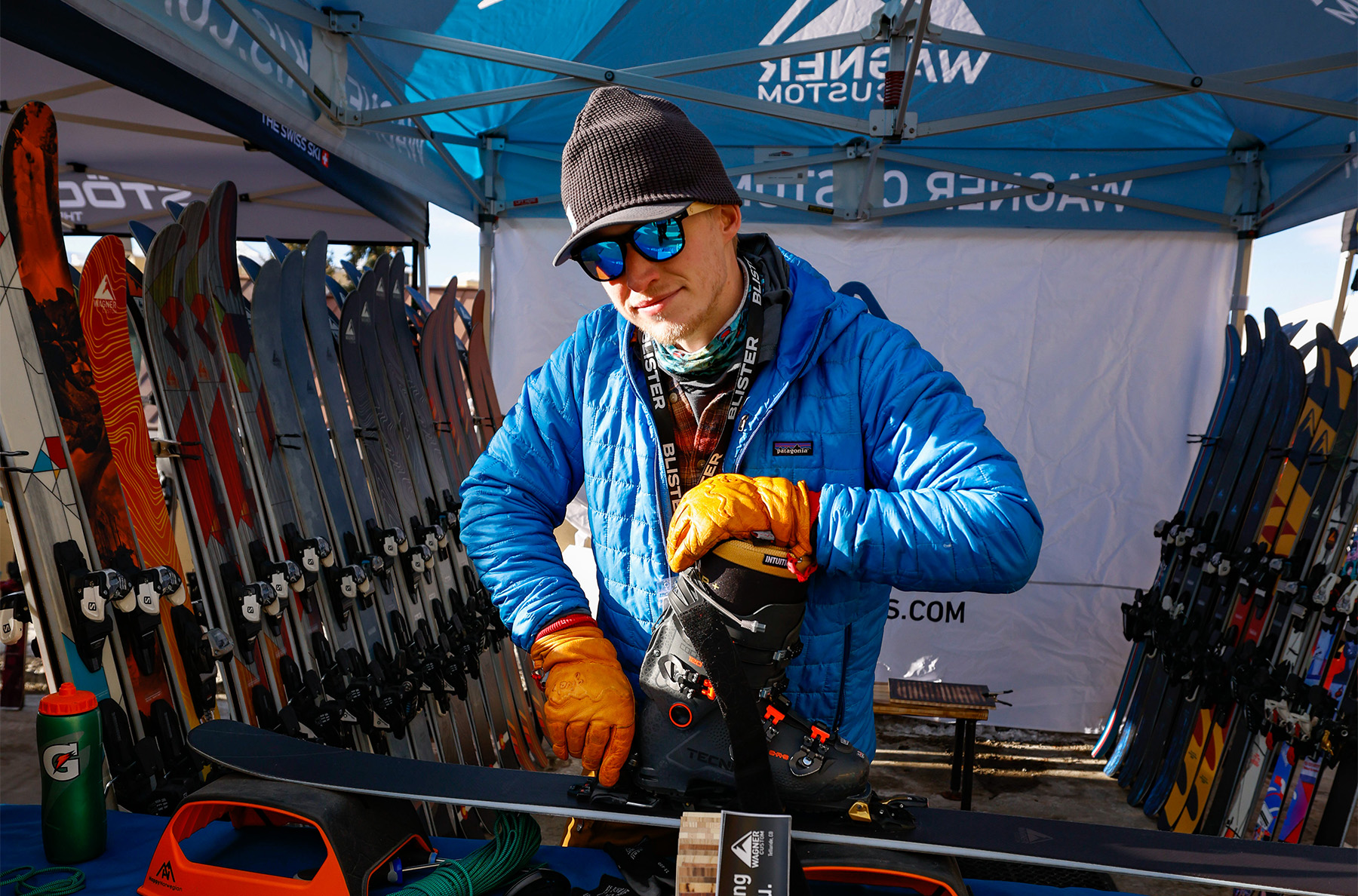
WNDR Alpine Skis & Snowboards
Following the introduction of their BelleAir snowboard, BelleTour splitboard, and revised Intention 108 ski, WNDR Alpine is working on several new models for 23/24. On the board side, they’re launching the new Shepherd split, which is Nick Russell’s new signature model and is meant to suit a more playful, surfy style than the more charging-oriented BelleTour. On the ski side, they’re updating the Vital 100, slimming it down just a touch to the Vital 98, and tightening up the sidecut radius just a bit to make it more engaging when carving. On top of that, they’re adding the brand-new Nocturne 88, which will be their narrowest and lightest model. It was designed with more of a focus on minimizing weight than their other skis, and is meant for days when the snow is likely firm, you’ll probably be walking for quite a while, and lower weight is a priority. As always, all the new skis and boards feature WNDR Alpine’s algae-derived Algal Tech construction and Spiral Made construction methods, which help turn manufacturing waste into construction elements of new products, such as binding reinforcement plates.
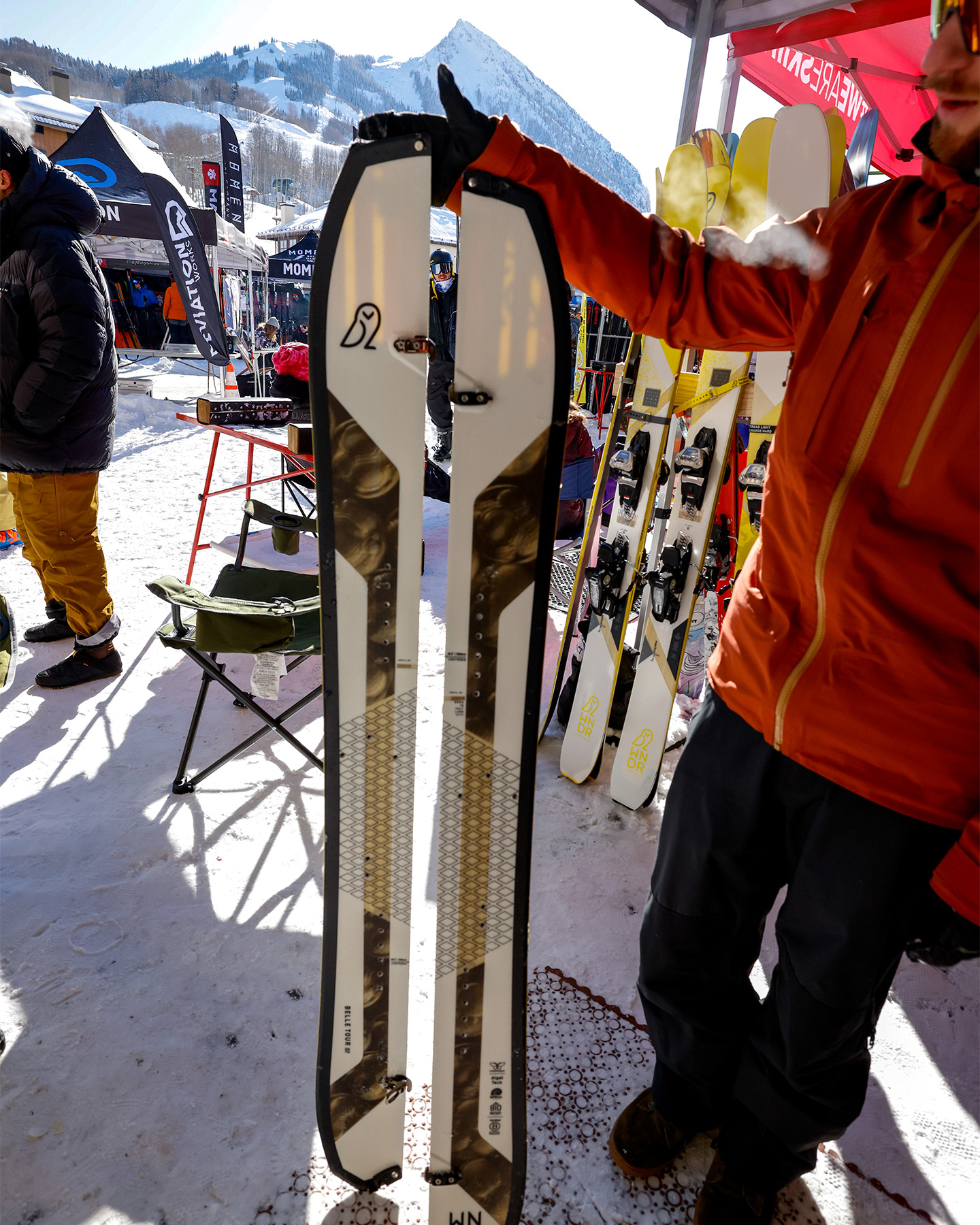
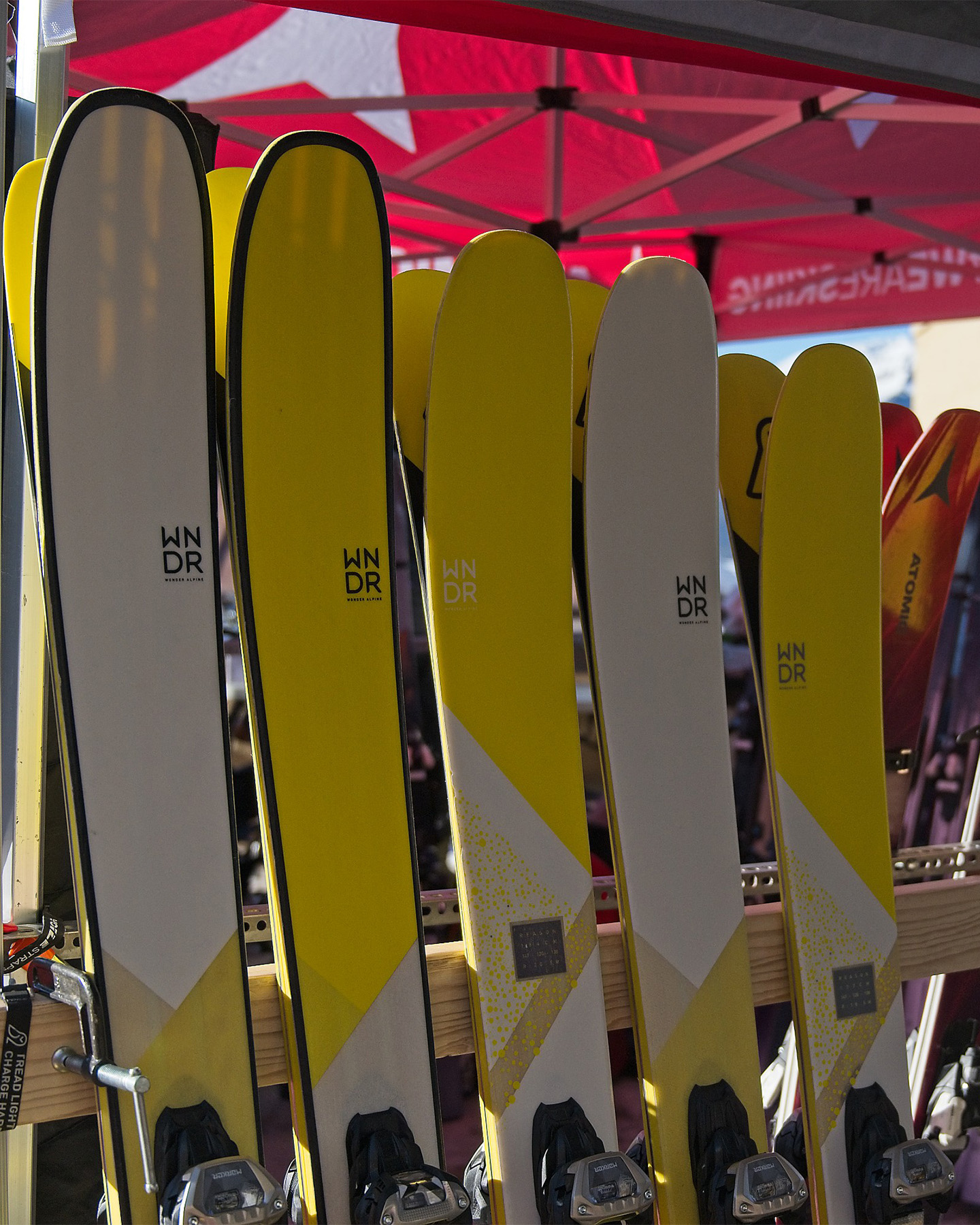
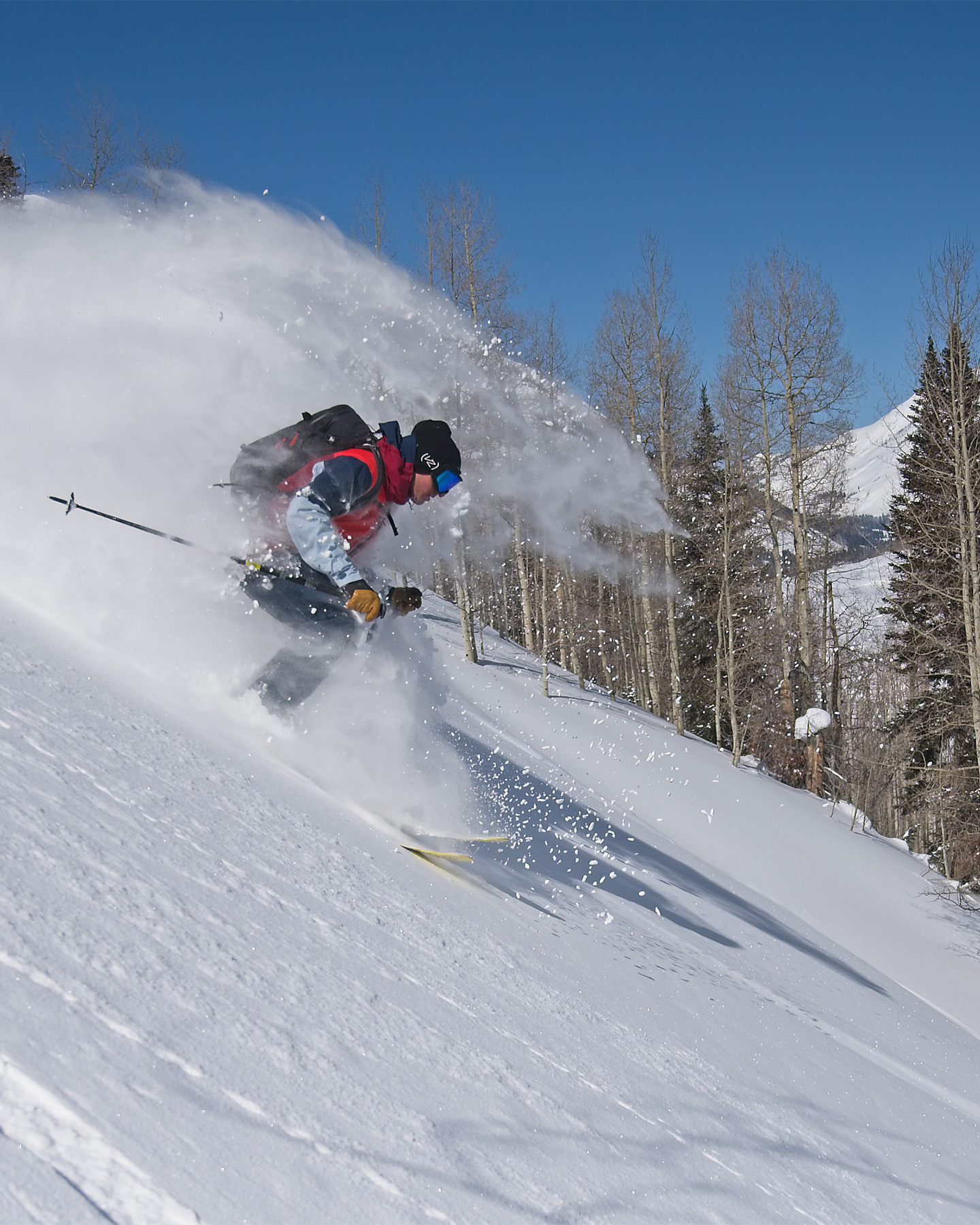
ZipFit Liners
ZipFit’s liners were some of the most popular products at the Summit; they went home with way fewer liners than they came with, since almost every person who tried them purchased them (including several of our reviewers, myself included). They’ve been revamping their lineup over the past couple of years, with recent additions including the touring-oriented GFT, and the durability-oriented Workhorse, which features a leather interior and exterior, but both feature ZipFit’s now-famous “OMFit” cork, which can be added and removed over the (long) lifetime of the liner.
Also, a reminder that, if you enter before Friday, February 24th 2023, you have a chance to win any pair of ZipFit liners — click here to enter (giveaway ends 2.24.23).
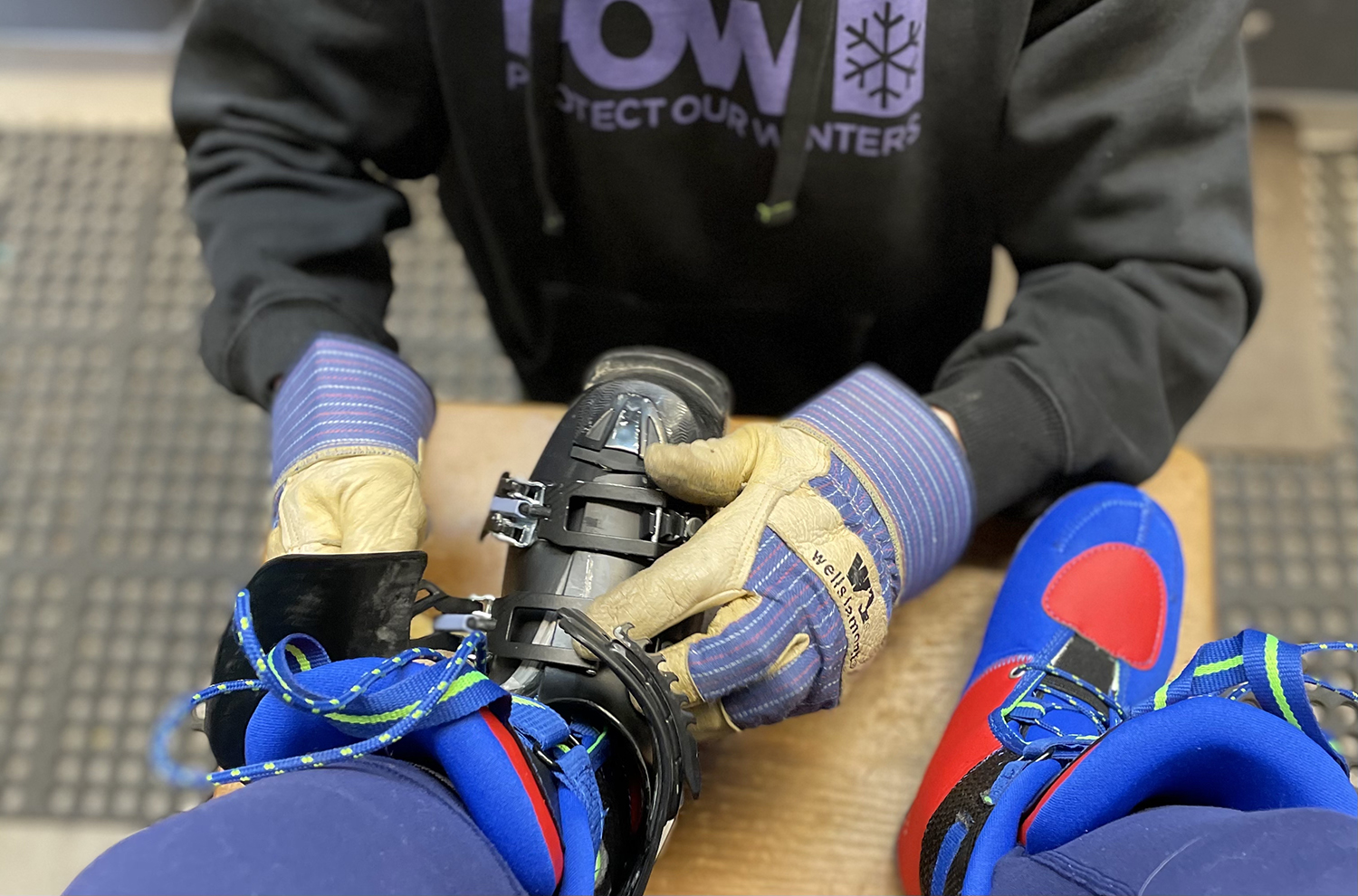

Will enjoy digesting all this, thanks for sharing some insights and some new names (for me at least). Looks like another amazing event, got to figure out how to make it in 2024 :)
Apparently Dynastar has a M-Tour 108 coming out next year. Do know if it has the same rocker profile as the M Free 108?
Fischer has an apparently stiffer version of the Transalp touring boot, with more carbon in the cuff or something. Any info on that? Is it just stiffer laterally or in forward flex too? Similar weight?
So much fun checking out all the brands and talking shop with all the attendees, reps and athletes! Everyone was so kind and engaging, there was no ego or elitism to deal with. I Also loved the group rides as a chance to learn the mountain and try to follow the pros or reviewers down a line to learn new techniques and strategies. Got on 20+ skis and yet that wasn’t nearly enough with all the offerings available, guess I’ll just have to come back next year. Cheers!
Was great meeting you Isaac! And yeah, come on back!
Keen on the Black Crows reviews, were they there?
Any details on the Nocturne 88? Mostly just wondering if shape and mount point will be similar to their other skis? If so, it would hold a pretty unique place in the market as a relatively center mounted, fast and light(ish) touring ski. And it would be a very quick buy for me.
I’ve been intrigued by Zipfits for a number of years, but what’s kept me away is their strong recommendation to put the liner on first prior to the shell. I know it’s not that big of a deal all things considered, but as someone who will frequently go up to the hill for just a lap or two before work or on lunch, it seems like an extra hassle before I can actually get skiing. Has anyone had a good experience with just using them as regular liners and leaving them in the boots most of the time? Is the fit and performance difference noticeable by using the Zipfit recommended method?
I have lace up liners that aren’t zip fit and prefer it in some ways. It lets you get the liner tight on your foot before stepping in and makes stepping in and out of the boot easier (in my case I can’t fit my foot in with the liner already in the boot). As far as performance, I doubt there would be an issue if you wanted to leave them in. The main issue I see is if the laces are loose and get stuck between the seal on top of the foot and allow a gap for snow.
Hi Ethan,
It is recommended that you use the “World Cup Entry” (put the liner on your foot first, then step into the shell) with a ZipFit liner for two reasons. First of all, by using the lace system and power strap to really secure your heel back in the heel pocket of the liner prior to entering the shell, it will complement some of the performance benefits that you want when moving to a ZipFit liner to begin with (namely, a very secure heel fit).
And secondly, if you repeatedly shove your foot in the liner, inside the shell, it will gradually push cork down into areas that you don’t want it. While I used to think the World Cup Entry seemed like a pain, I can now say that it takes the same amount of time, and after a little practice, it’s about as easy (or difficult) as a traditional boot entry. The only time it’s very difficult is if the shell is cold, but I would argue that getting boots on and off when the shell is cold is difficult no matter what. If ZipFits are intriguing to you, I’d say they are still worth a look.
I just want to chime in and 2nd Kara’s comments. After doing a world-cup entry a few times, it might take a few seconds longer than just stepping into your boots with liners left in … but we’re literally talking about less than 60 seconds.
Also – and this should not be underrated … unless you are good about getting your liners on a boot drier the minute you are done skiing … you should be pulling your liners out of your shells anyway. And many people (including Matt Manser) argue that you should always pull liners out even if you are also going to use a boot drier.
Just some other things to consider.
(Also, when I use a Zipfit either with a Lange boot or HEAD Raptor, stepping into the shells and getting out of the shells is always quite easy on and quite easy off.)
Not sure if the Stance really needs to be more accessible? They didn’t feel exceptionally burly as I demoed them, I’m wondering if there will be enough differentiation left compared to the QST line with these changes.
I’ve skied the new 102, can’t compare to the old version but the new one seemed to be in a good place. They carve and charge, manageable in bumps but clearly not what they were designed for. (Though I preferred the Mantra 102 for everything but short turns)
I can’t see you out there measuring mt. points at your event, but any idea on mt. pt for the Revolt 114?
-7 cm is my best guess based on what I’ve heard/seen/felt
Did you guys ski the new Dalbello Cabrio’s? if so can you compare them to the Krypton’s?
Peak Skis review PLEASE
Does the Kaizen construction also replace the Pagoda Tour construction next season for DPS?
It does not. Pagoda Tour stays in the lineup.
Any more info on the Revolt 114? Also interested in the Dancer 4 – both skis are supposed to be on the chargey side of the spectrum – wondering which floats better vs which is better in chop.
I’m happy that the super fatty is not dead despite the trend of so many ski companies to denounce them as too clumsy and limited for resort skiing. True, something with a waist over 120 mm. is obviously aimed at deep pow – a heli/cat tool, but there are days at certain resorts where massive dumps happen, and it’s great to have these mega boards in the back of the truck, just in case! I have been on a DPS Lotus 124 alchemist build 2.0 version for days where I am cat or heli skiing, and for these magic days at a resort, and sadly the tails are beginning to delaminate. Use and abuse! So now I am looking at the K2 Crescendo in 186cm. as a possible replacement. I’m hoping that Paul Forward gets a pair soon so I can get his opinion. Here’s a thought , have a shoot out with a few different models at the same time over a two week test period, and report the results. Cheers!
DHJ
Love it! I really need to go the summit next year. I’m gonna make it happen!
I am over 65 and have been skiing my entire life but as happens with age, unfortunately I am slowing down and losing strength. One of the struggles I have everyday on the slopes is getting my boots on and off. I currently switch between my Nordica Speedmachine 110s and Salomon X-Pro 120s, both of which fit me well once I get them on, but are almost impossible to get on or off once they are cold. I was almost resigned to quitting my favorite sport when I recently discovered the Nordica HF series of rear-entry boots. I don’t have a professional boot fitter or even a good ski shop near me, so I purchased two pair of the Nordica HF Pro 120 (one 27.5 and one 28.5) online. I am undecided which size to go with yet and need to wear them both for a while and choose between performance and comfort. In the mean time, could you put these on your list of boots to review soon? I would be grateful for any feedback you have or from other skiers in my “advancing-age” category. Thanks for all you do!